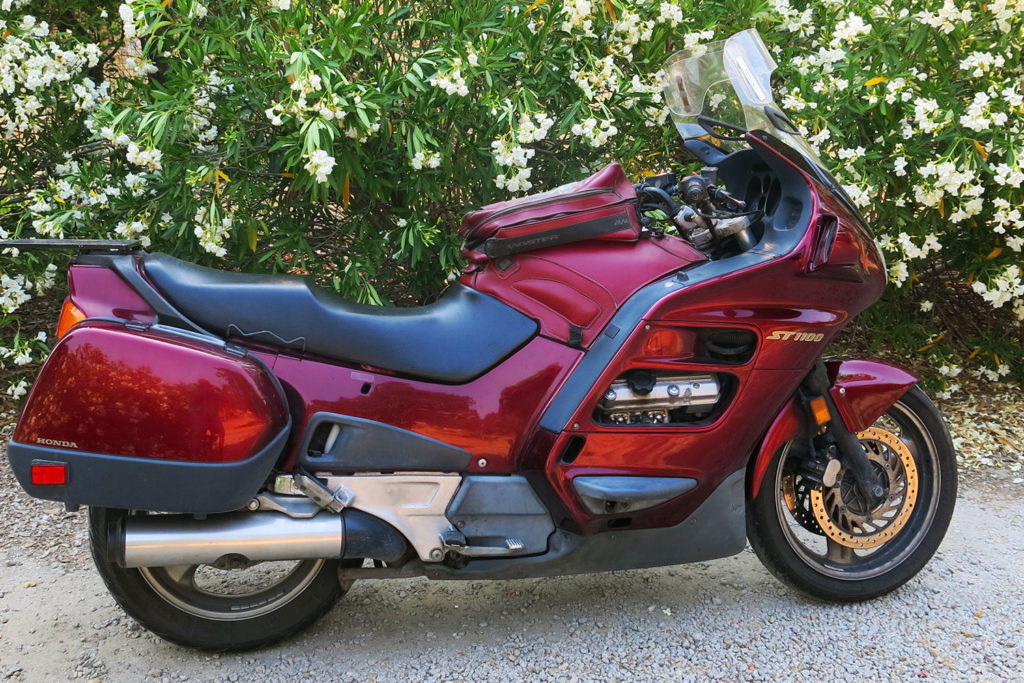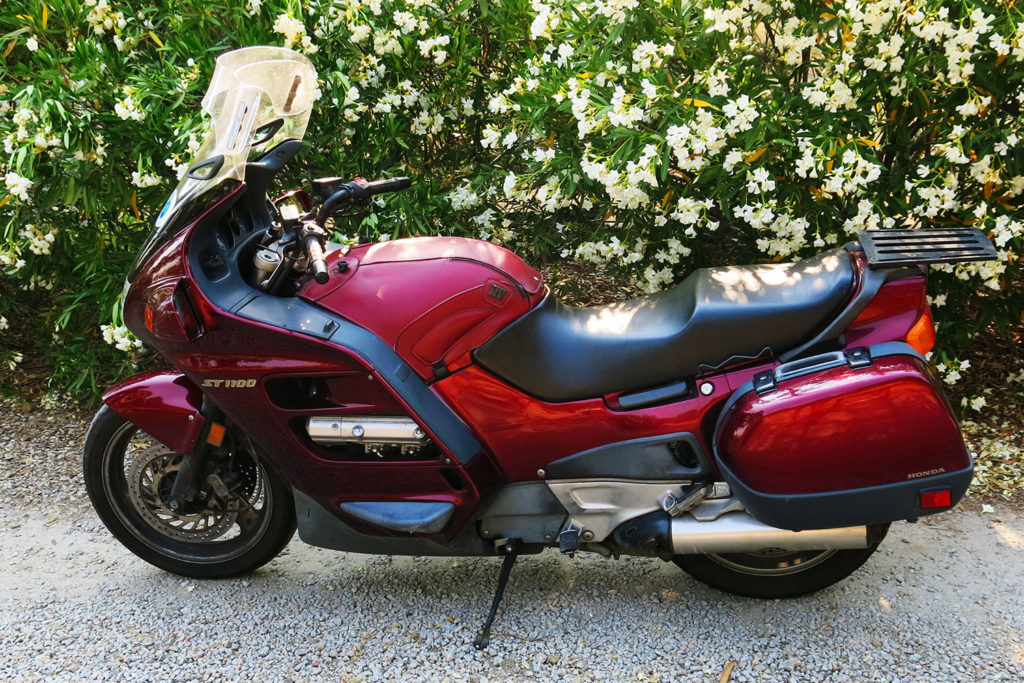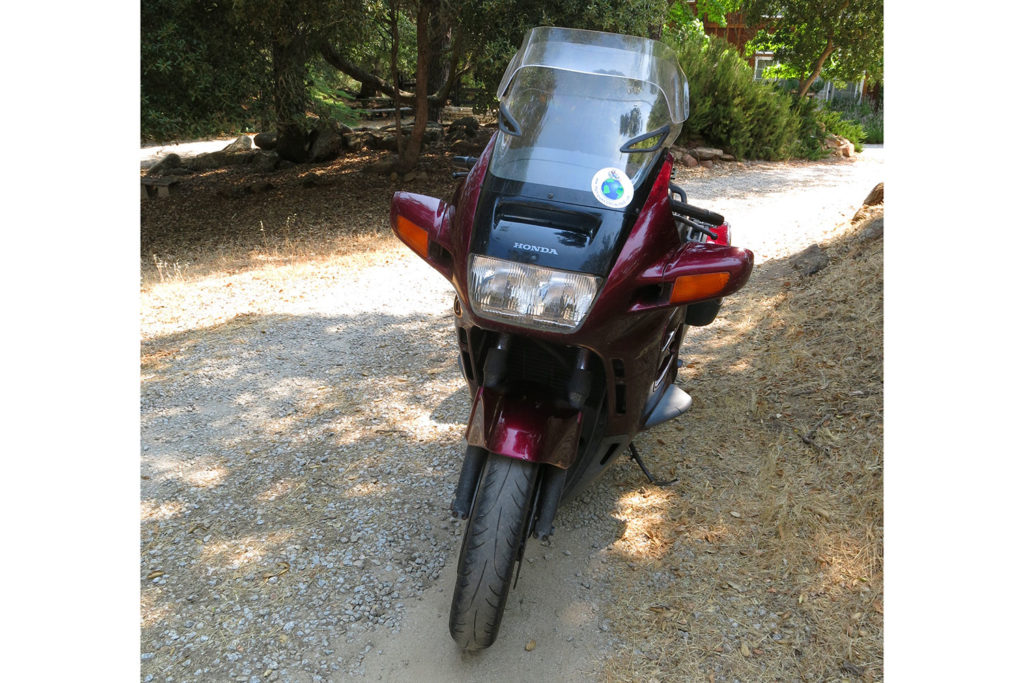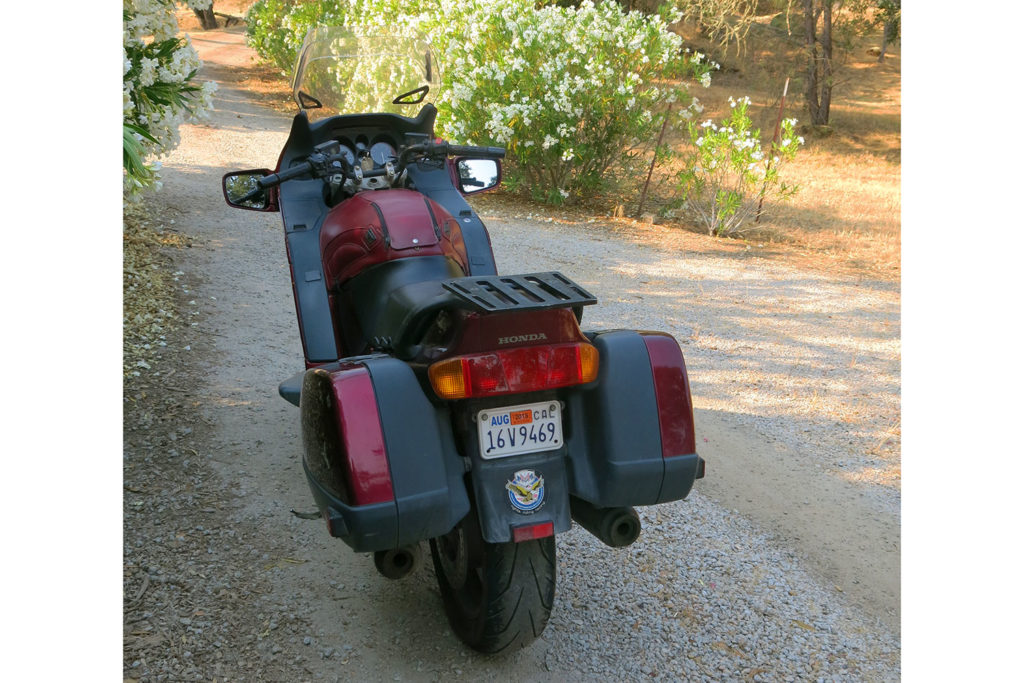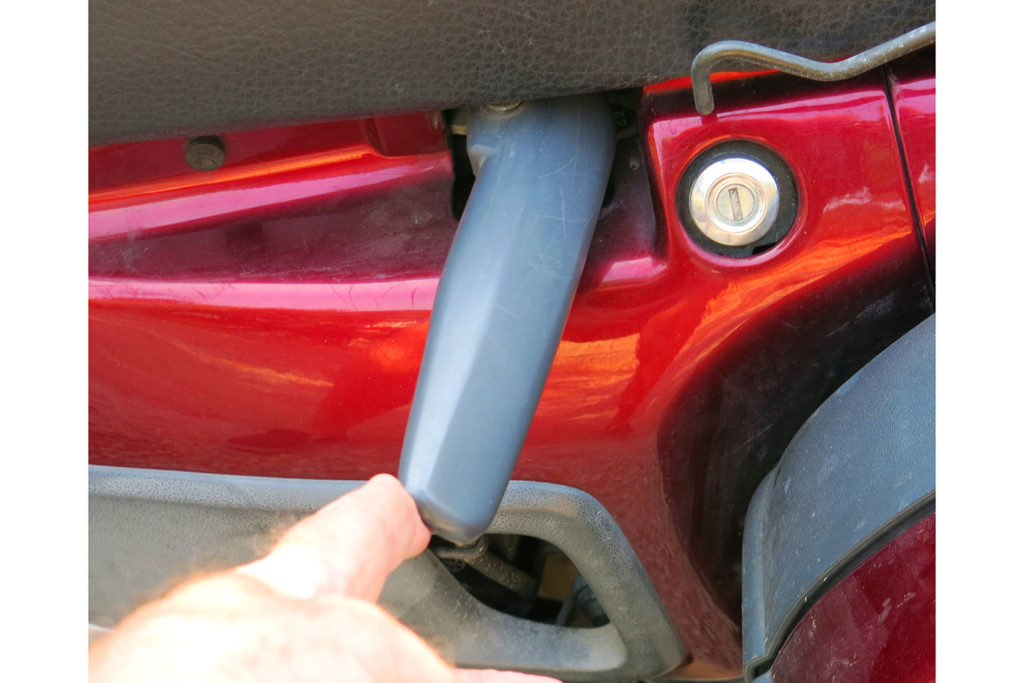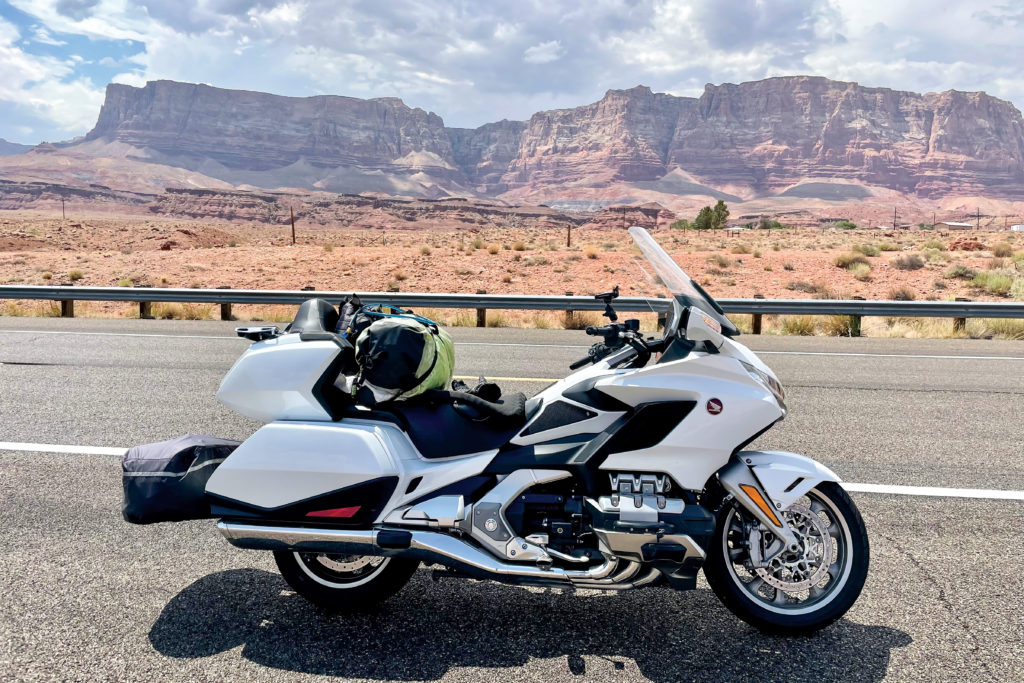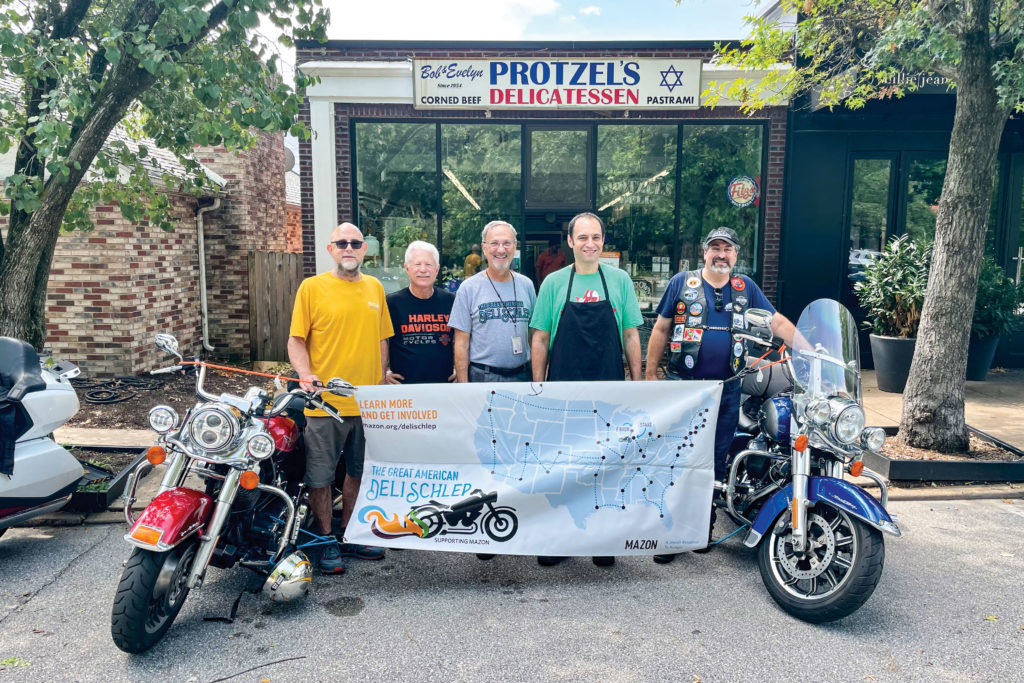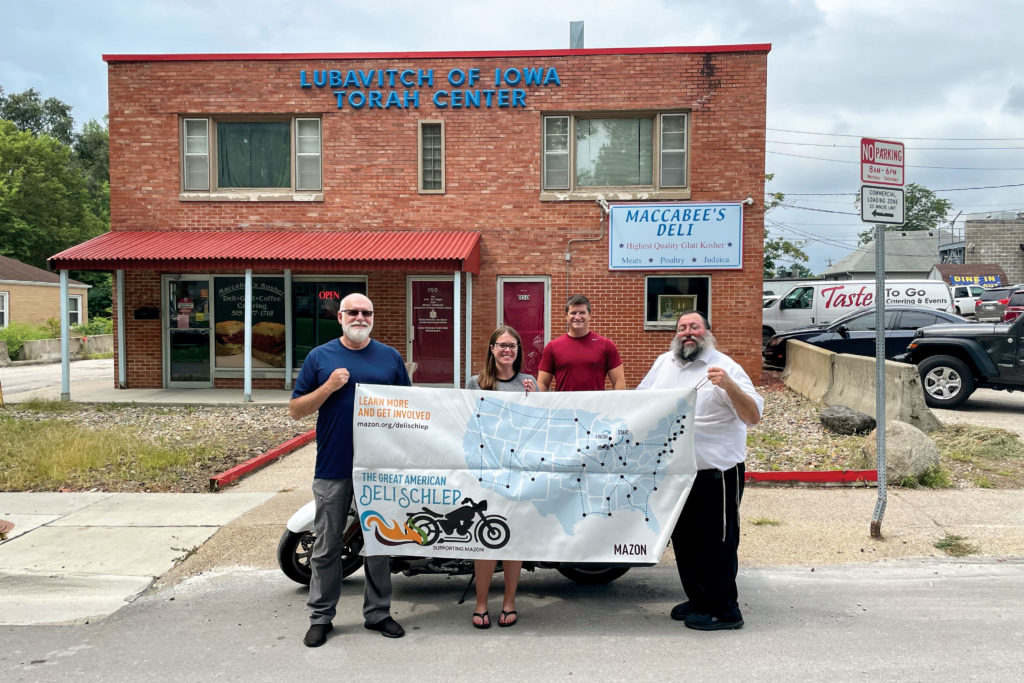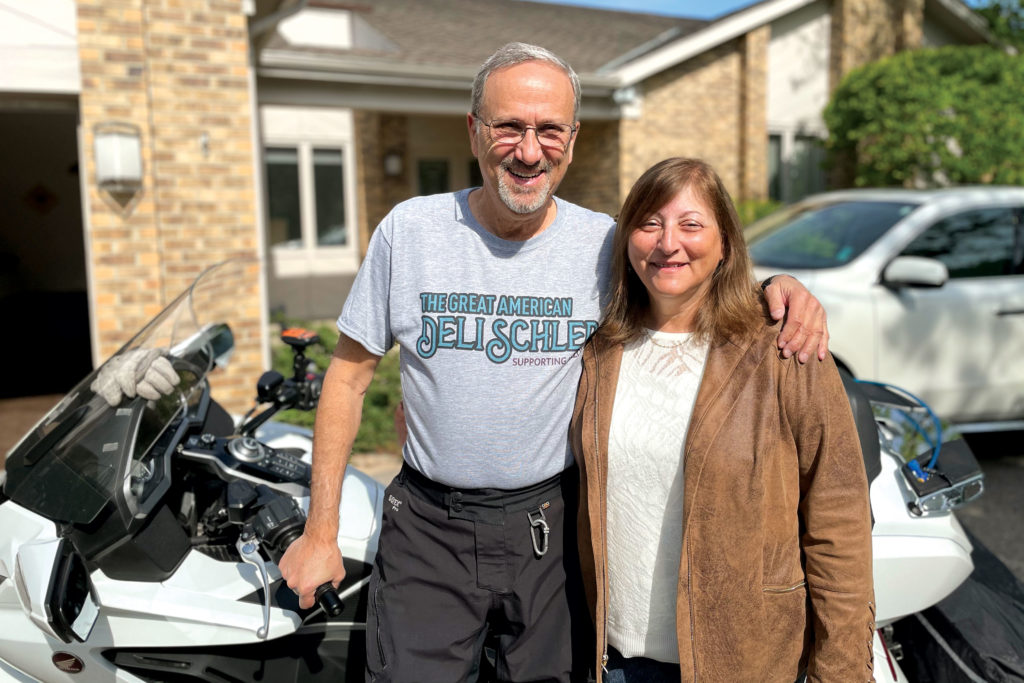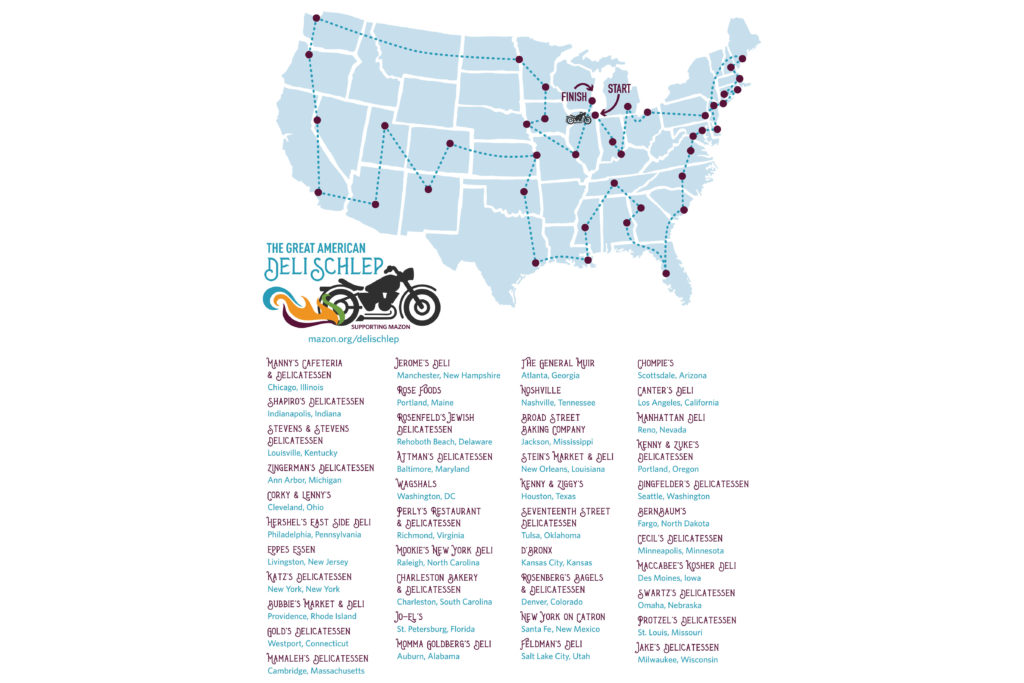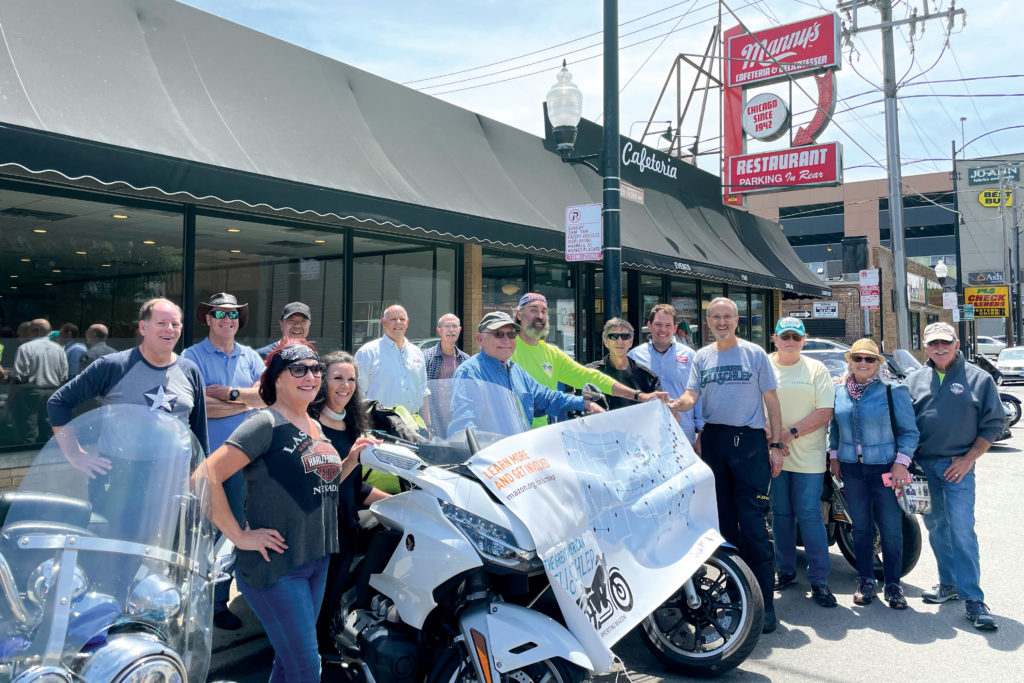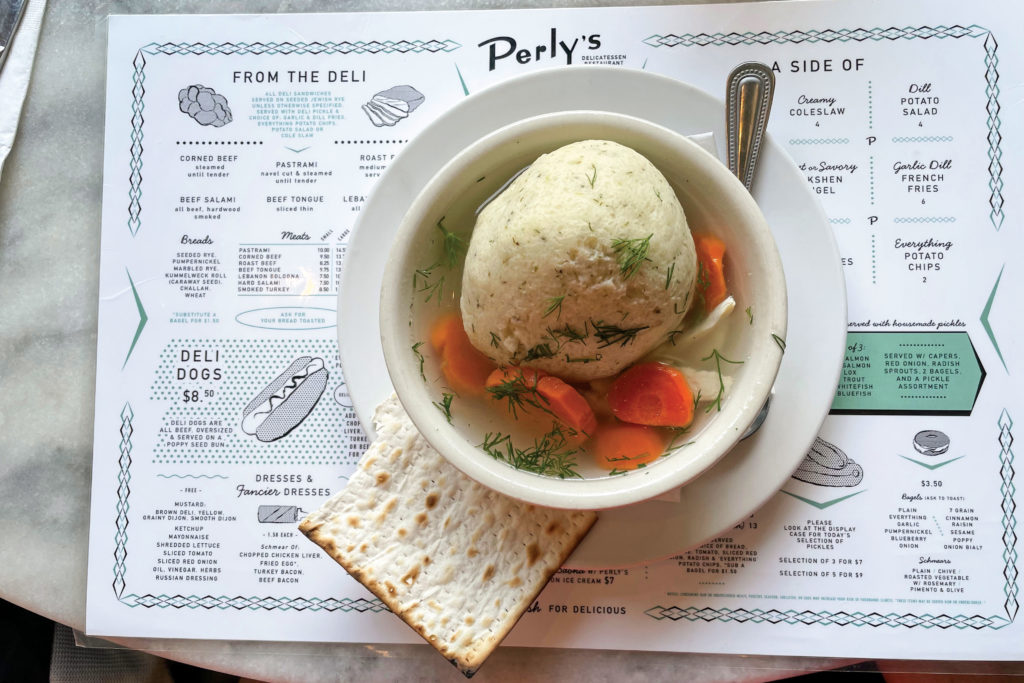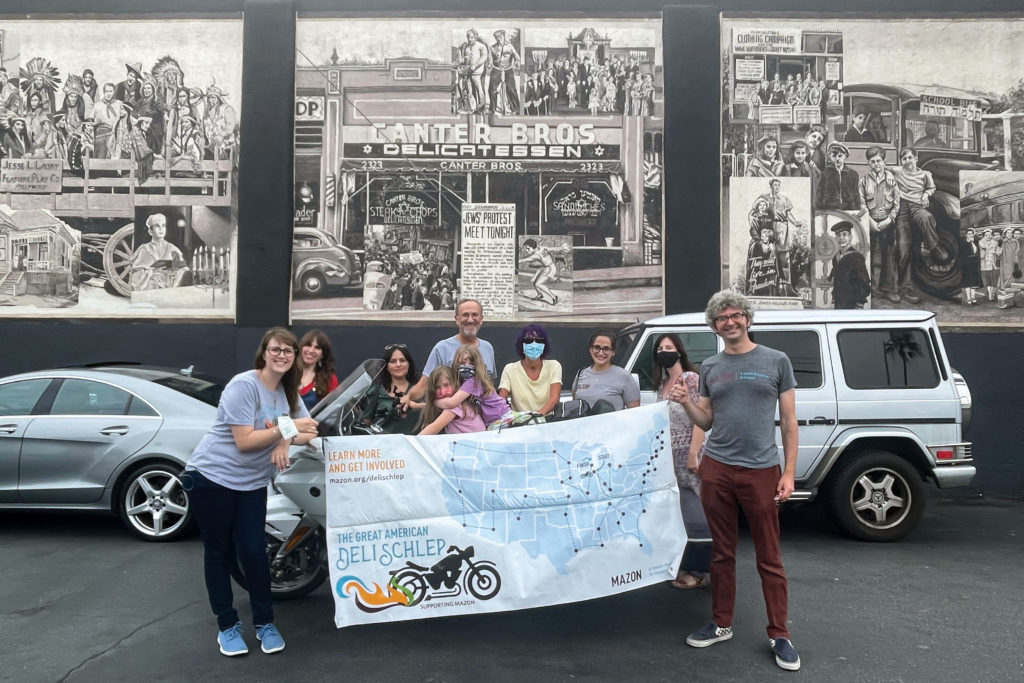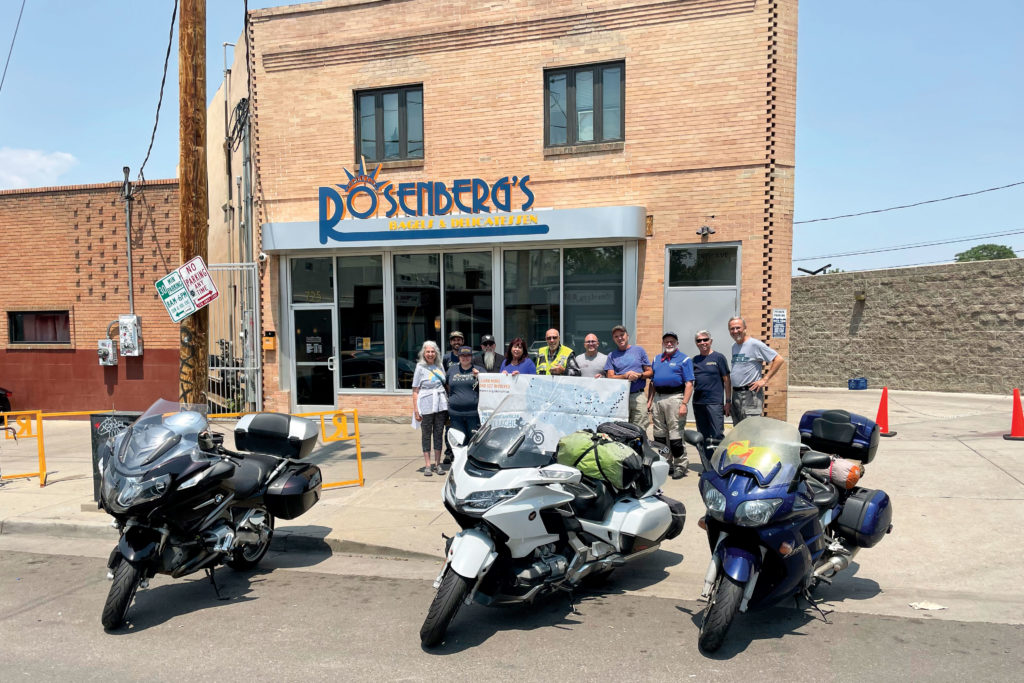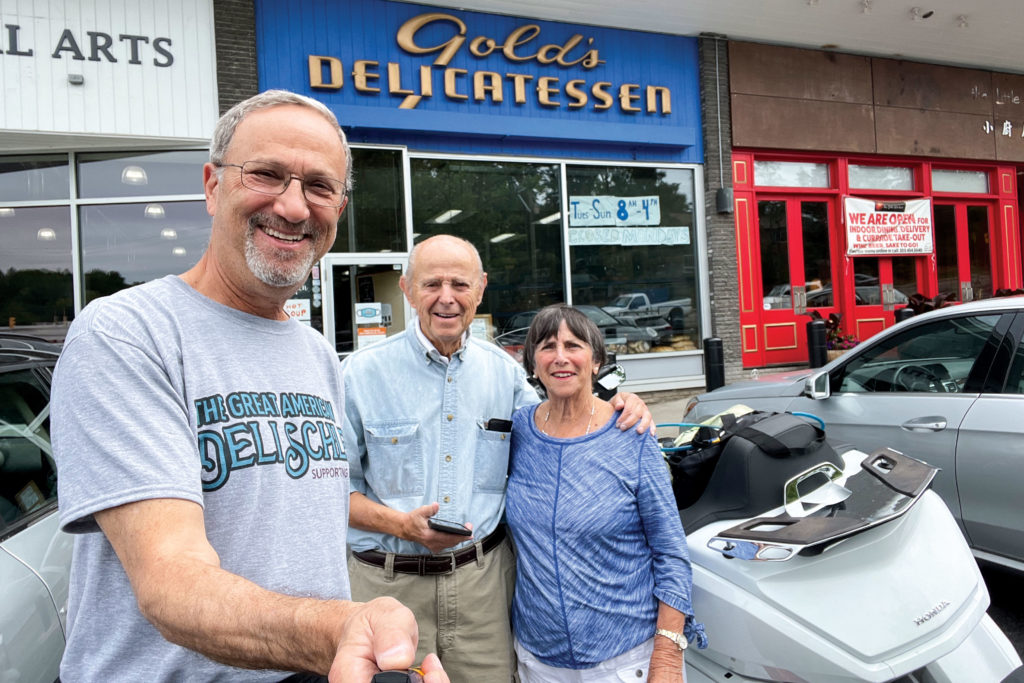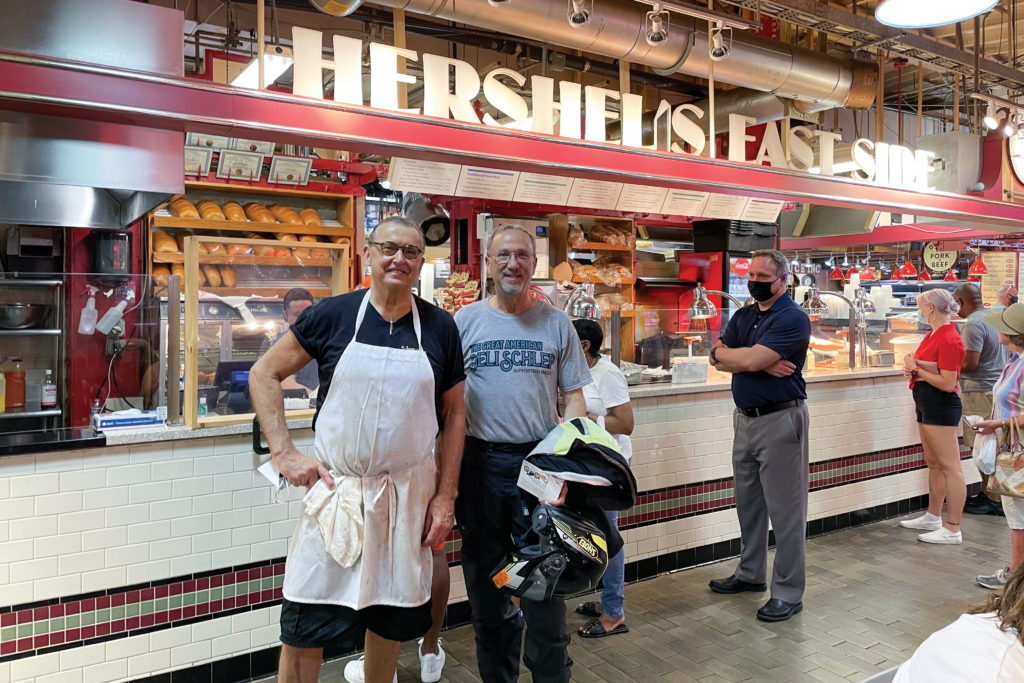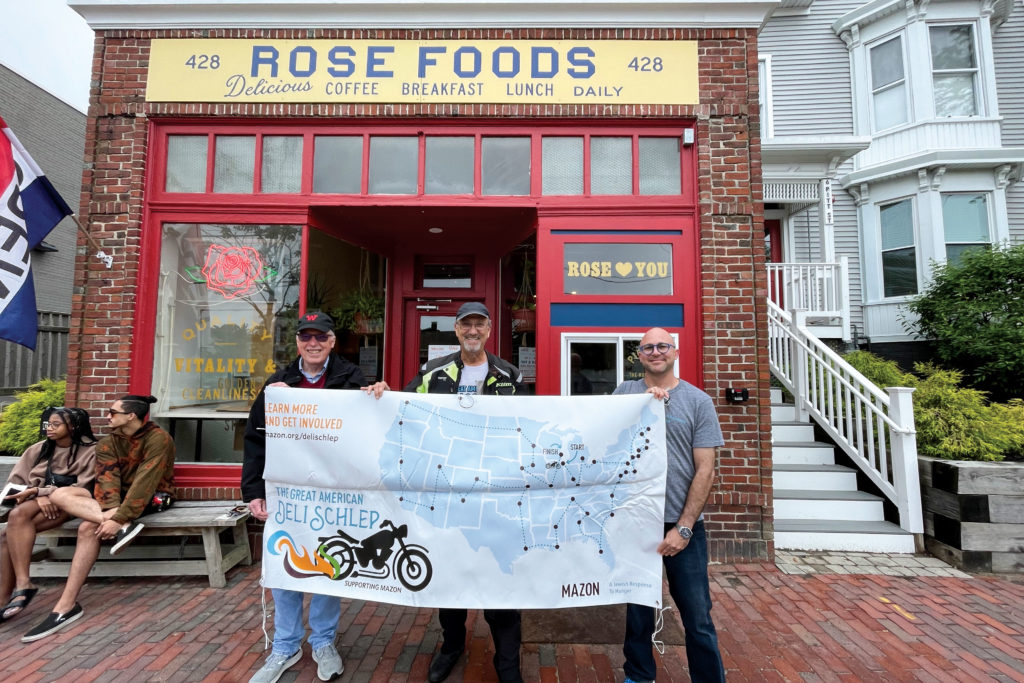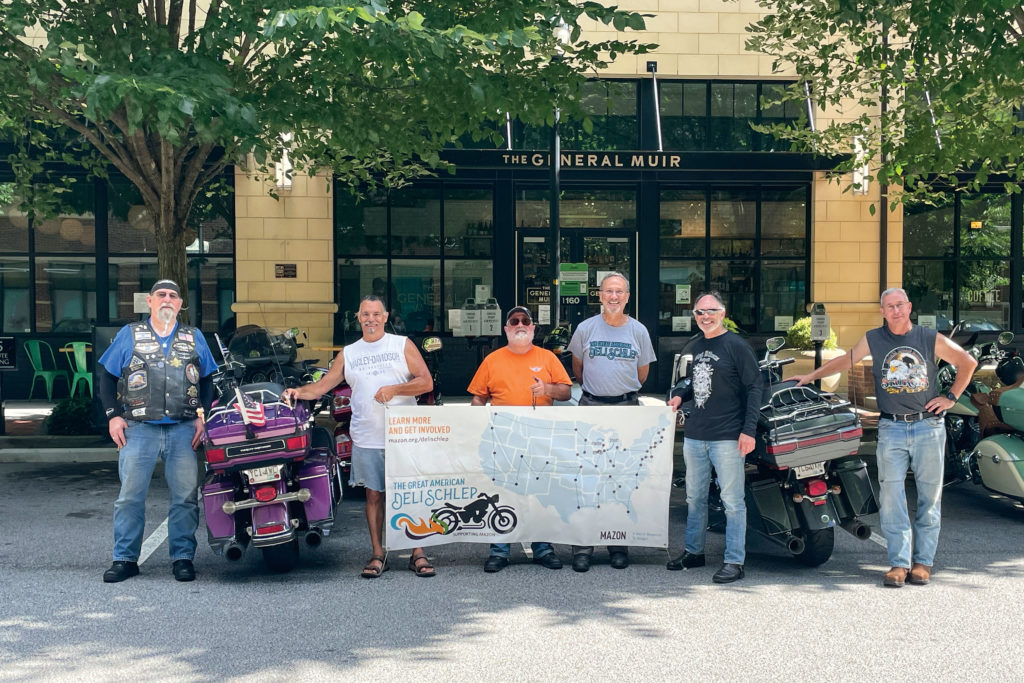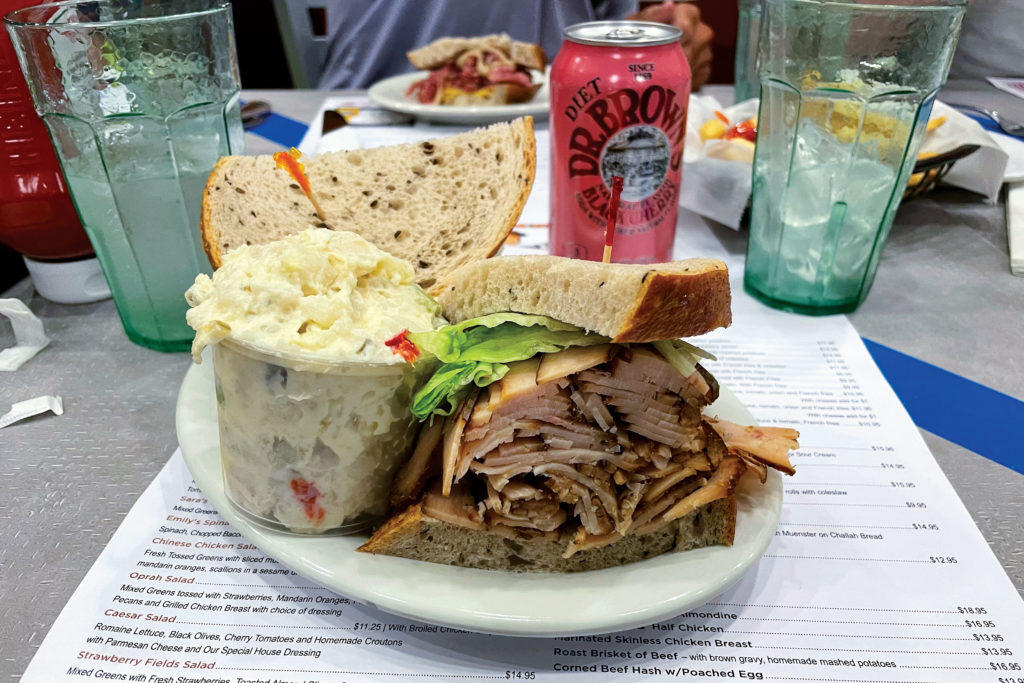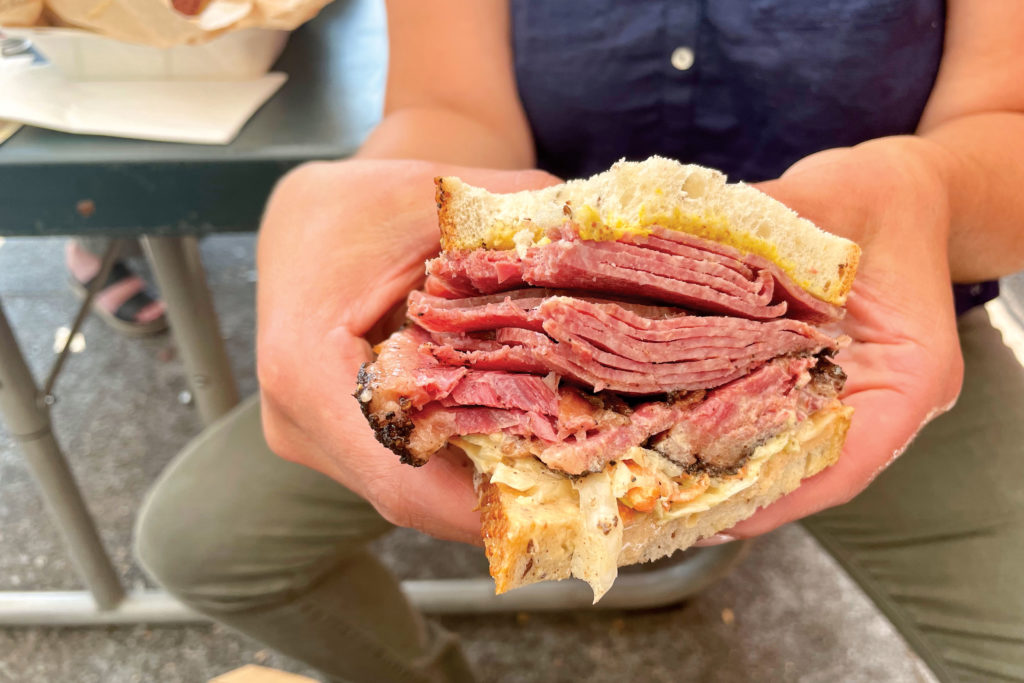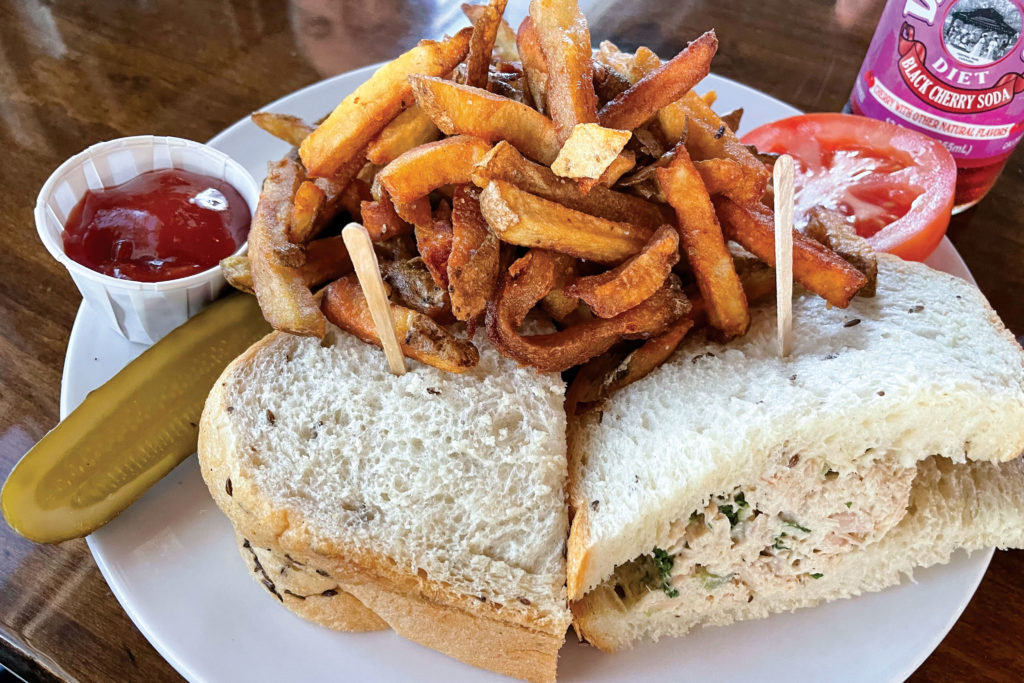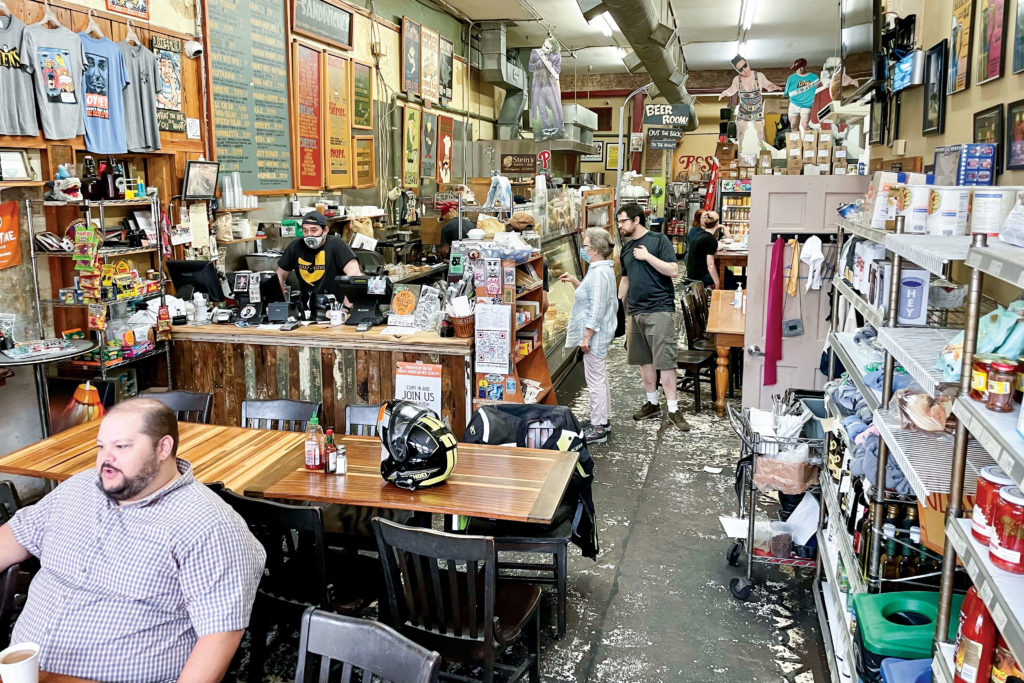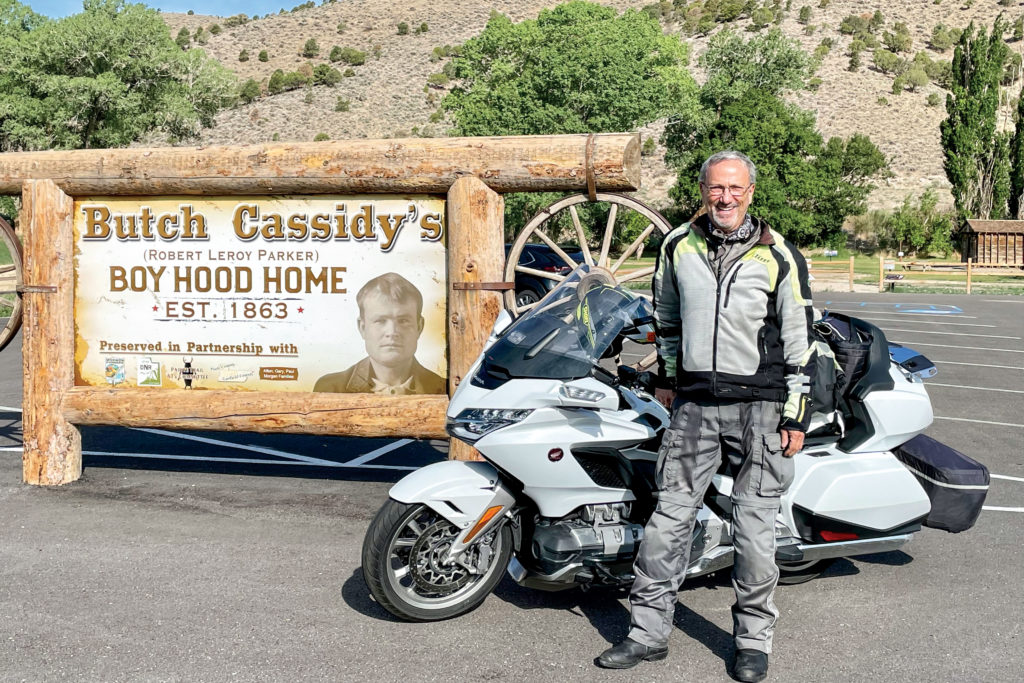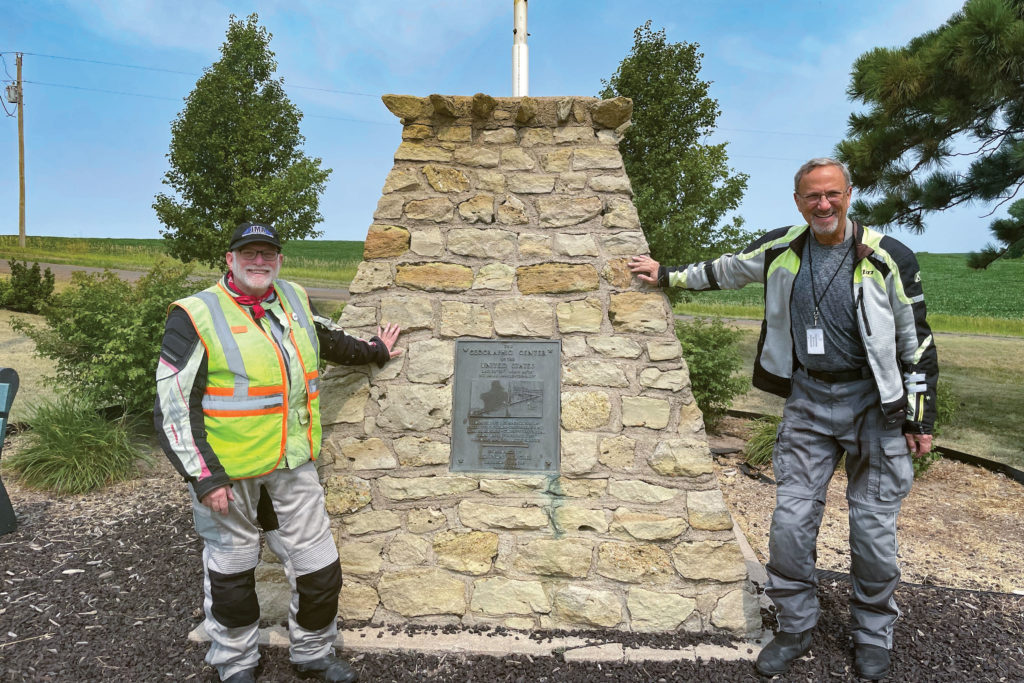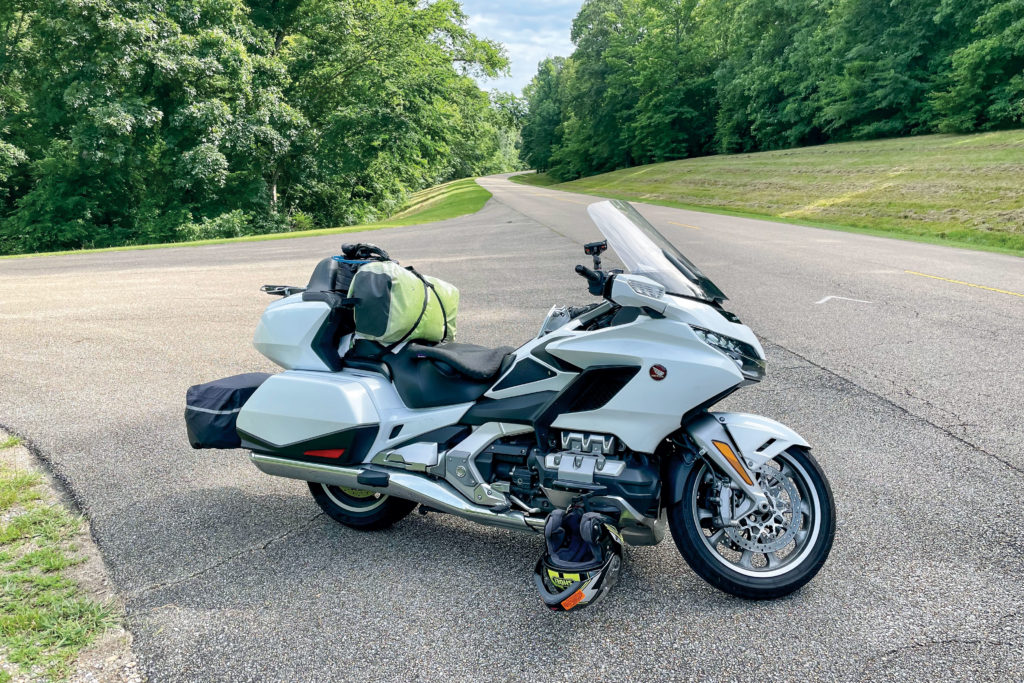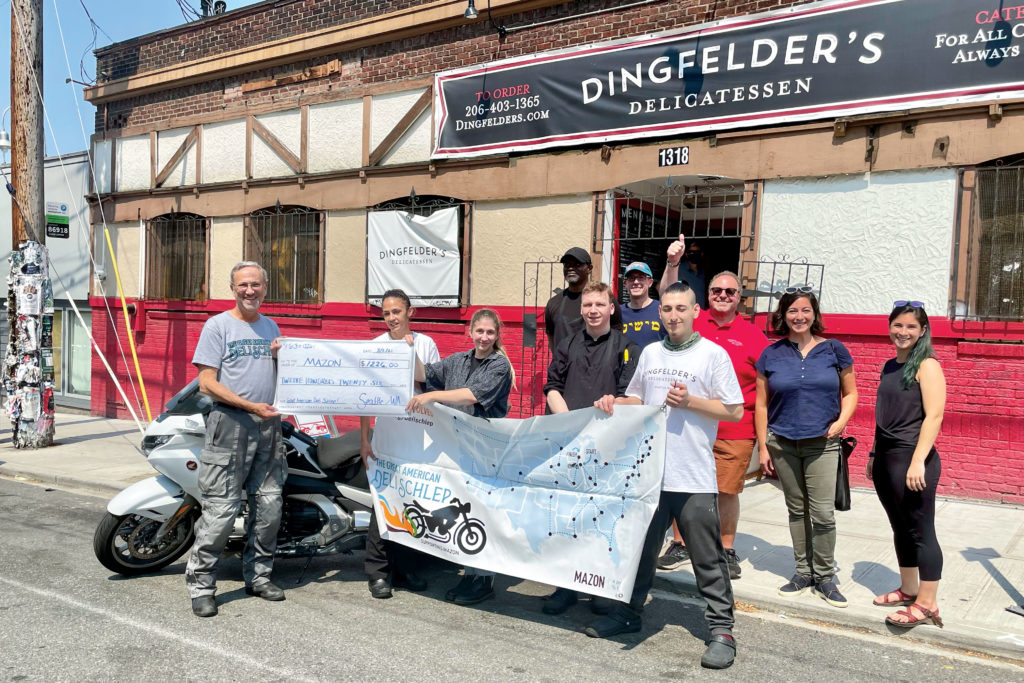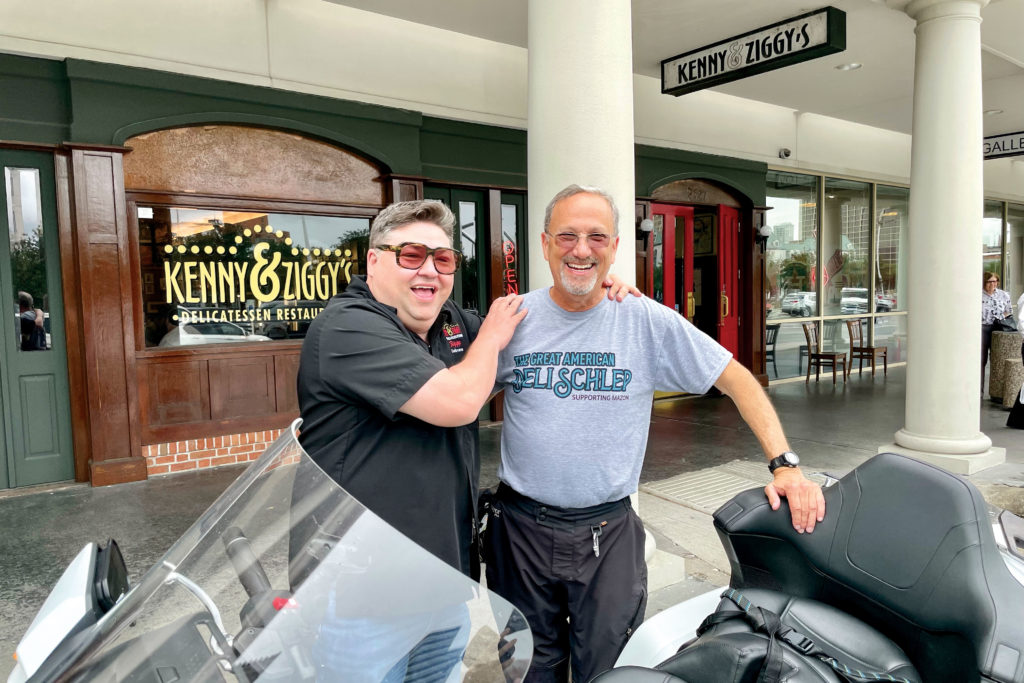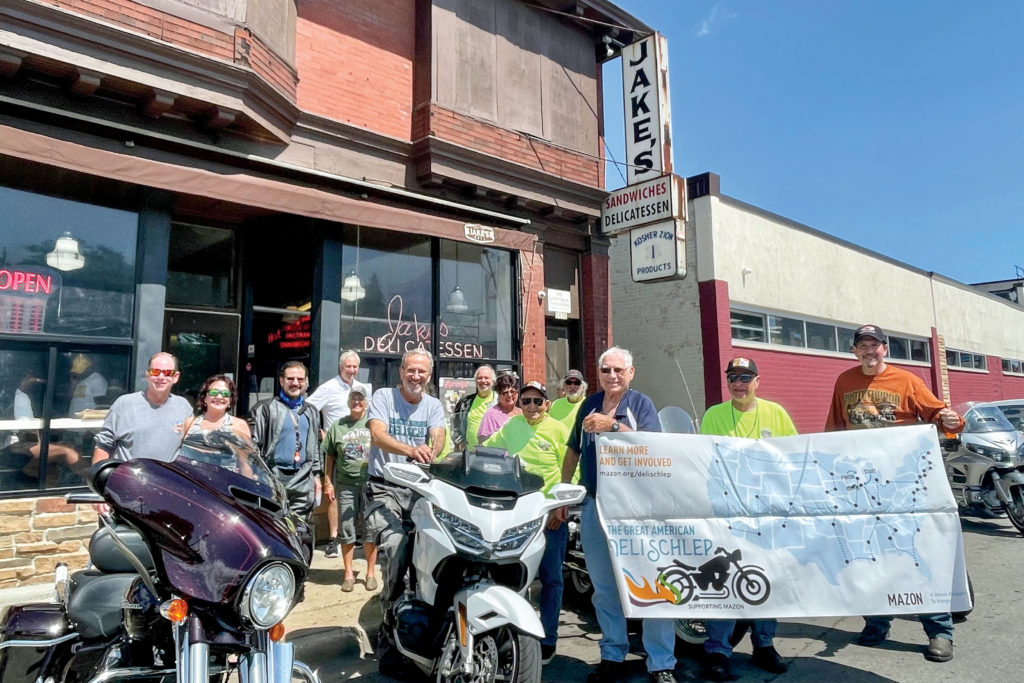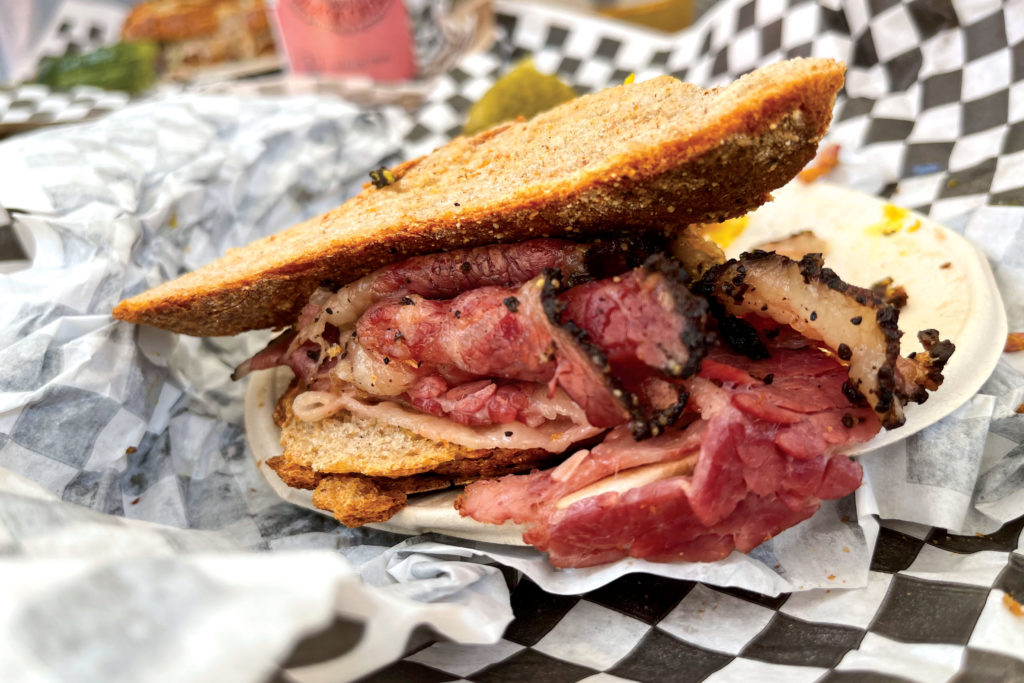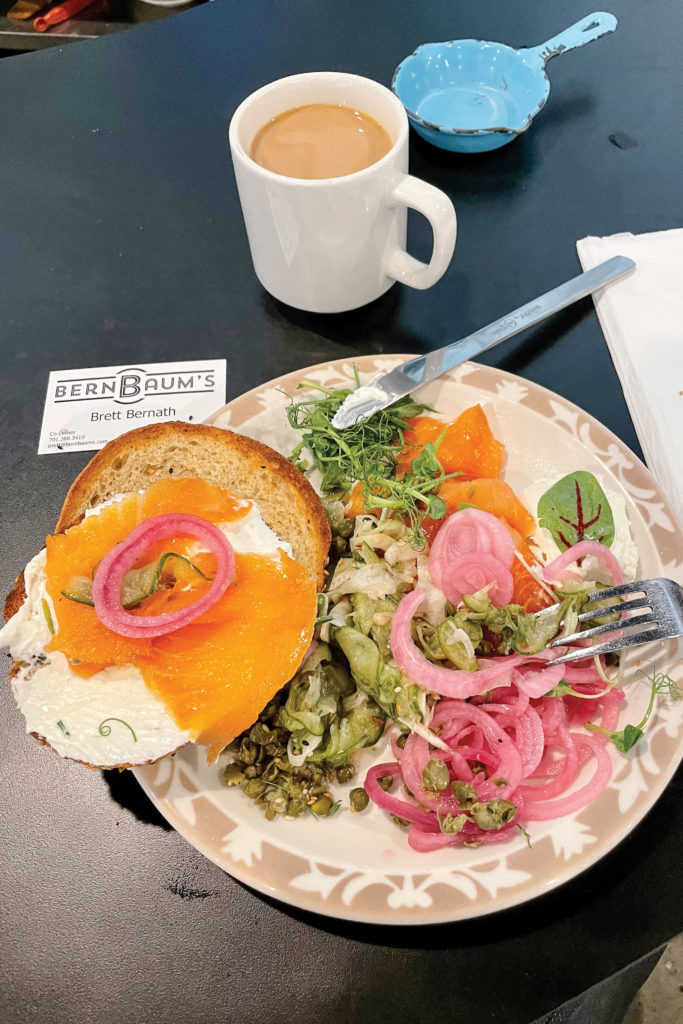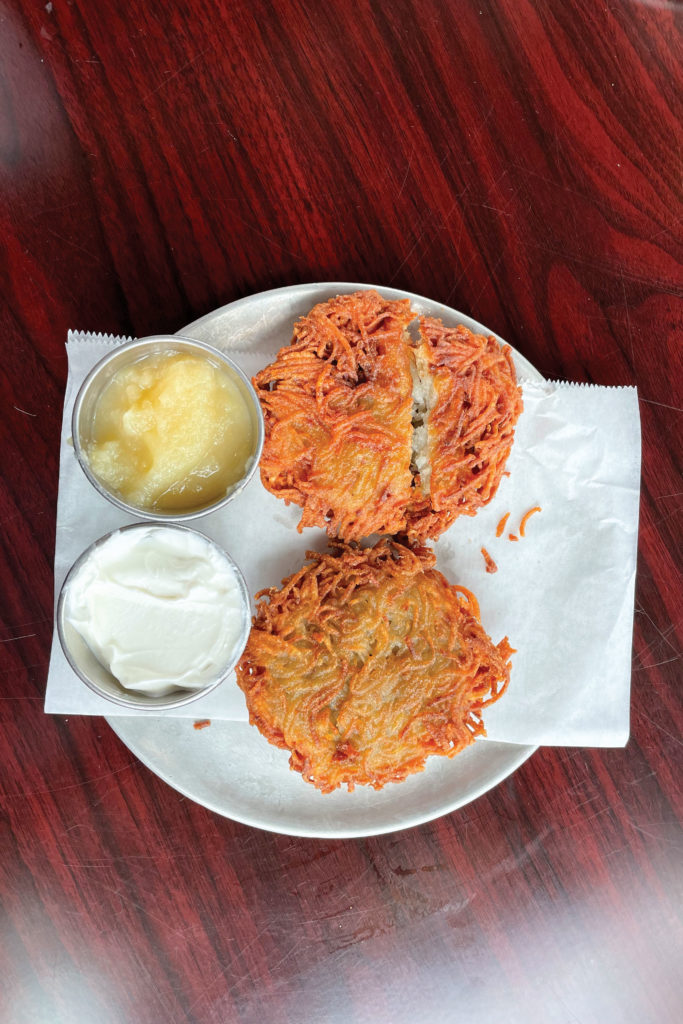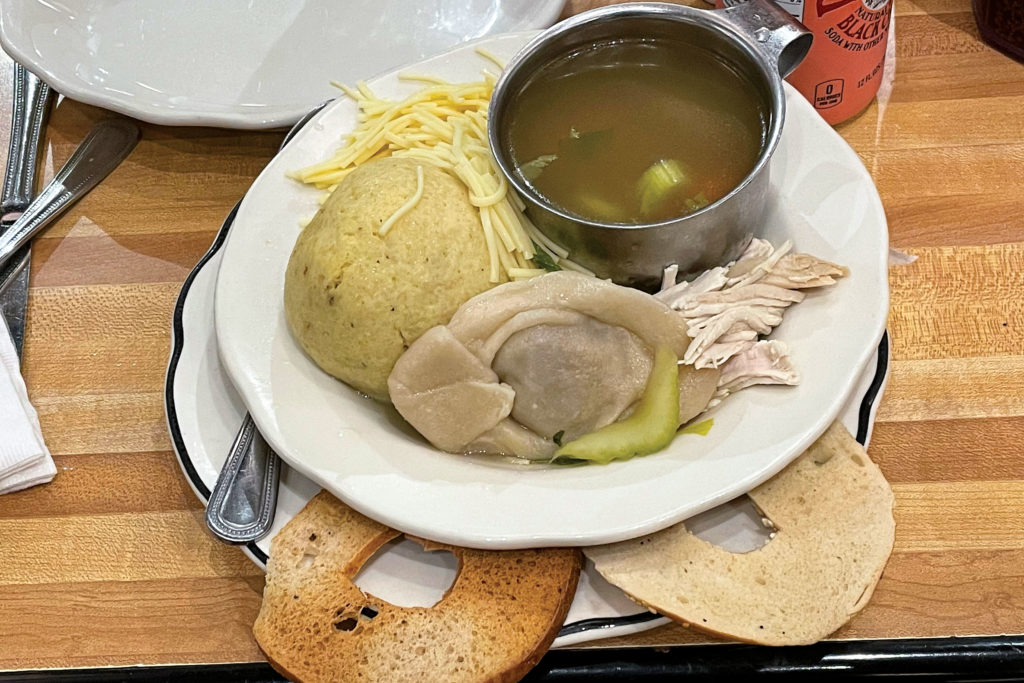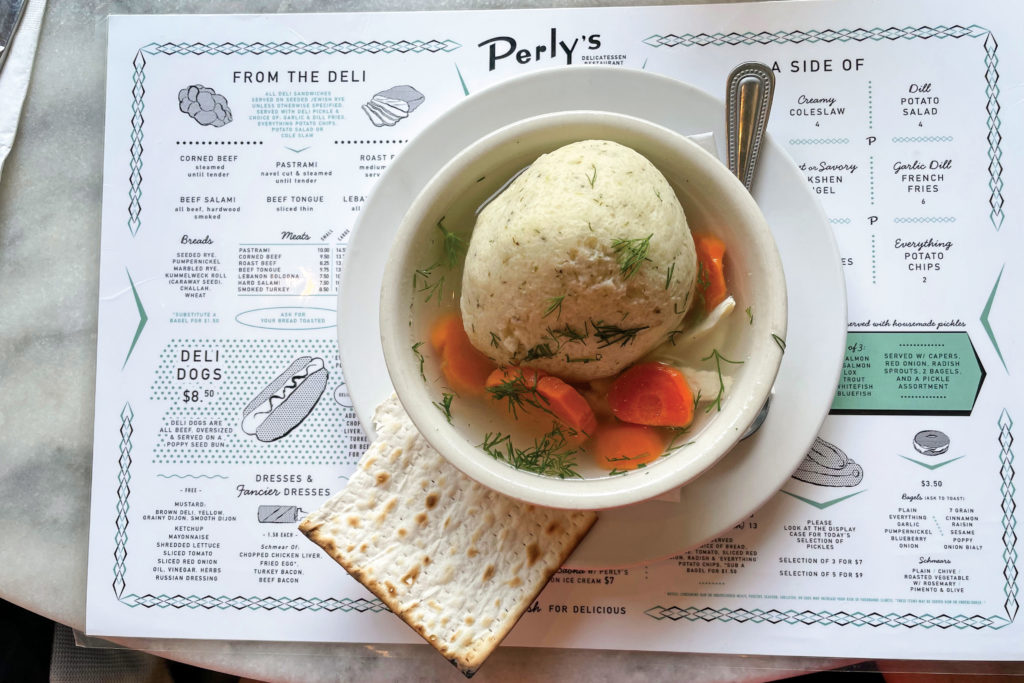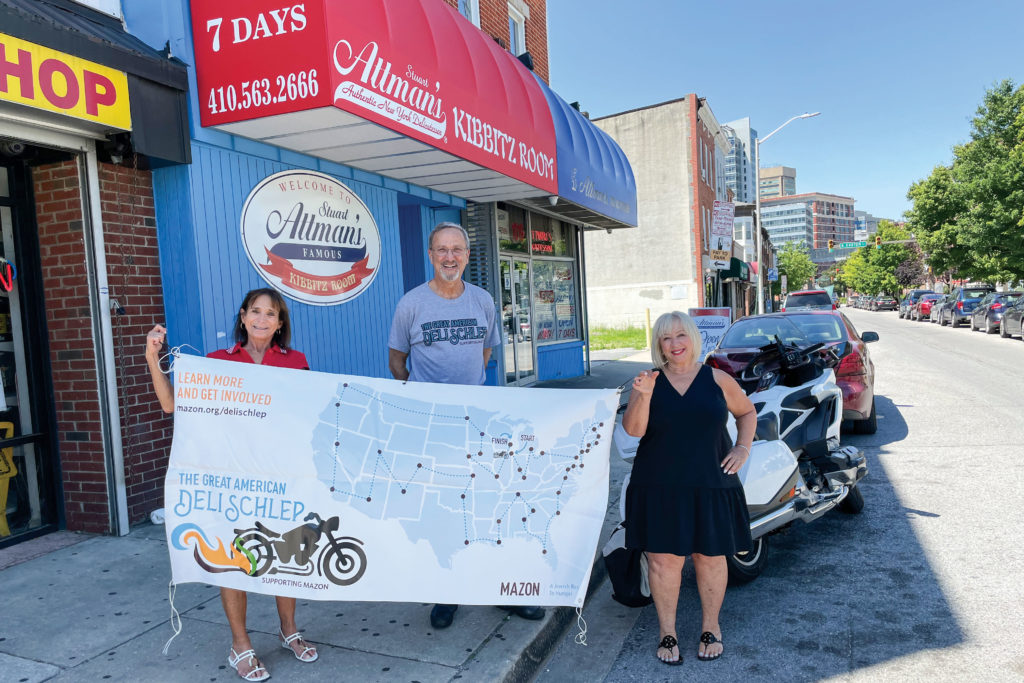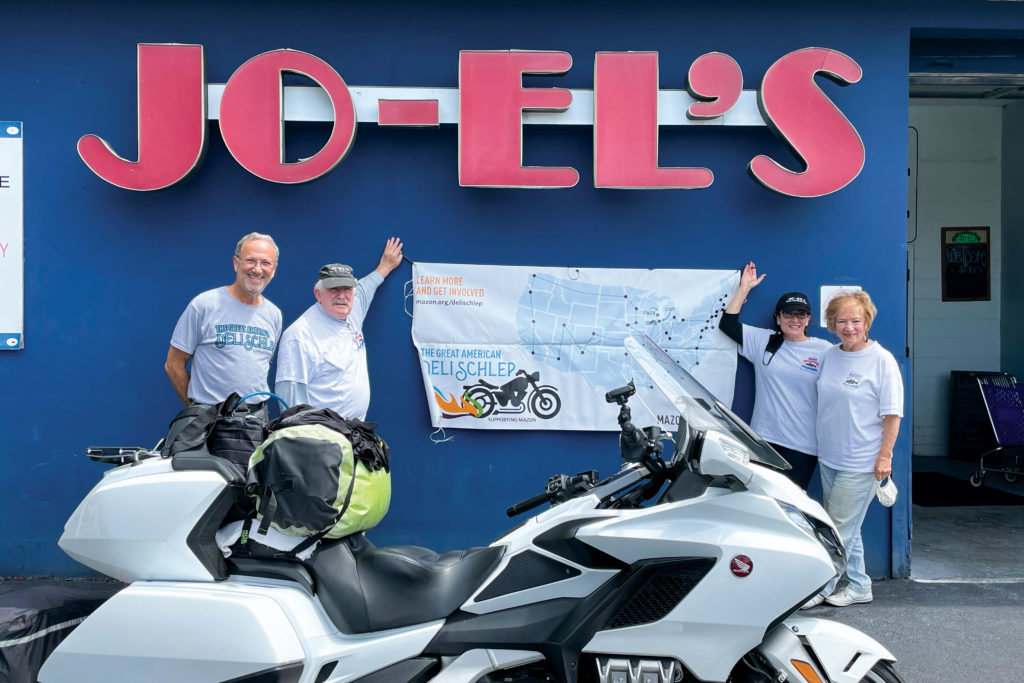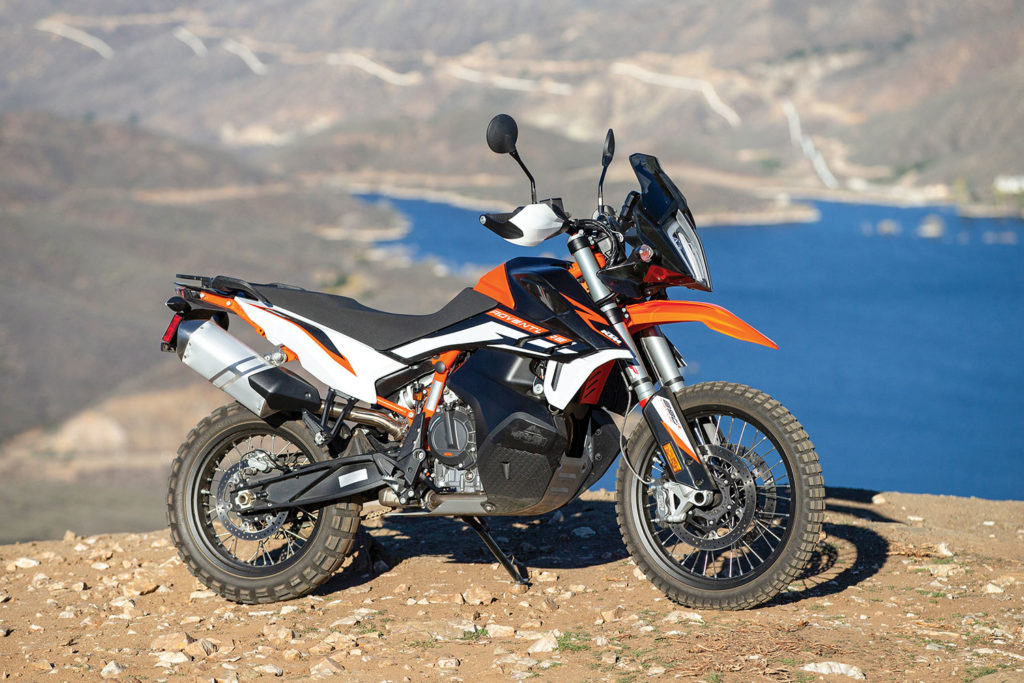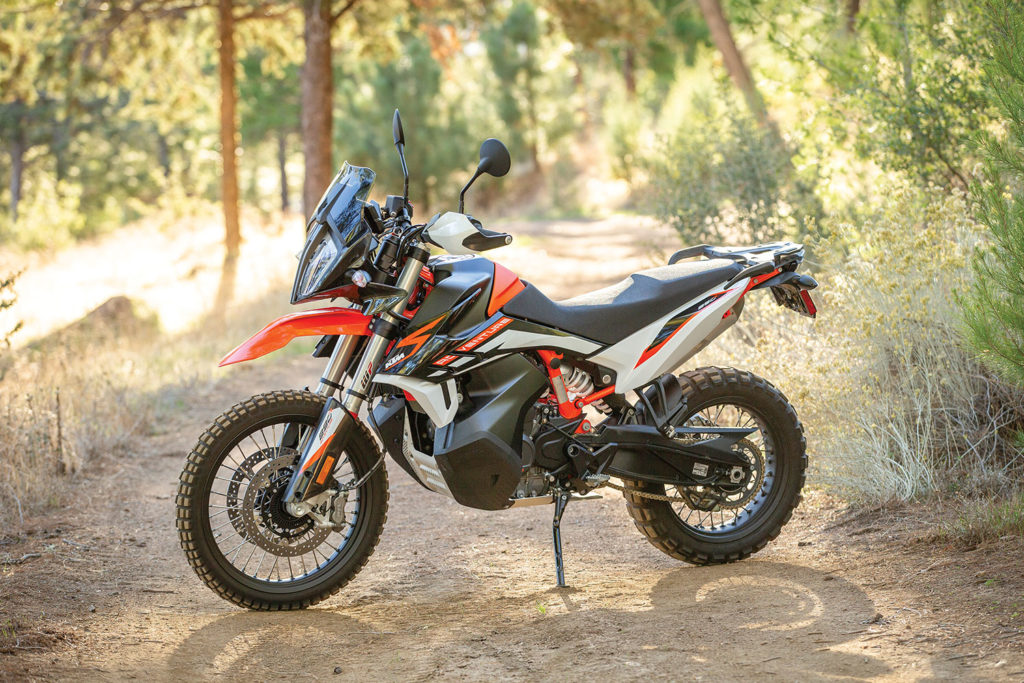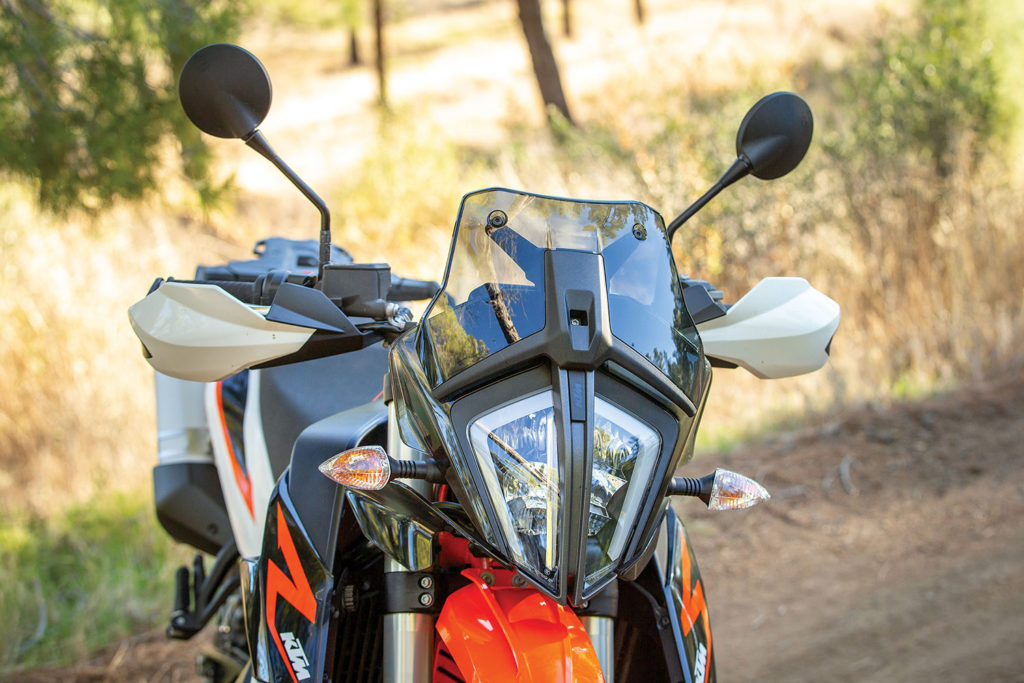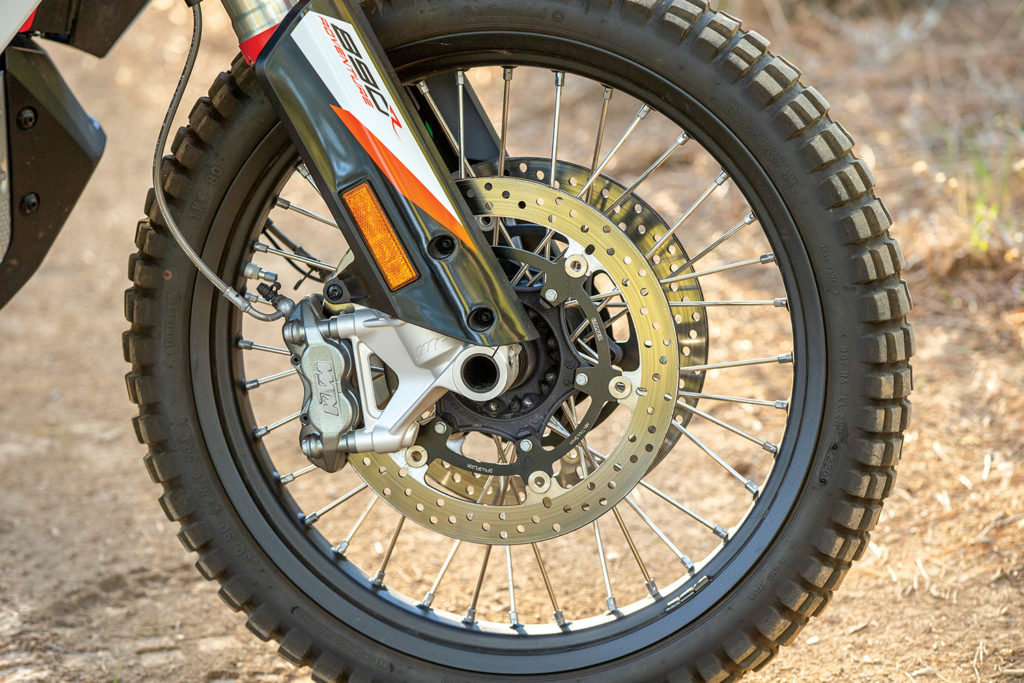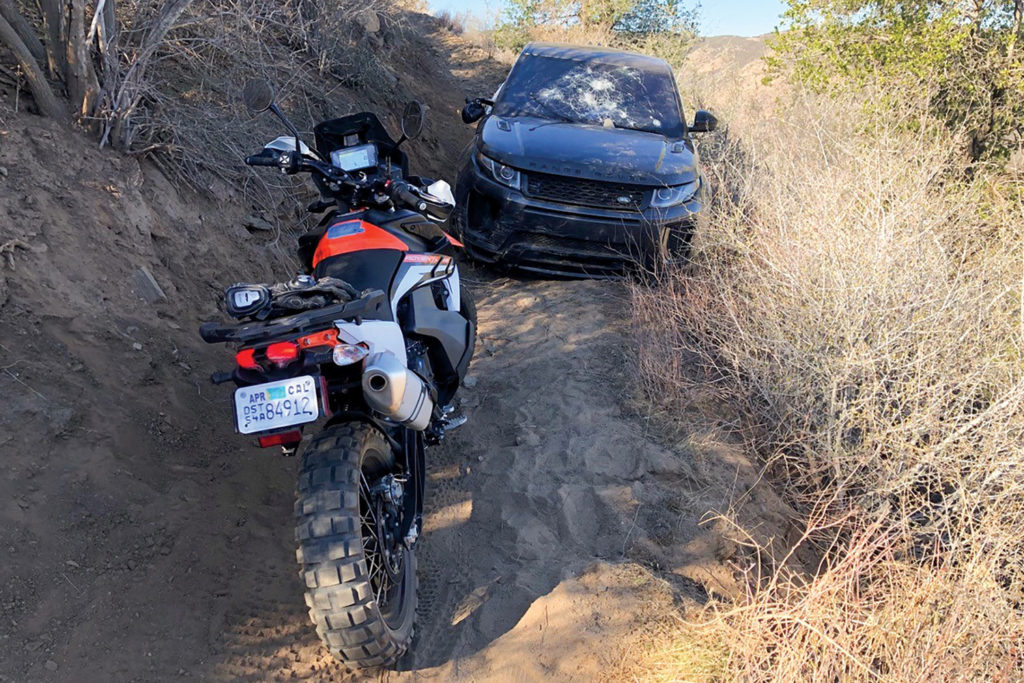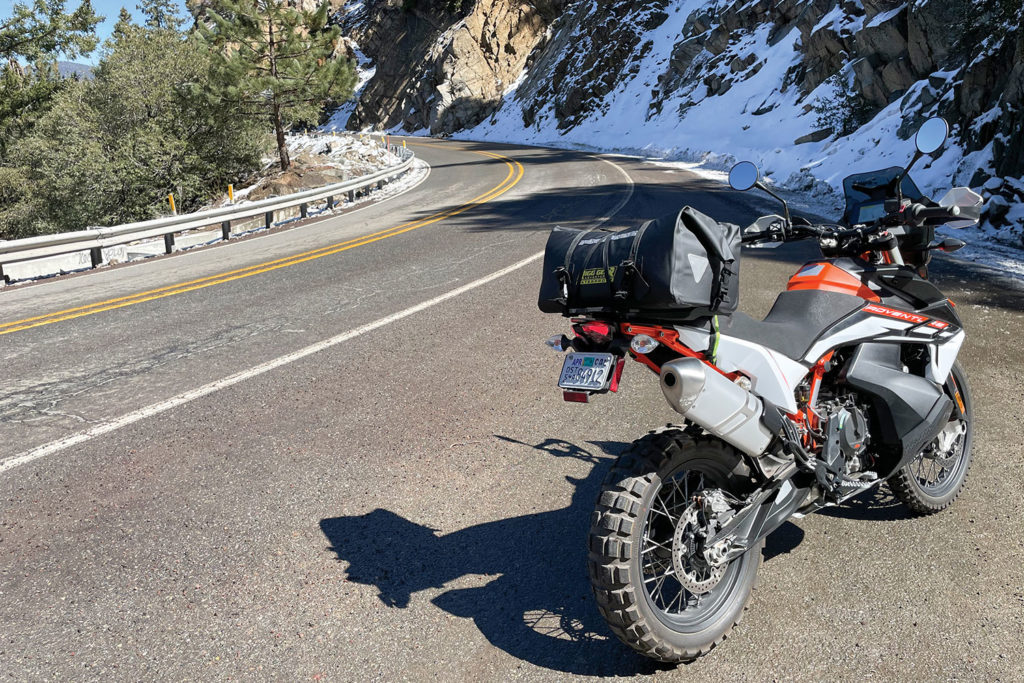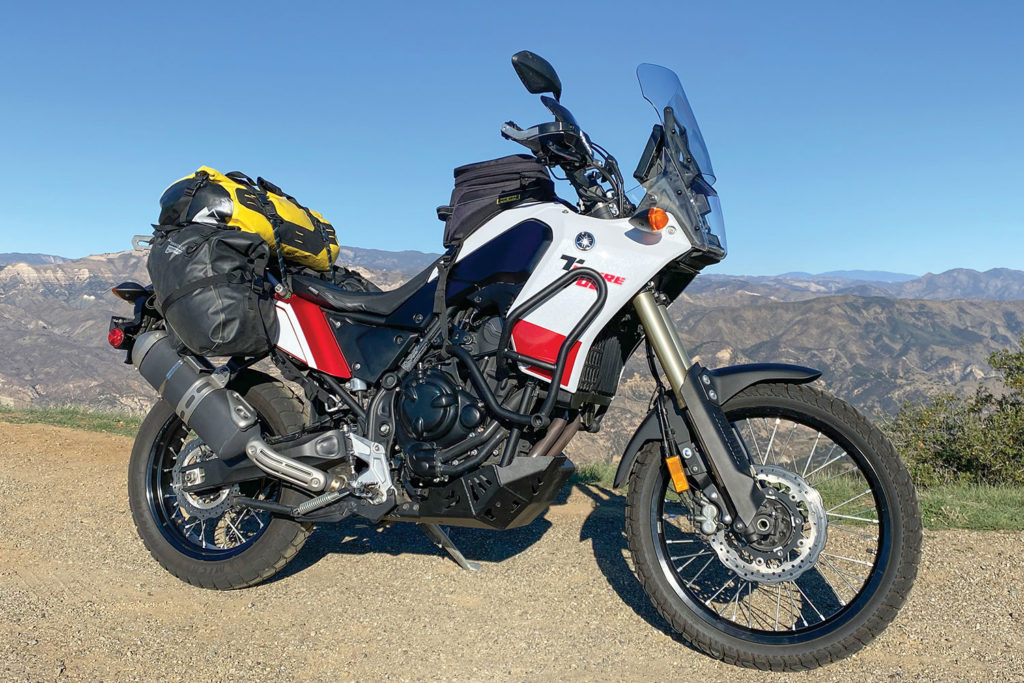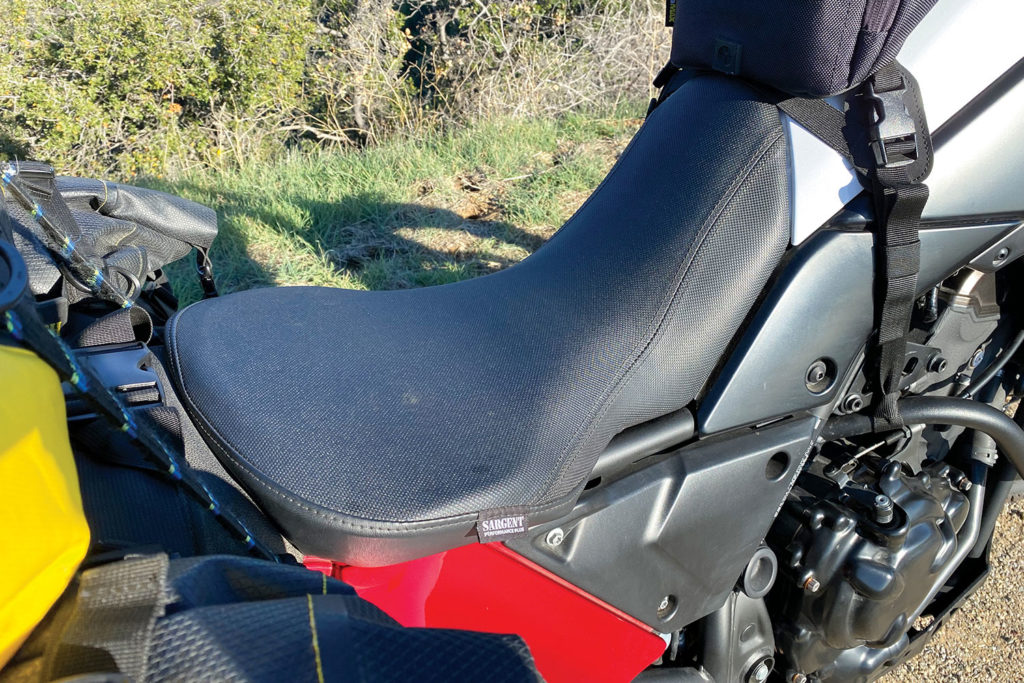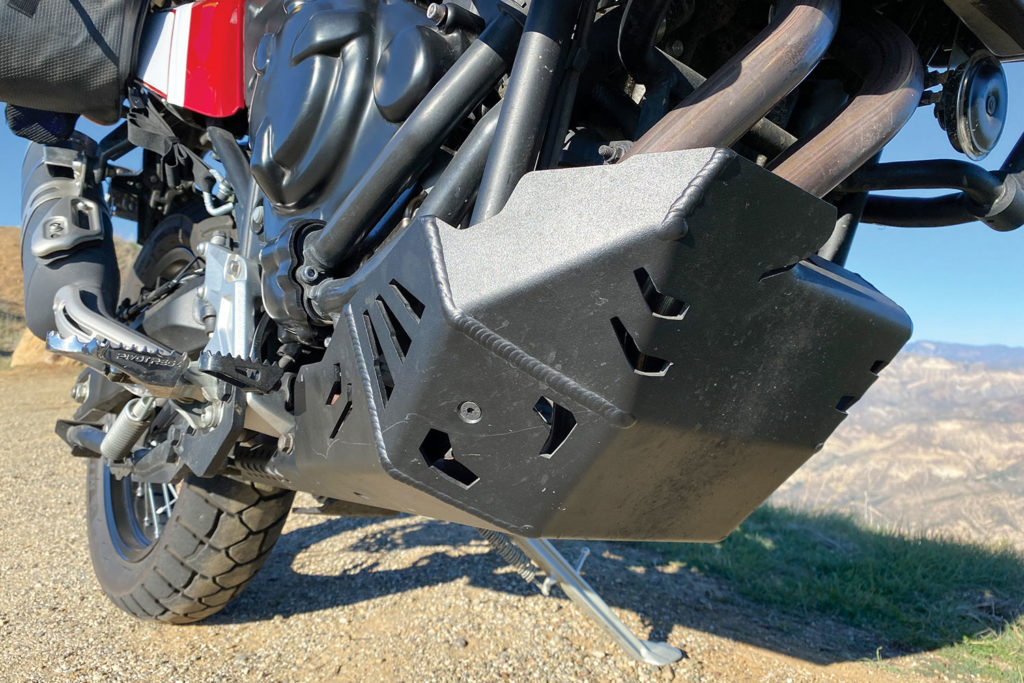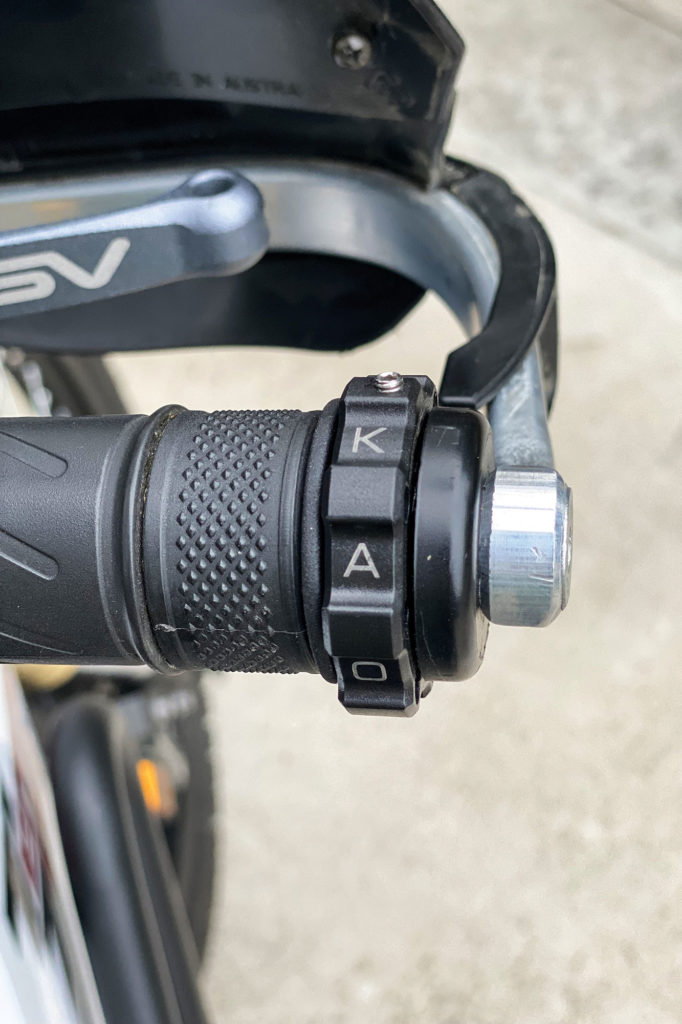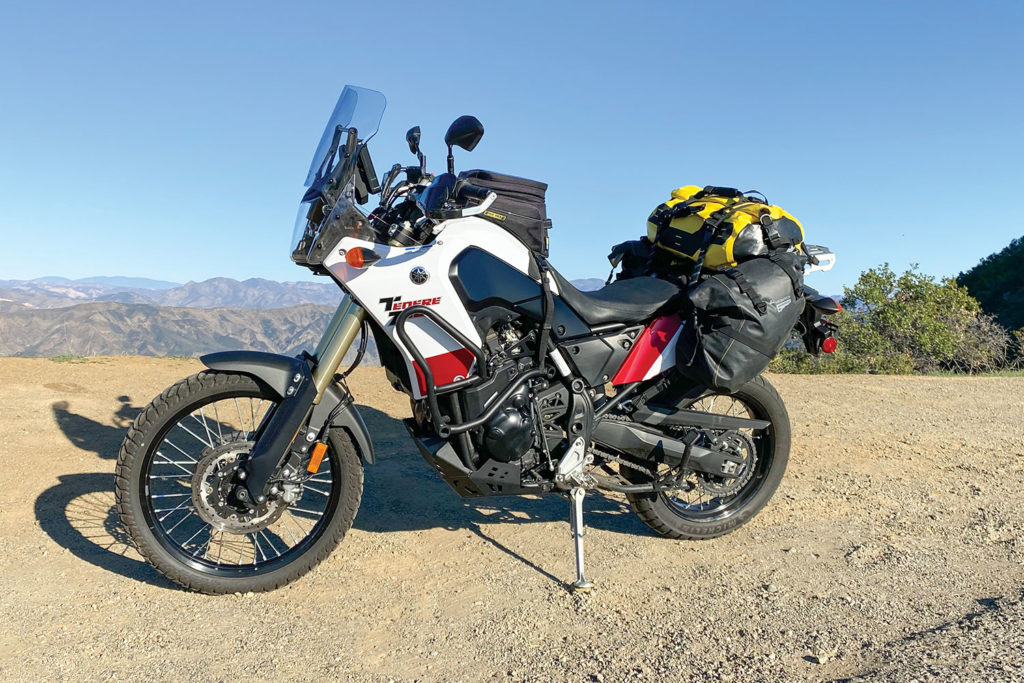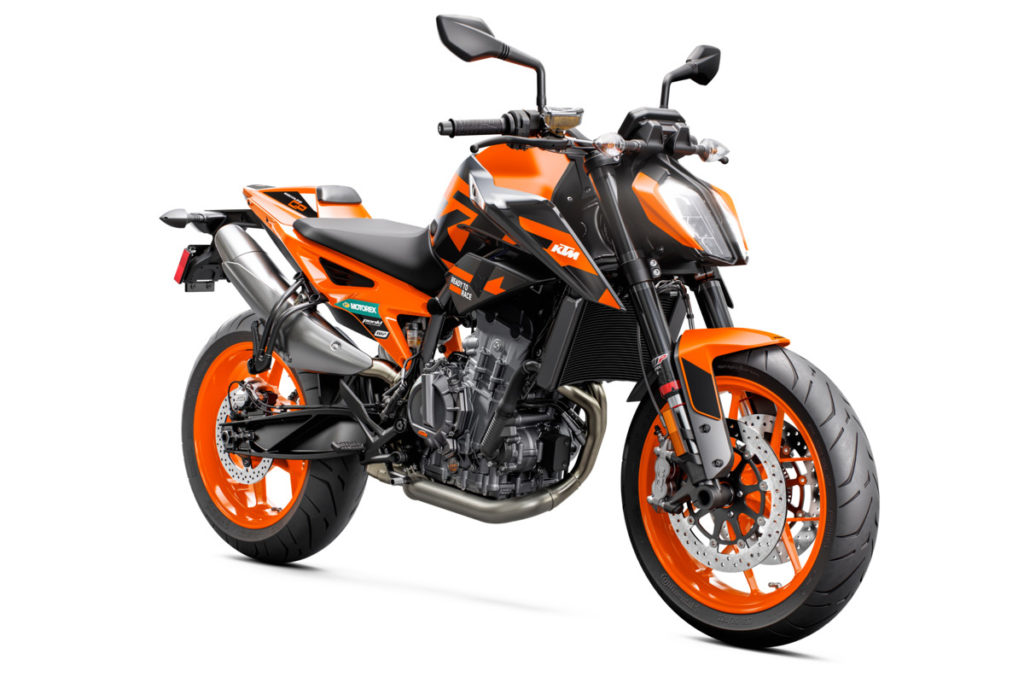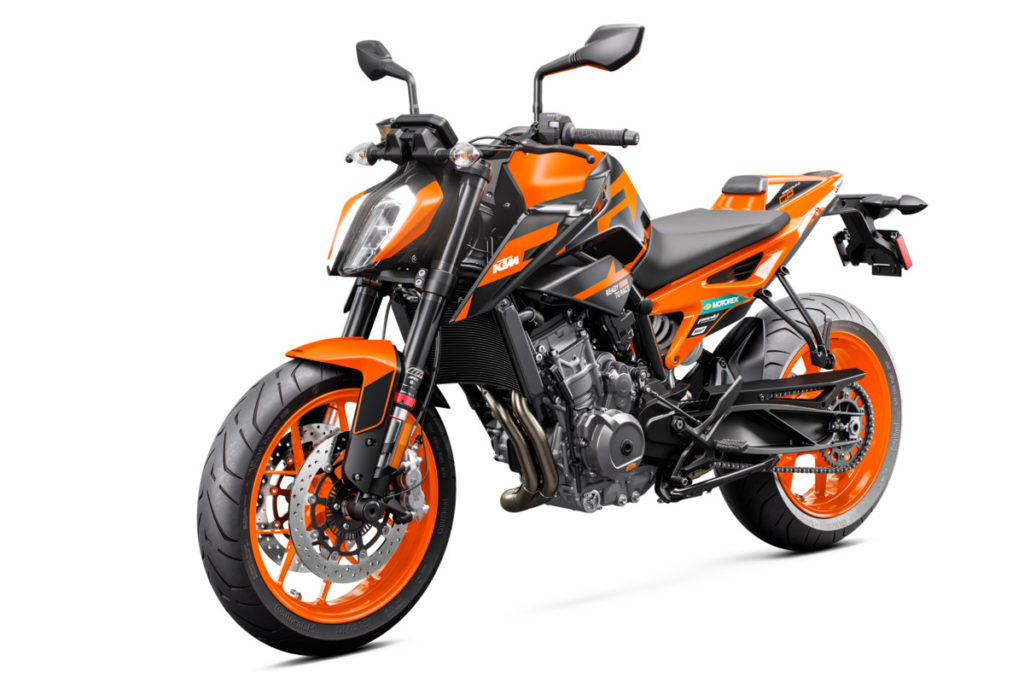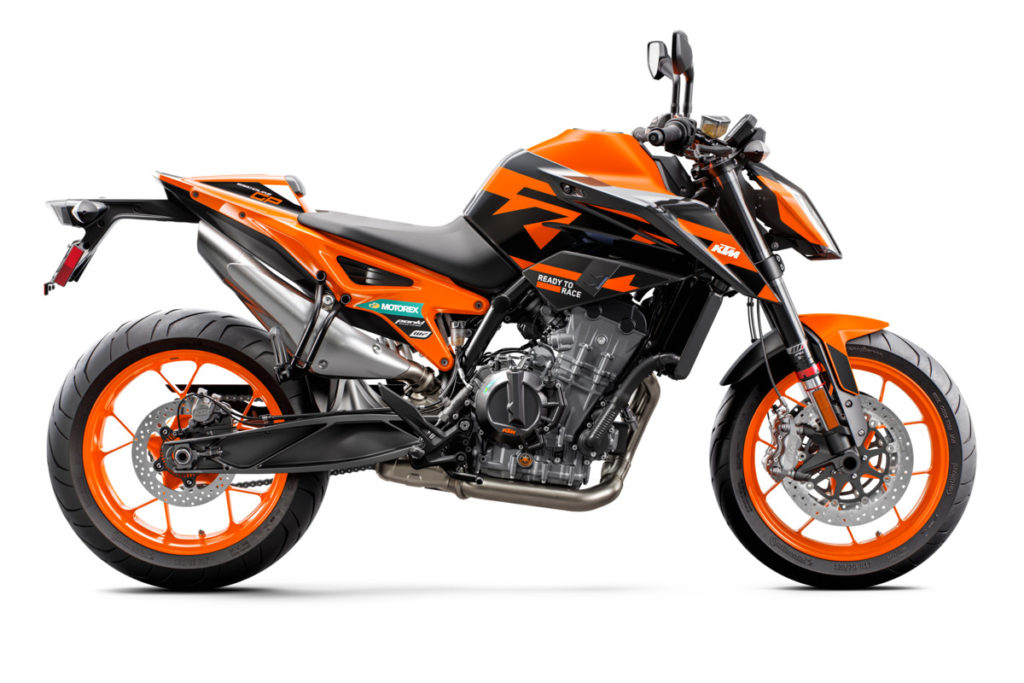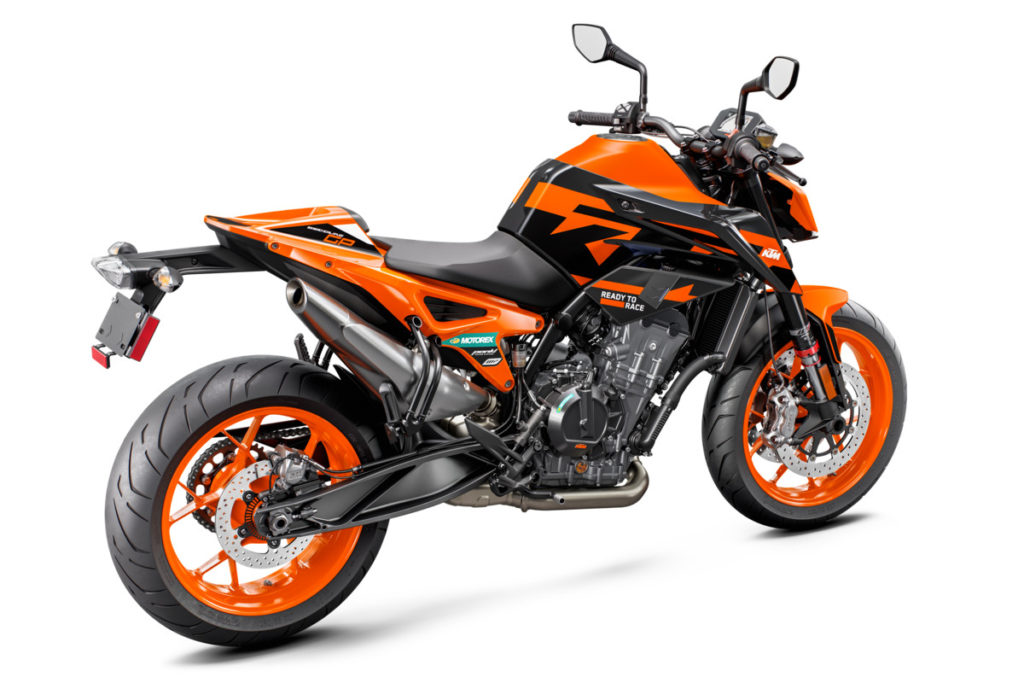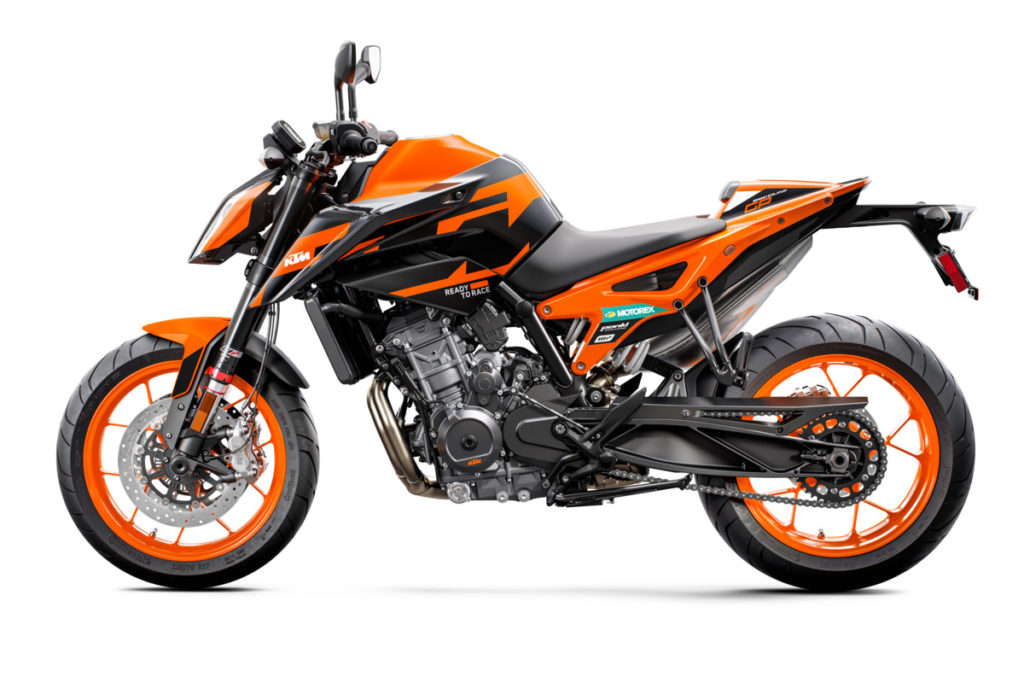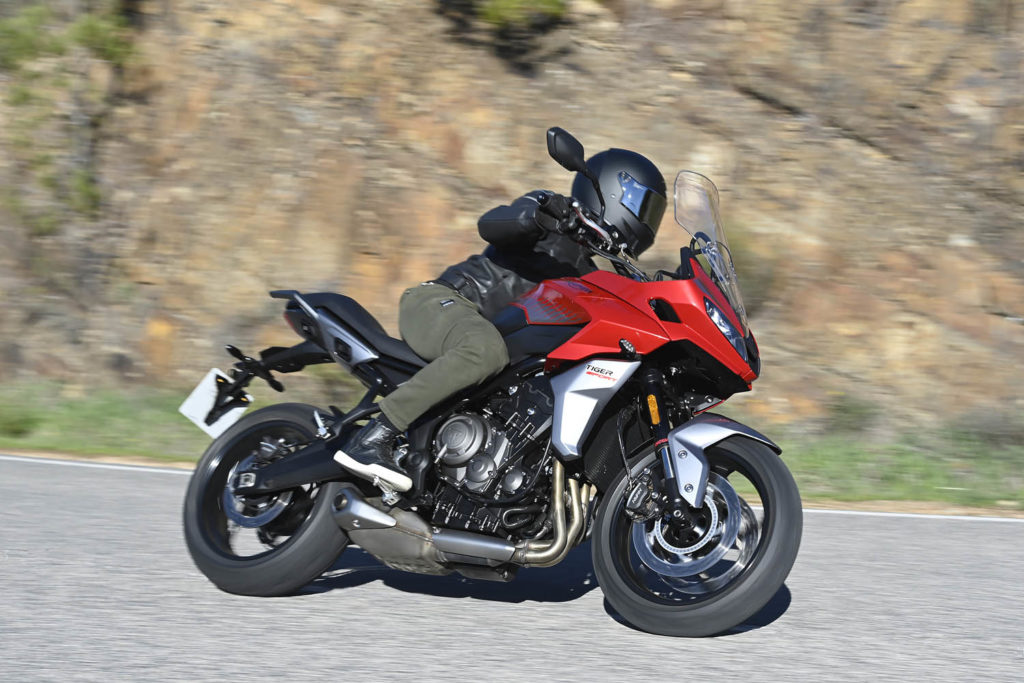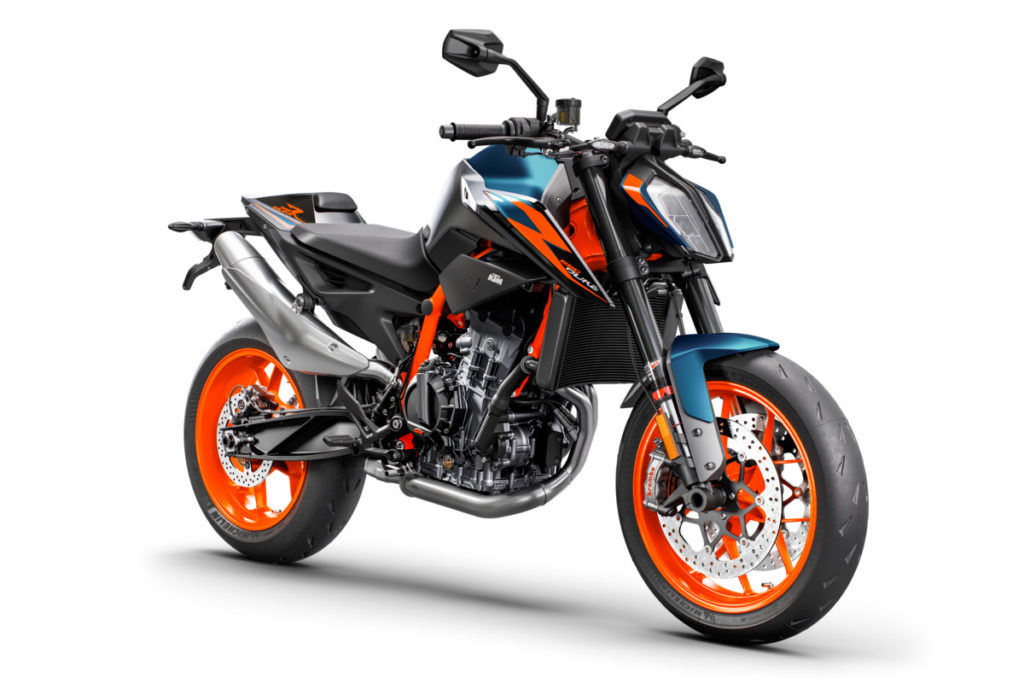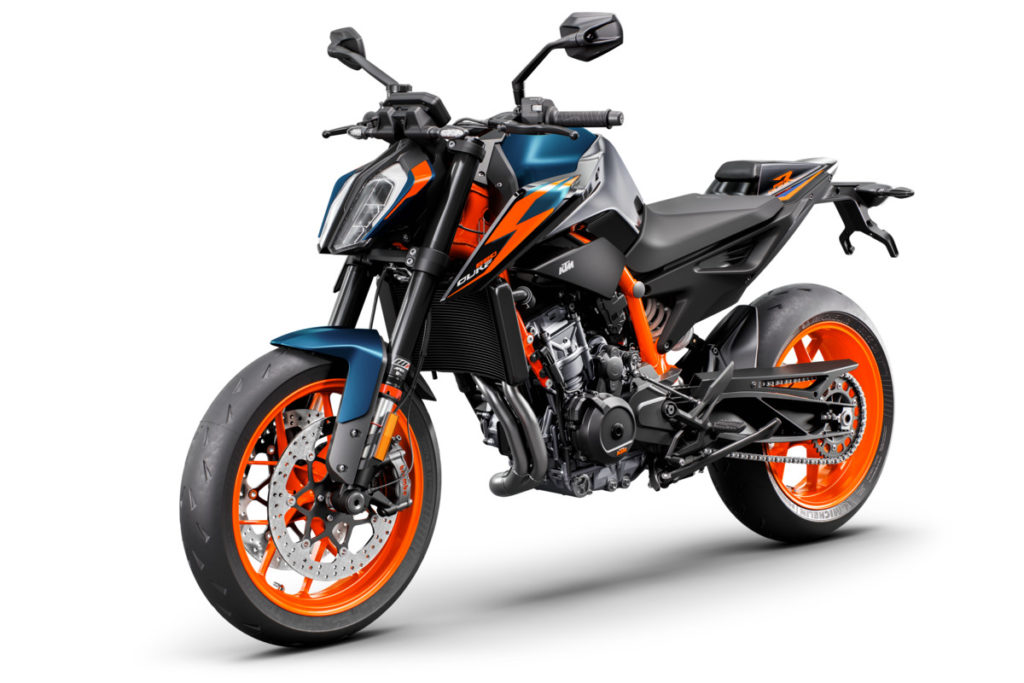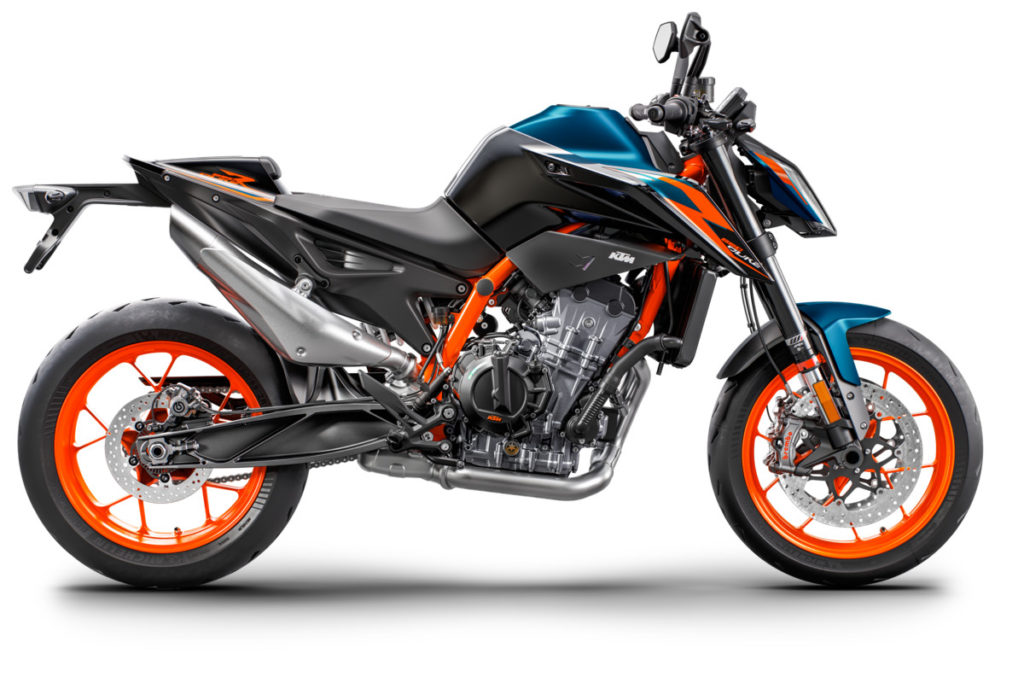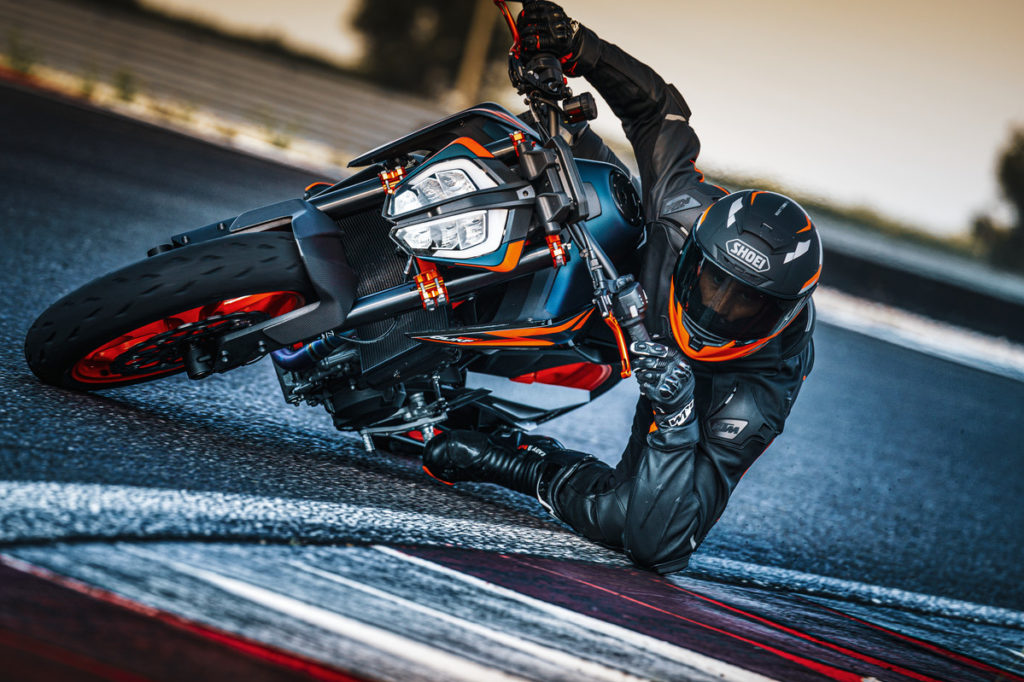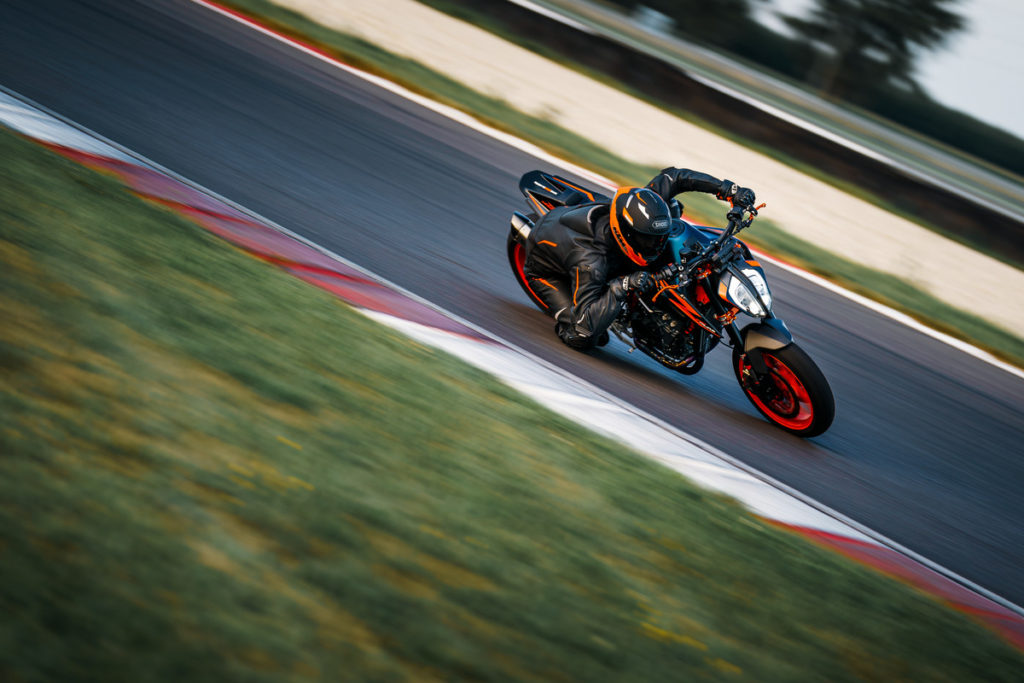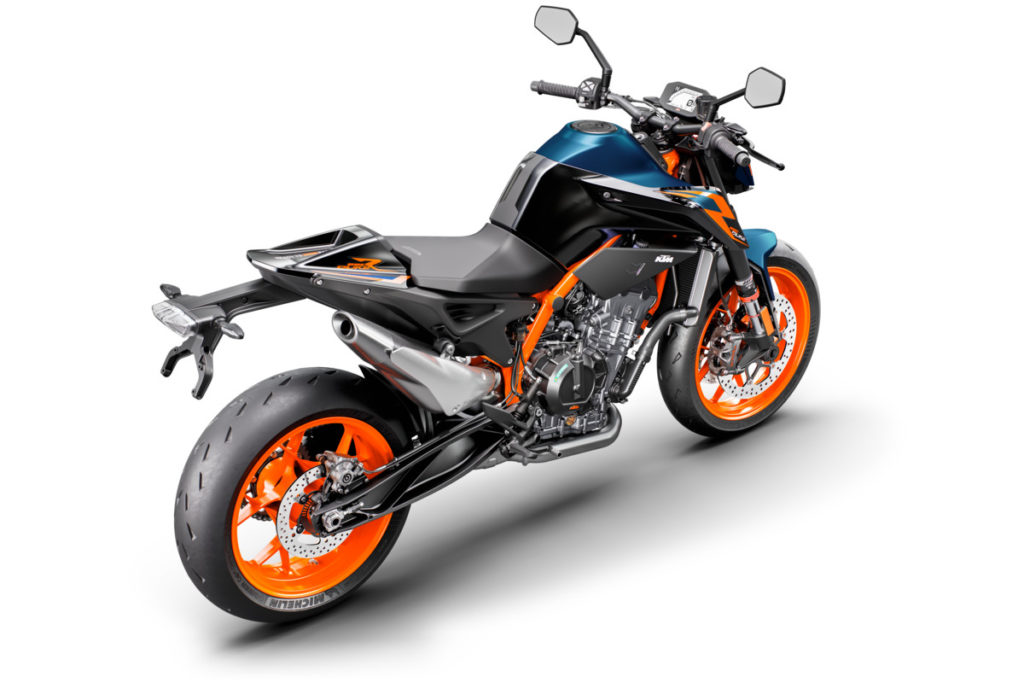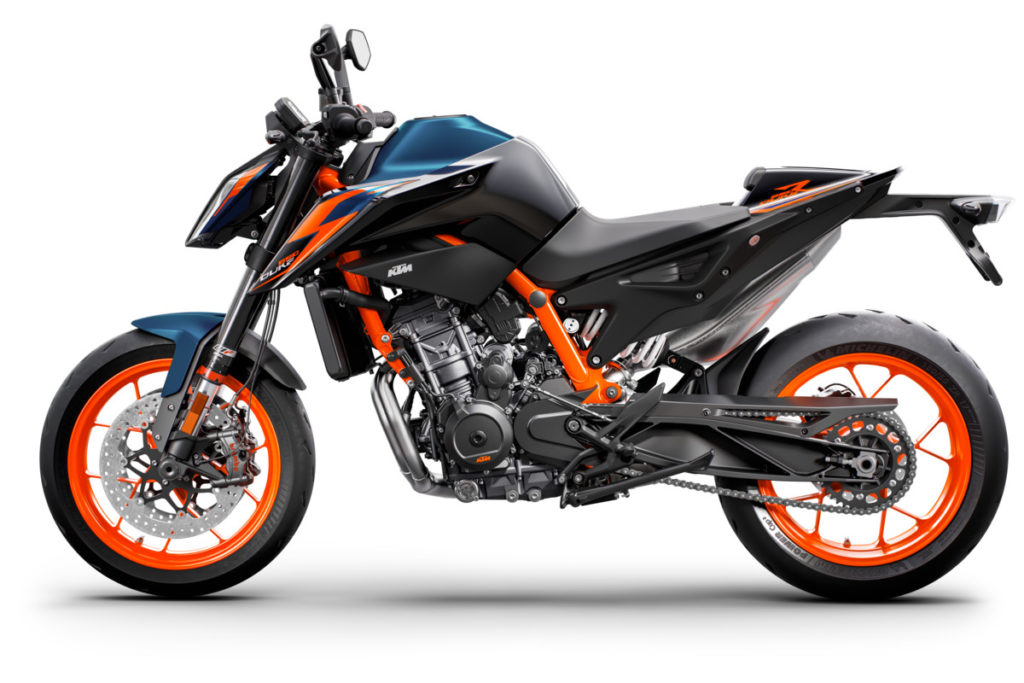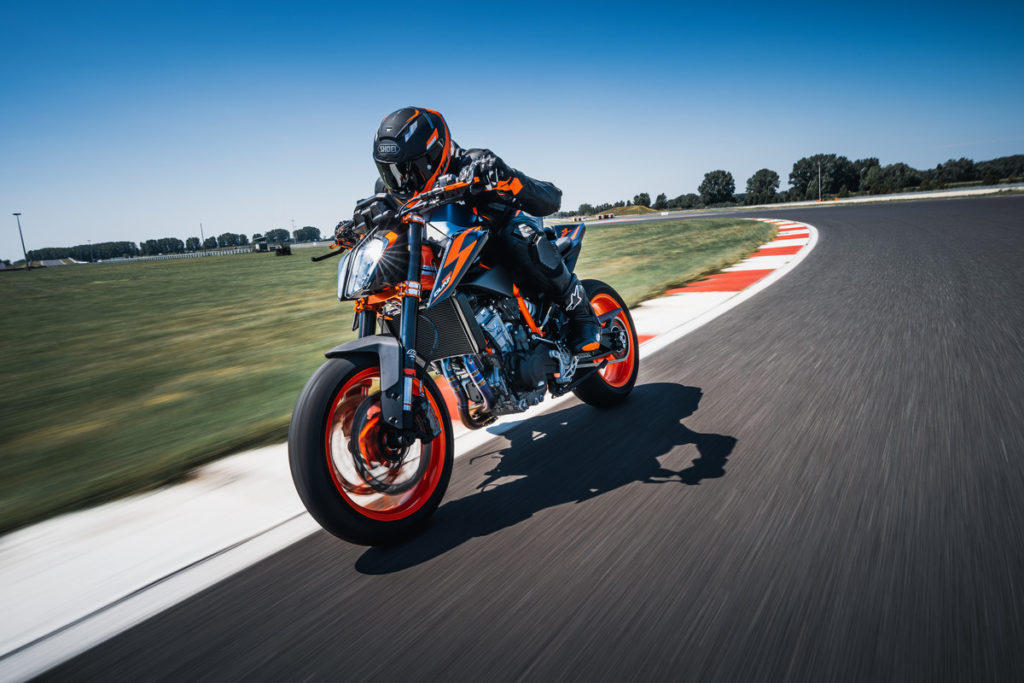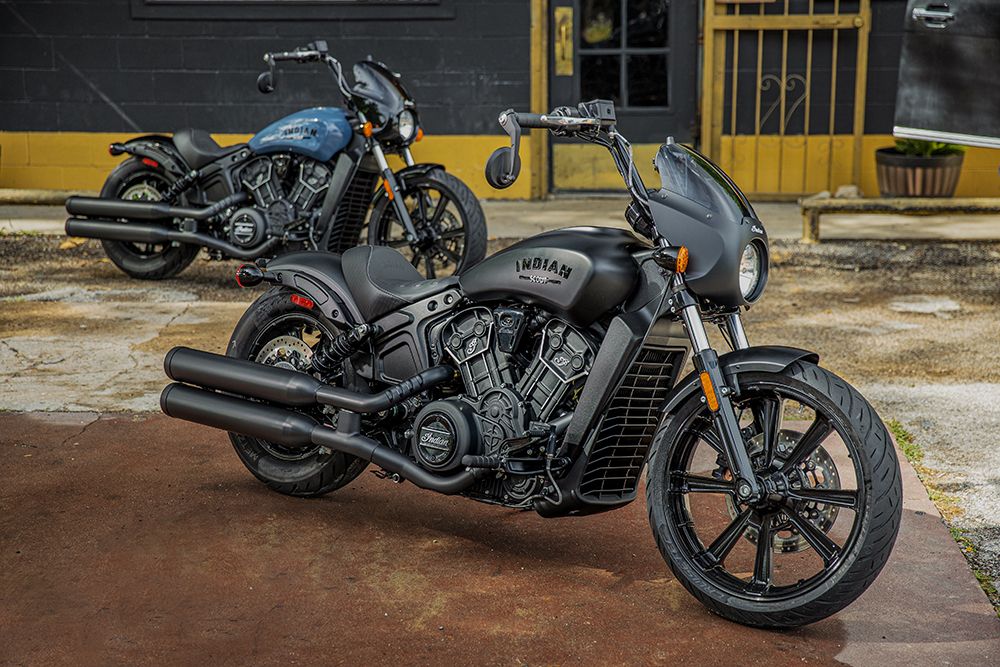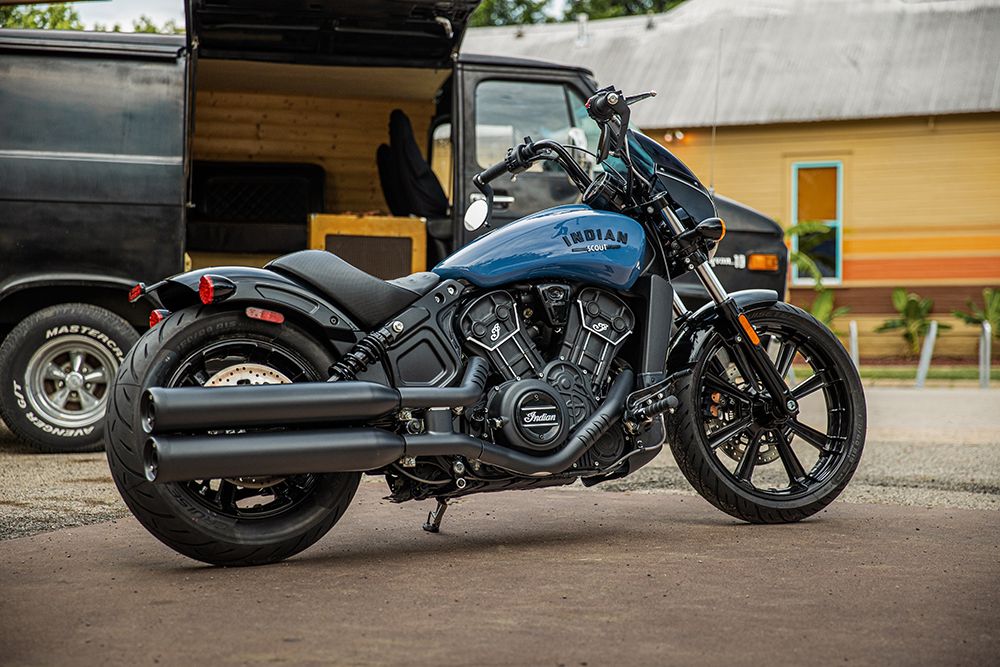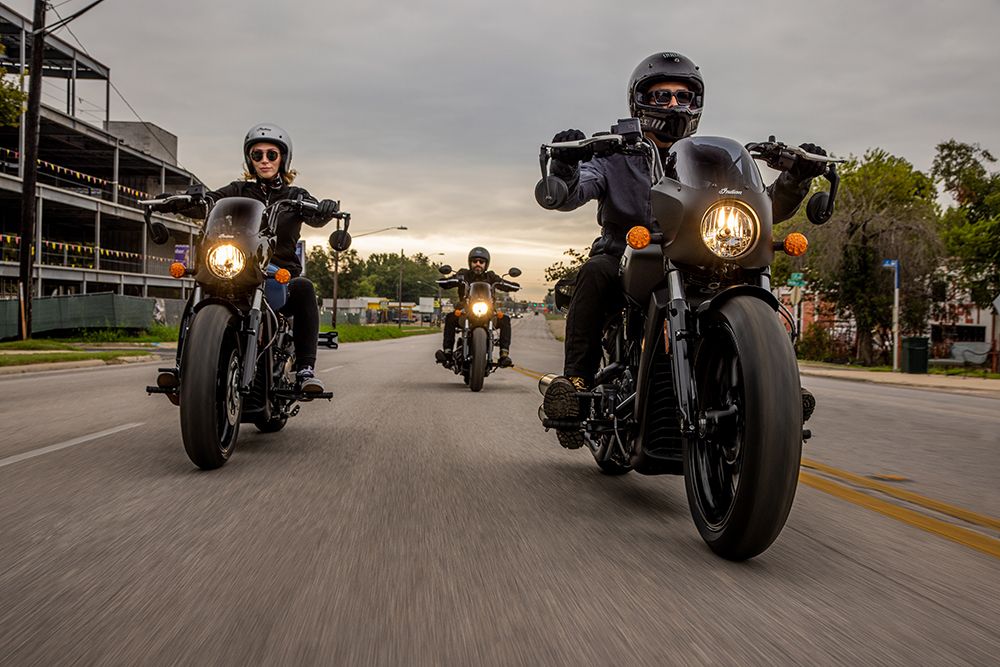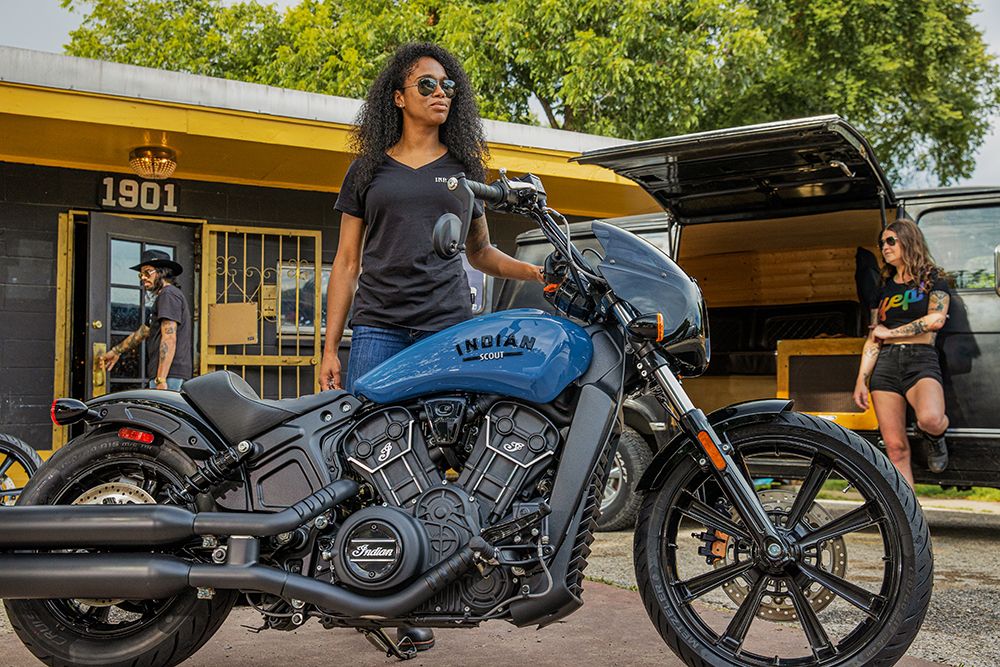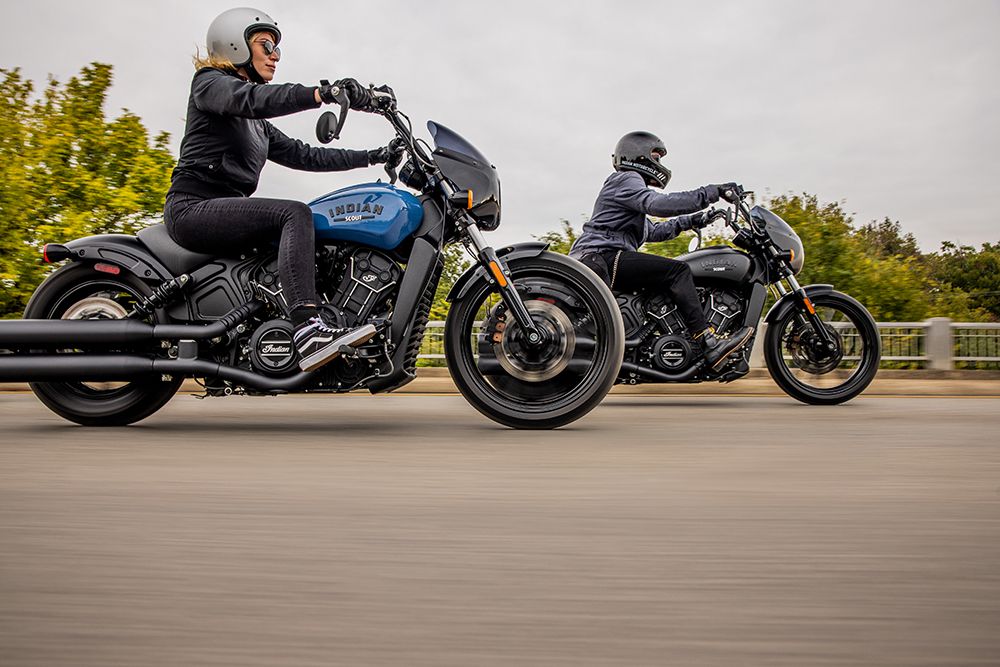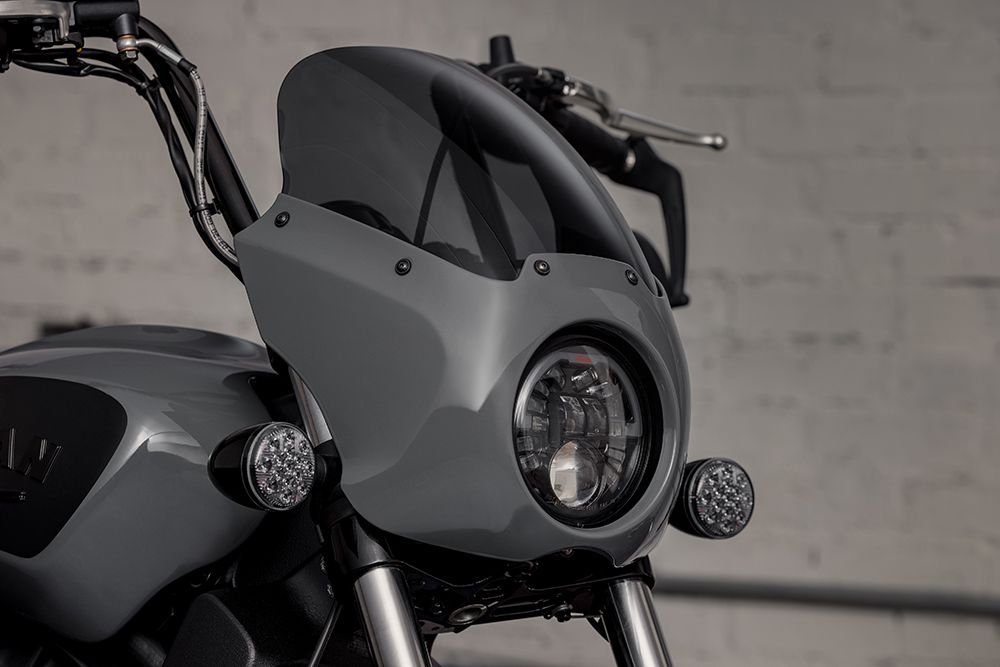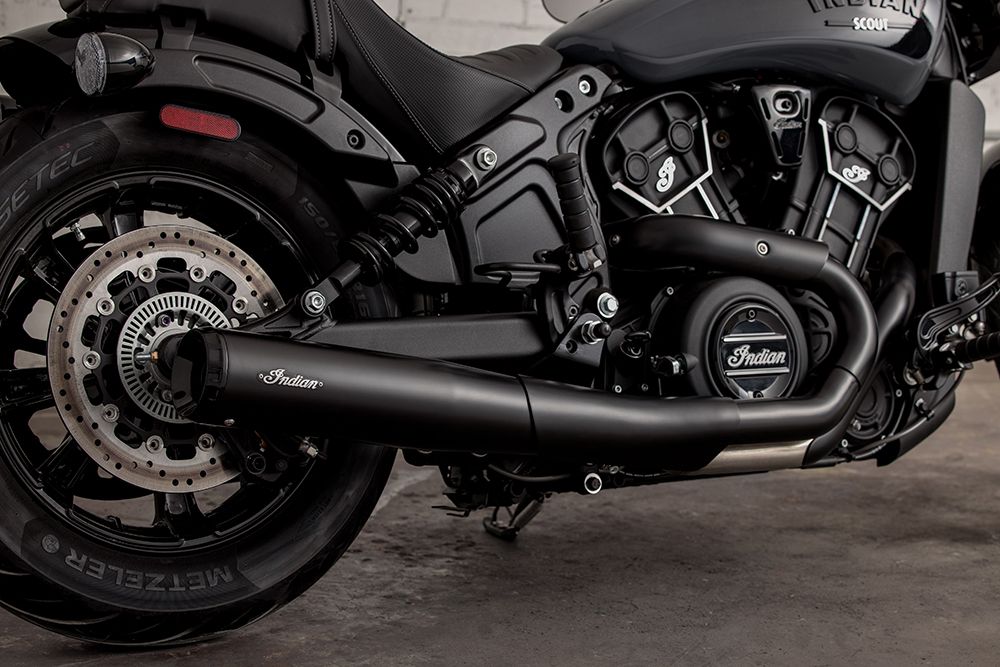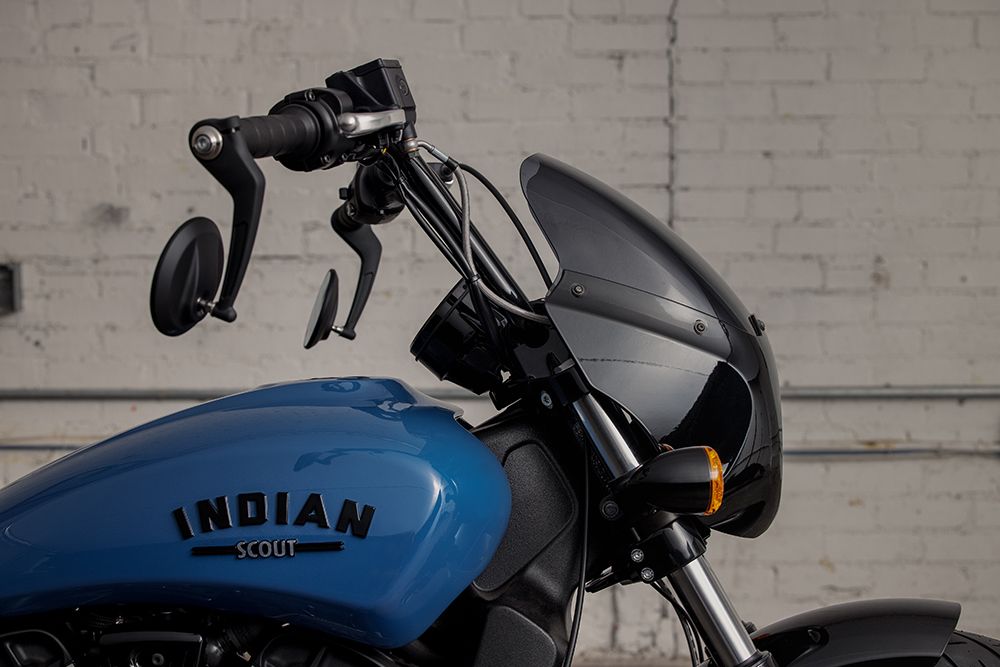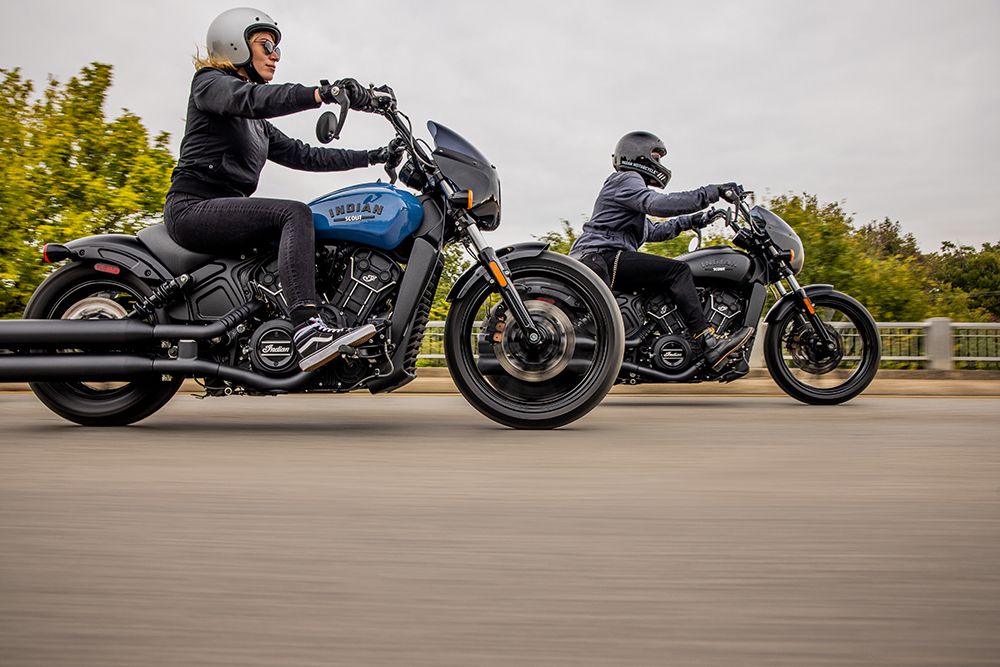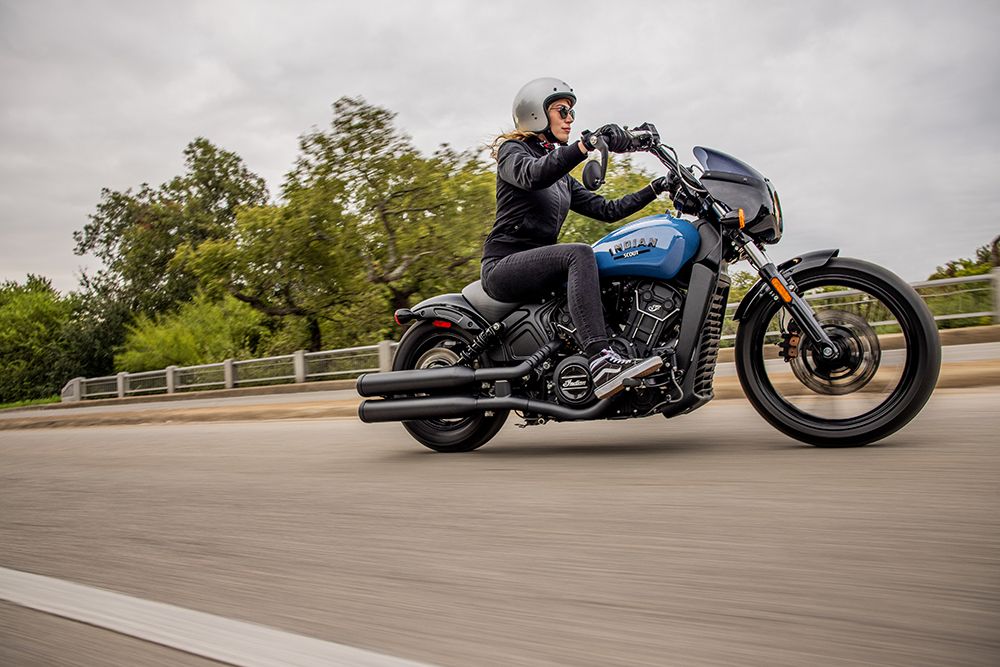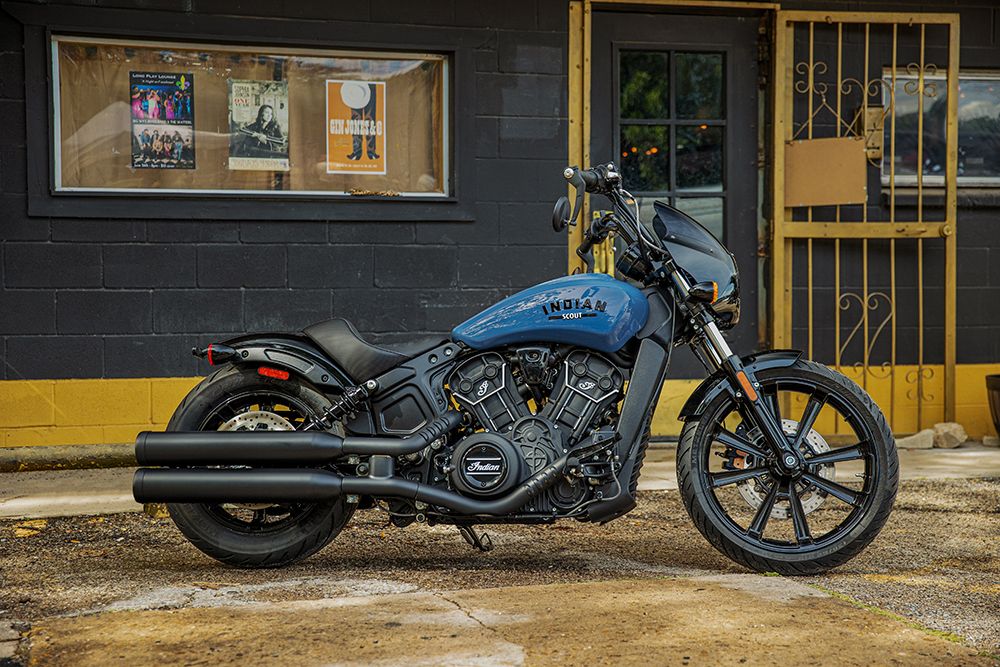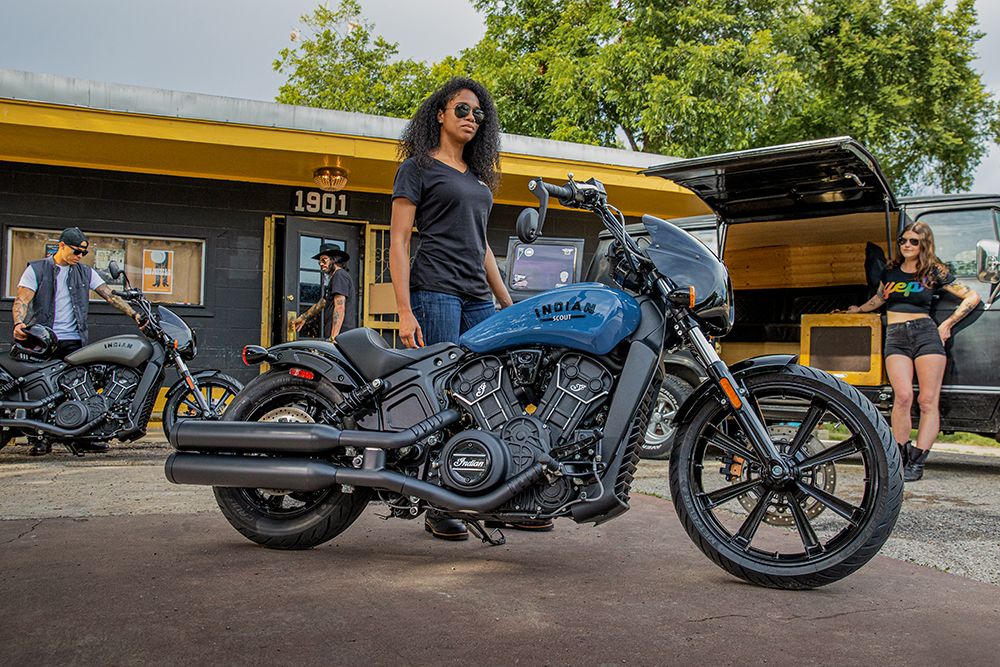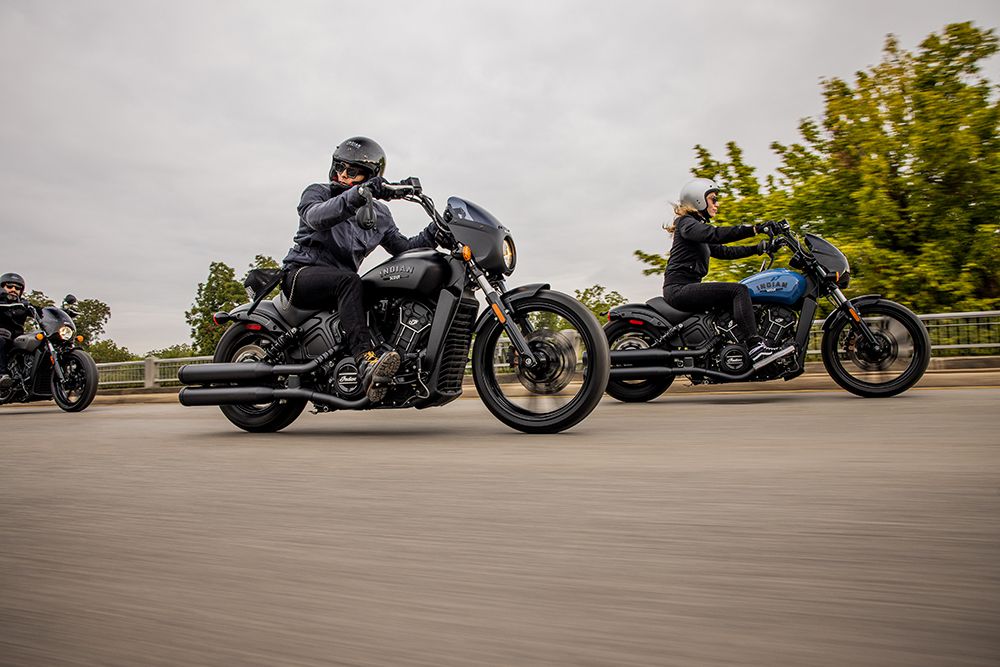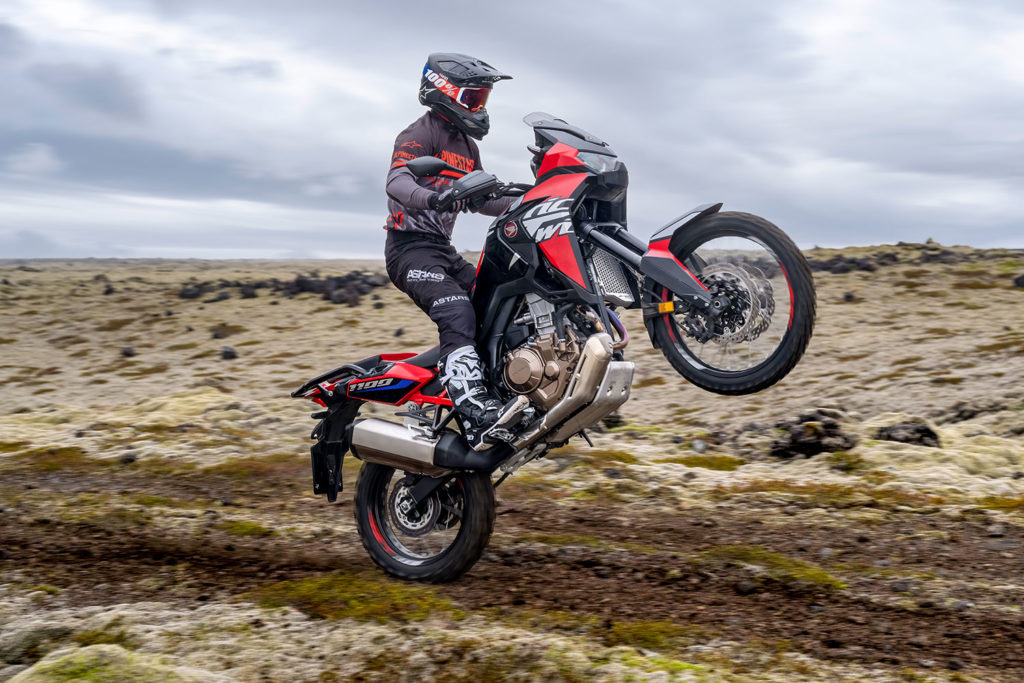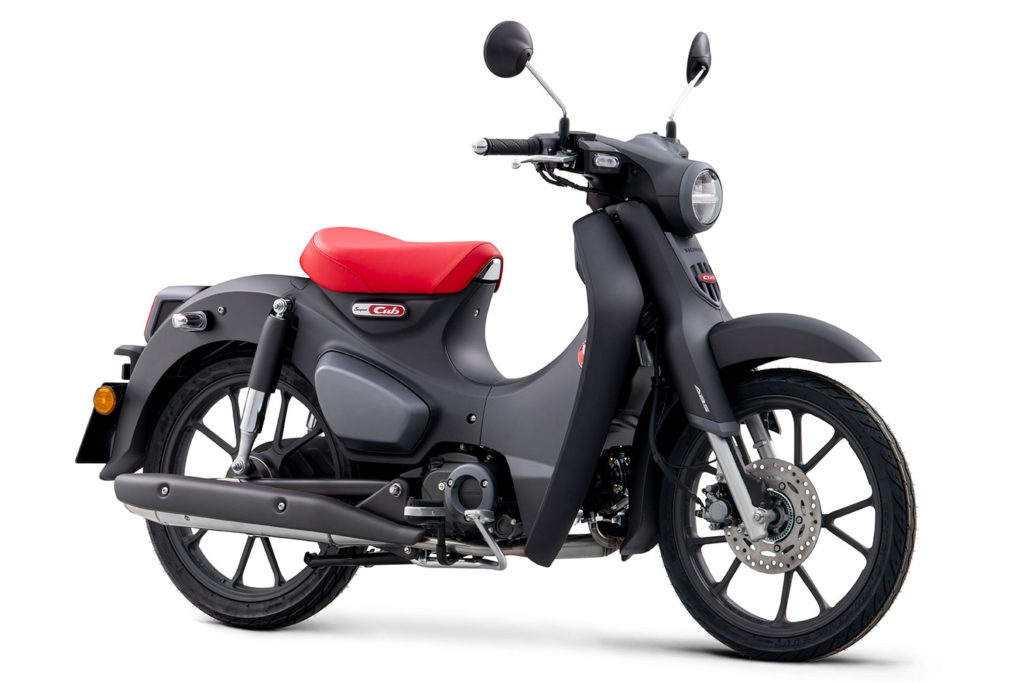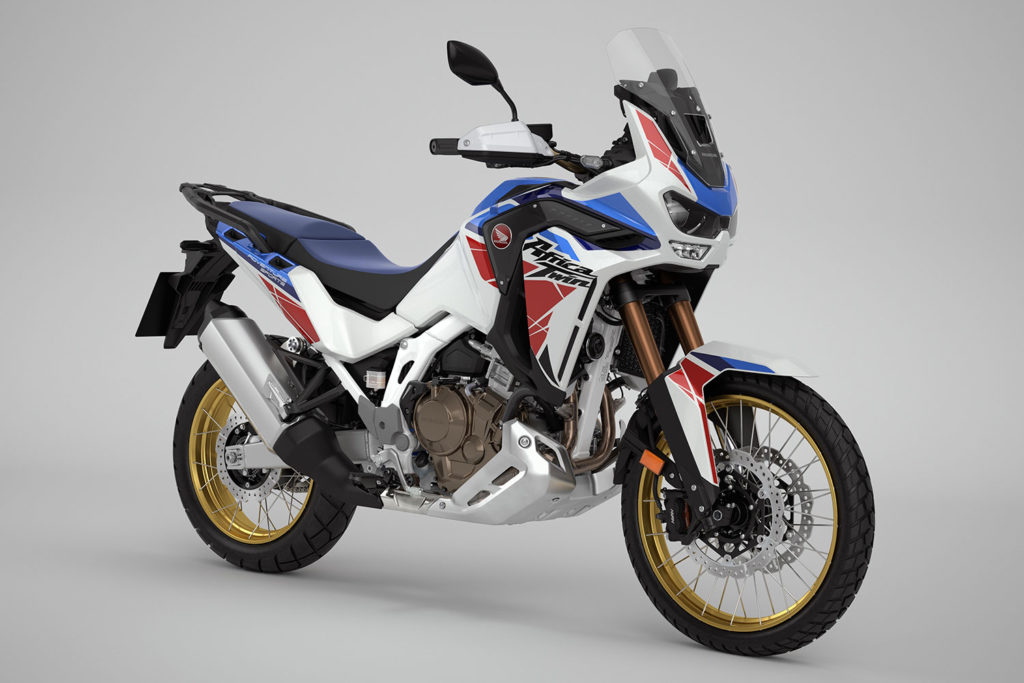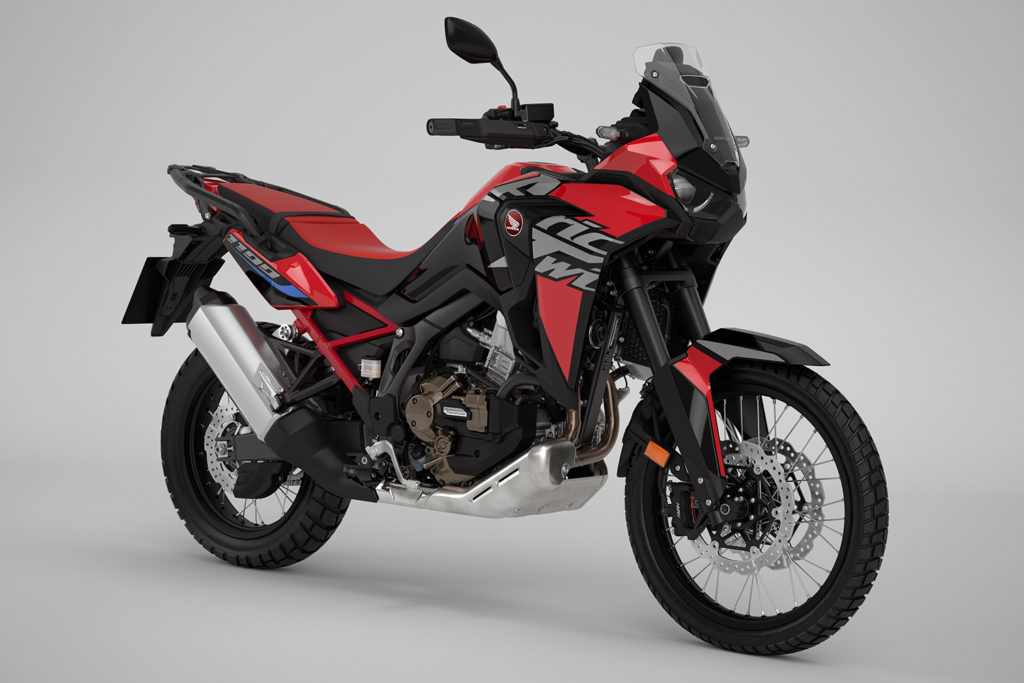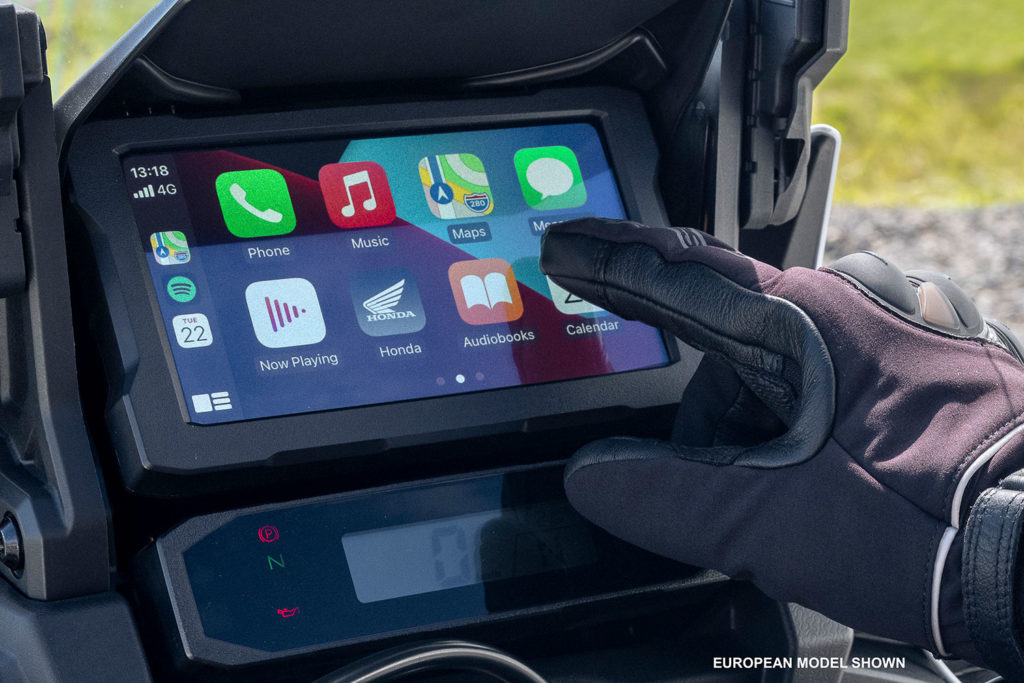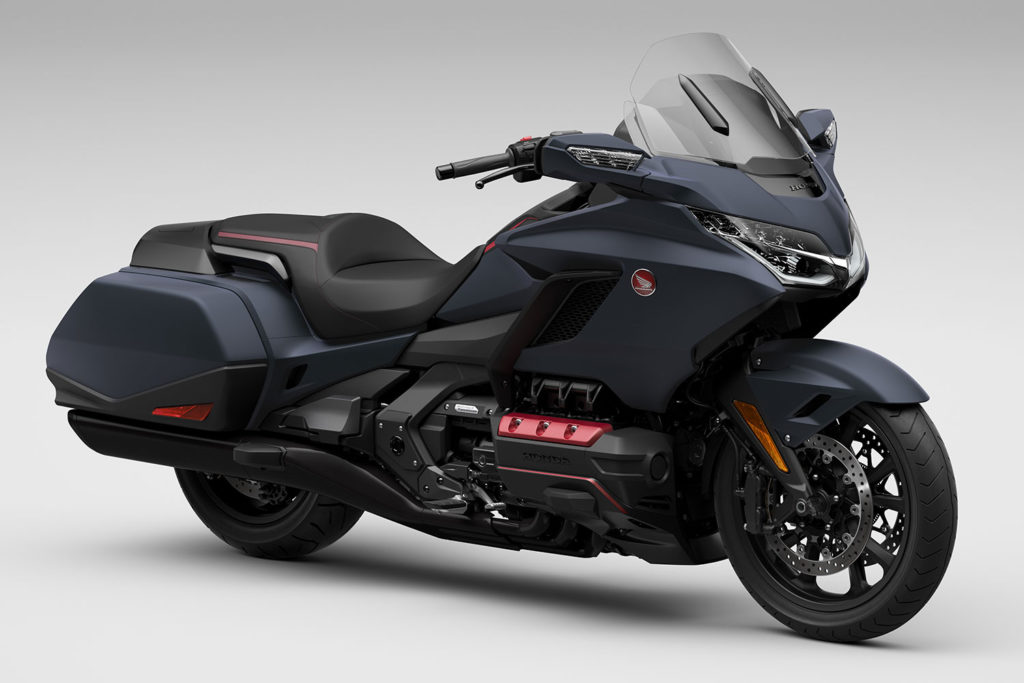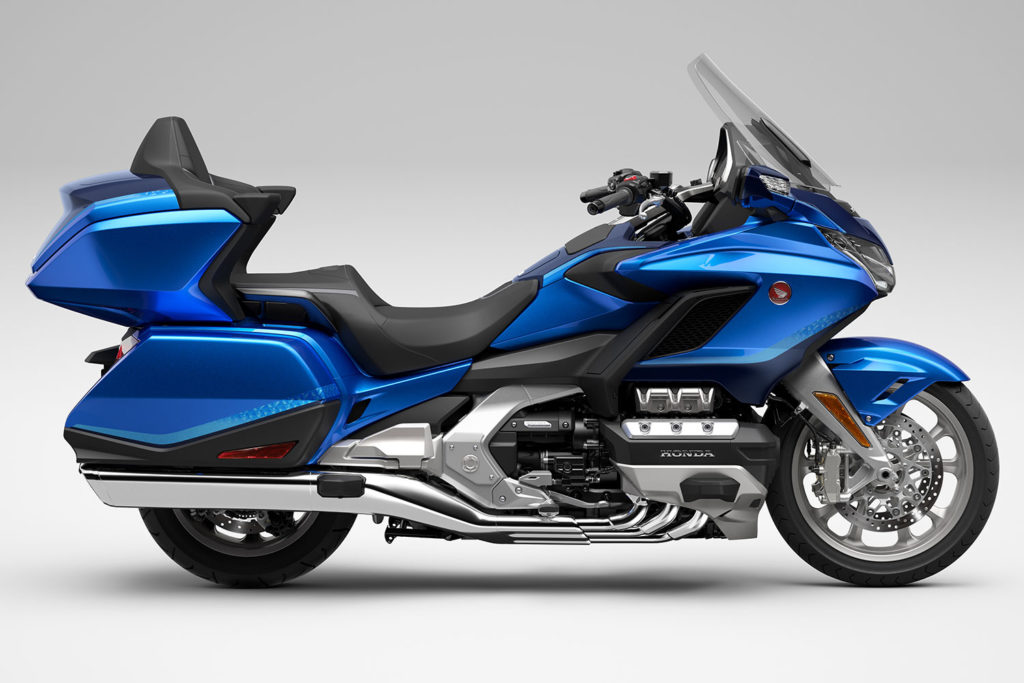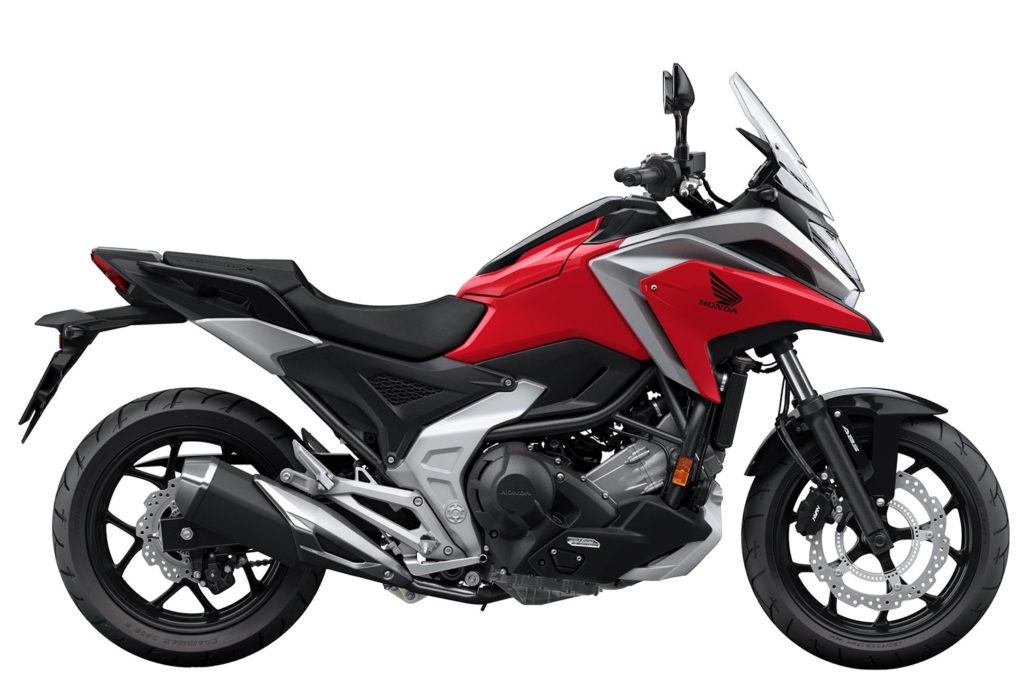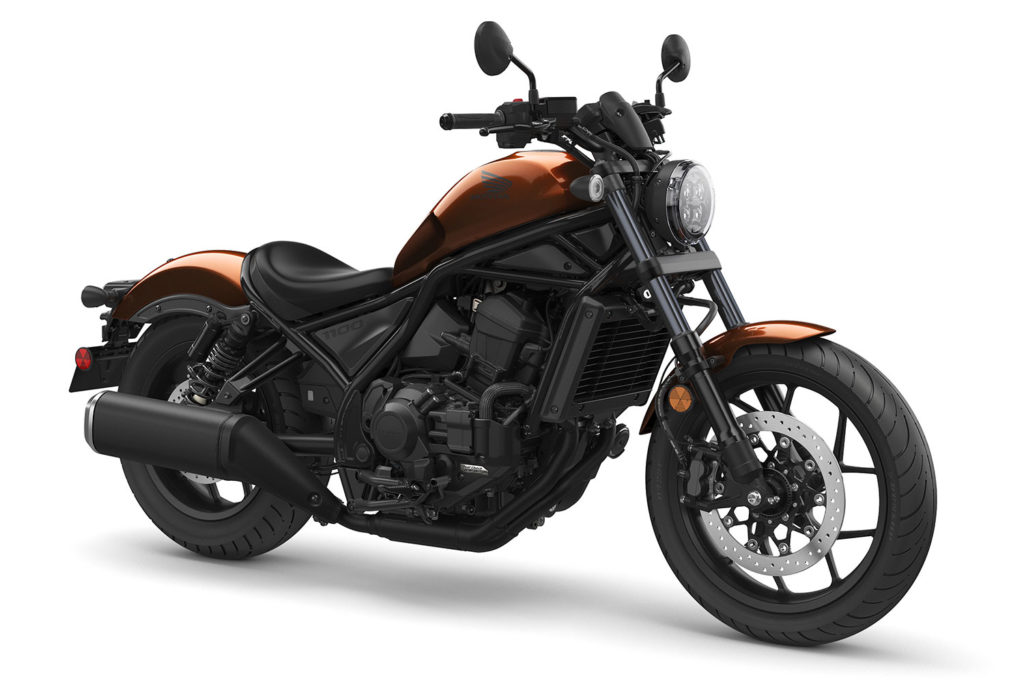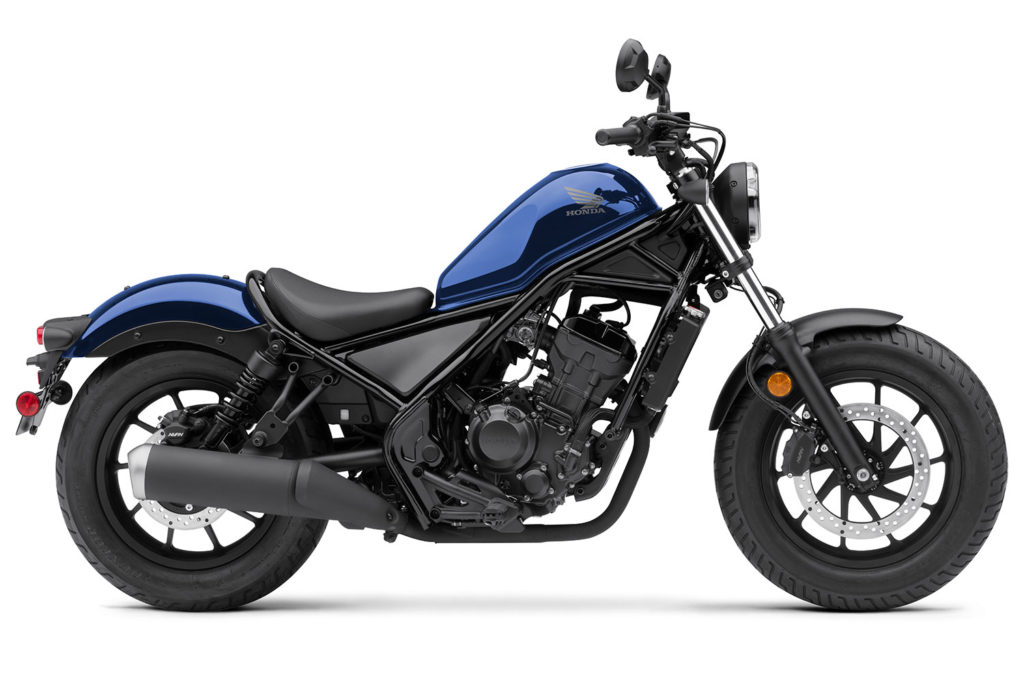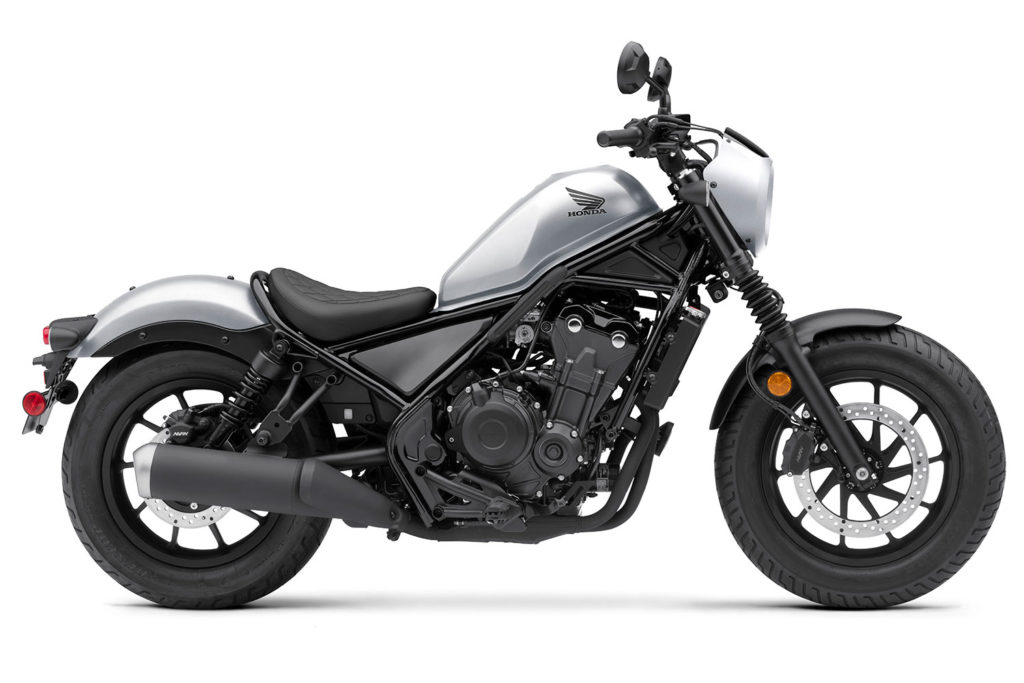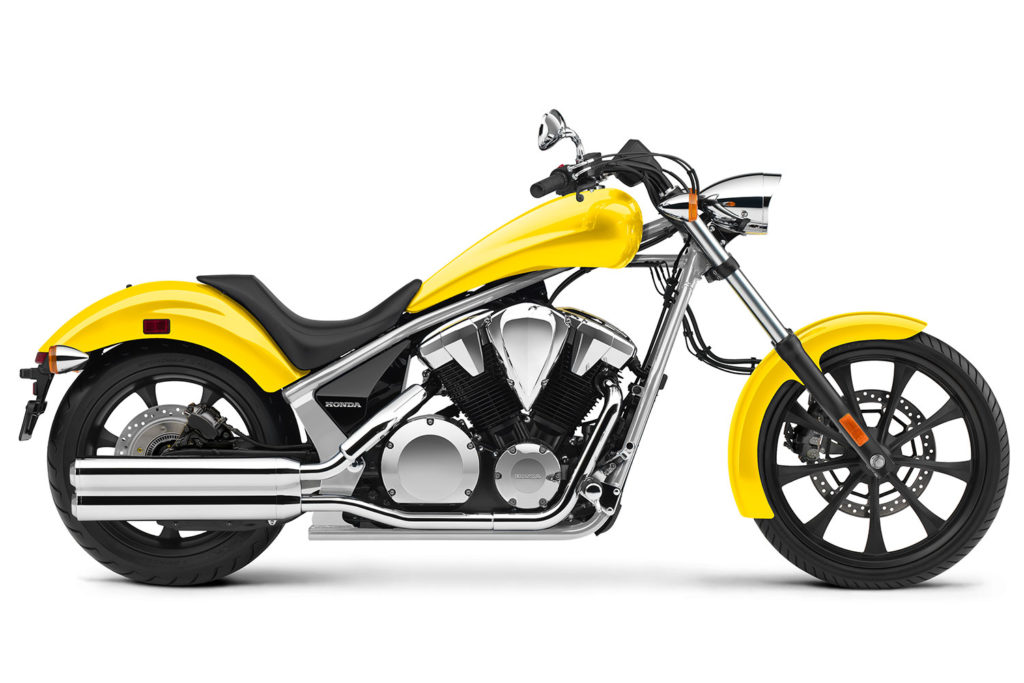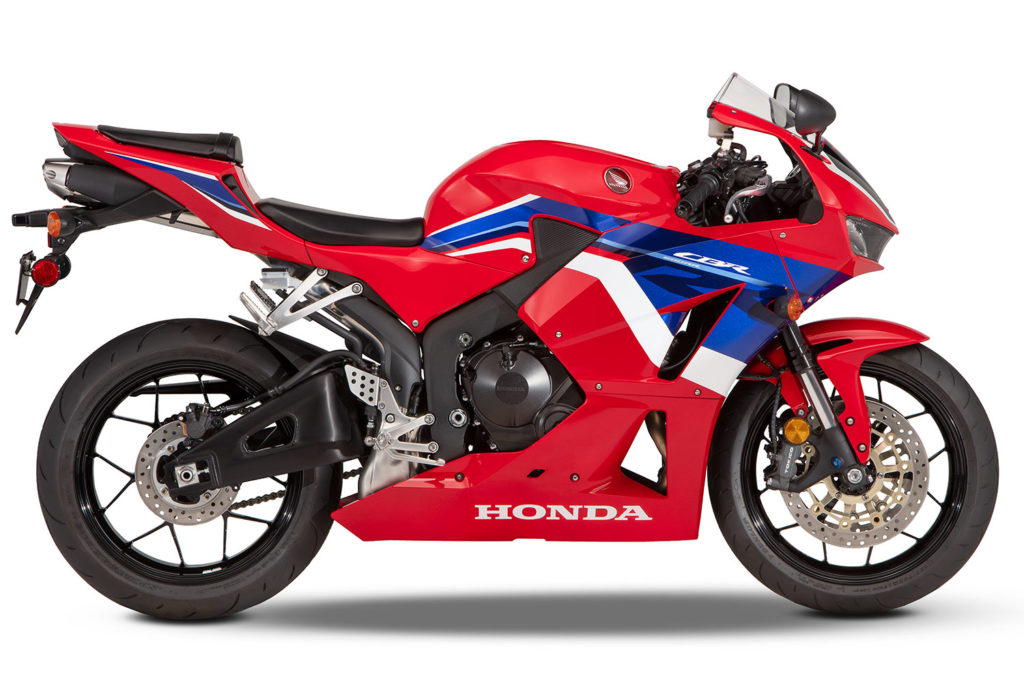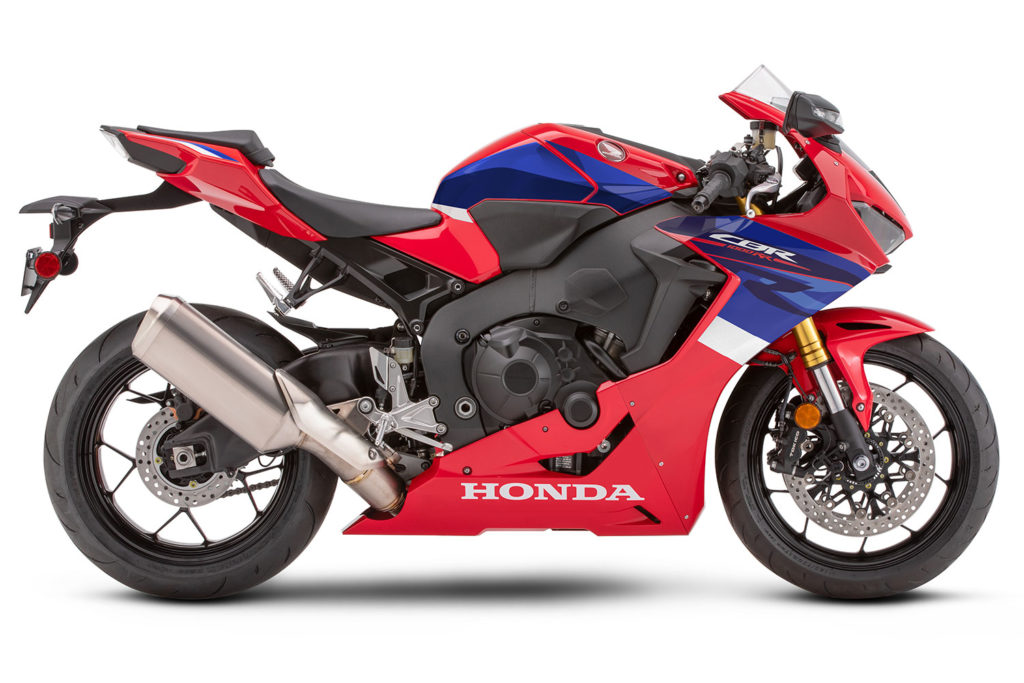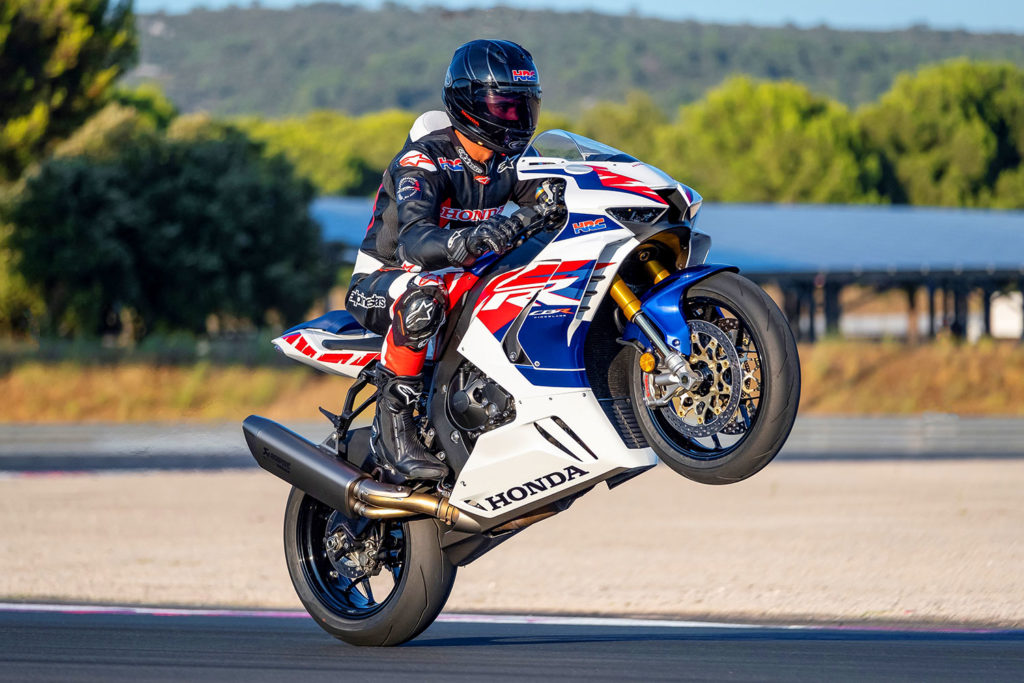
Earlier this year, Honda announced some of its returning models for the 2022 model year, including the Africa Twin, Super Cub, Gold Wing, NC750X, Rebels (300, 500, 1100), Fury, CB/R500s (CB500X, CB500F, CBR500R), CBR600RR, and CBR1000RR.
Another crop of returning 2022 models, as well as a couple for 2023, has been announced. Joining those listed above are 10 additional models in four categories, including sport, miniMOTO, dual-sport, and scooter.
Headlining the announcement is the legendary CBR1000RR-R Fireblade SP, which in 2022 adopts important new performance upgrades to celebrate the 30th anniversary of the Fireblade’s original introduction in Europe (followed a year later in the U.S.).
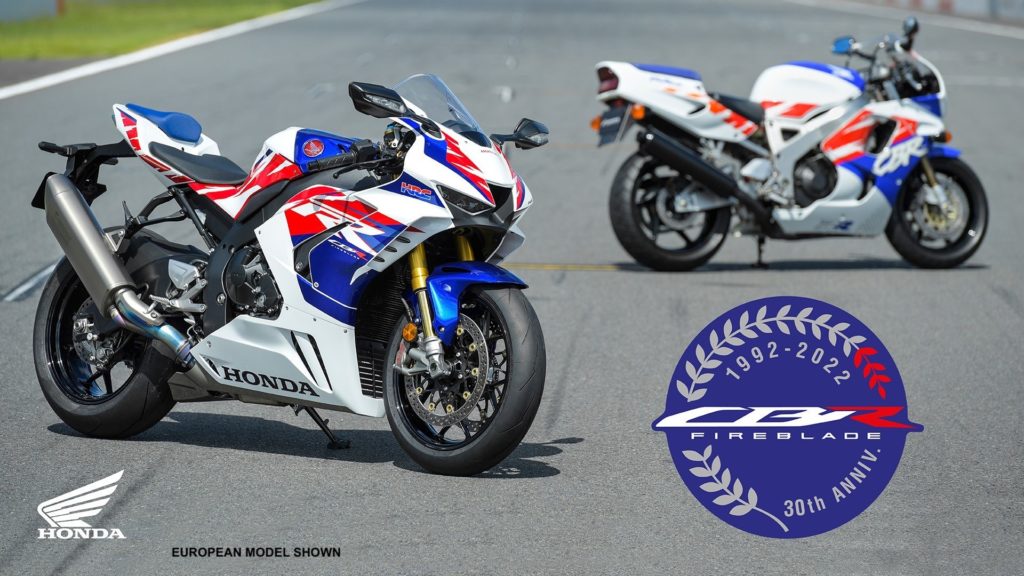
Also returning for 2022 are the CBR650R sportbike and CB650R naked bike, both of which come standard with ABS. On the miniMOTO front, the 2023 edition of the popular Grom is back, as is the 2022 edition of the retro Trail 125. The PCX also returns for 2022, continuing as the benchmark model among scooters, and joined by the 2023 Ruckus.
Three dual-sport machines were also announced – the popular CRF300L; its adventure-focused sibling, the CRF300L Rally; and the classic XR650L, the latter in a new color.
“We recognize that motorcycling comes in many forms, a fact that is reflected in today’s announcement,” said Brandon Wilson, American Honda Manager of Sports & Experiential. “The models included are each unique, but they share a commitment to delivering the enjoyment of two-wheel recreation. We’re proud of the disparate nature of the motorcycling community, and we’re happy to serve all of its members in 2022 and beyond.”
2022 Honda CBR1000RR-R Fireblade SP
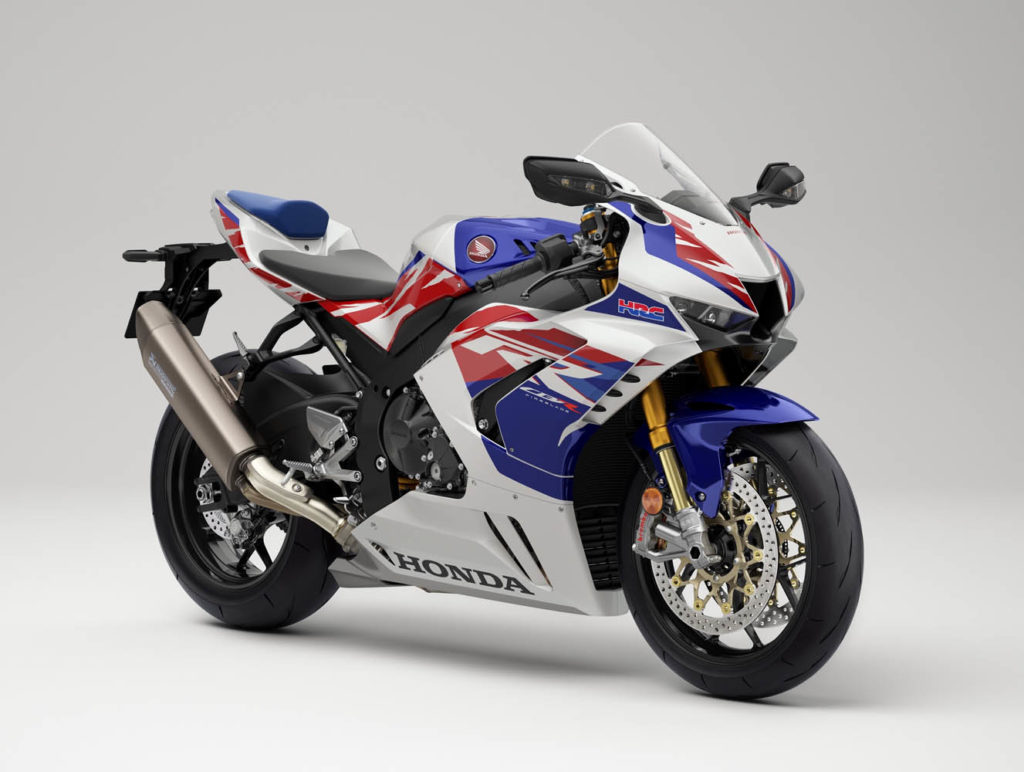
Read our 2021 Honda CBR1000RR-R Fireblade SP review
To celebrate the original, groundbreaking CBR900RR and a record of continuous challenges since the introduction of that game-changer, Honda offers a stunning 30th Anniversary version of the CBR1000RR-R Fireblade SP. For 2022, development of this model’s inline four-cylinder engine centers on mid-corner acceleration: the intake ports, airbox, airbox funnels and exhaust mid-section are all revised to deliver extra midrange power. The final-drive sprocket has gone up three teeth for stronger acceleration through each ratio, and quick-shifter performance has been upgraded. Honda Selectable Torque Control (HSTC) has also been optimized, with feedback from HRC’s riders, for refined rear-tire traction management, and throttle feel has improved even further.
The 2022 Honda CBR1000RR-R Fireblade SP will be available in Pearl White with an MSRP of $28,900, and it will be in dealerships in July 2022.
2022 Honda CBR650R
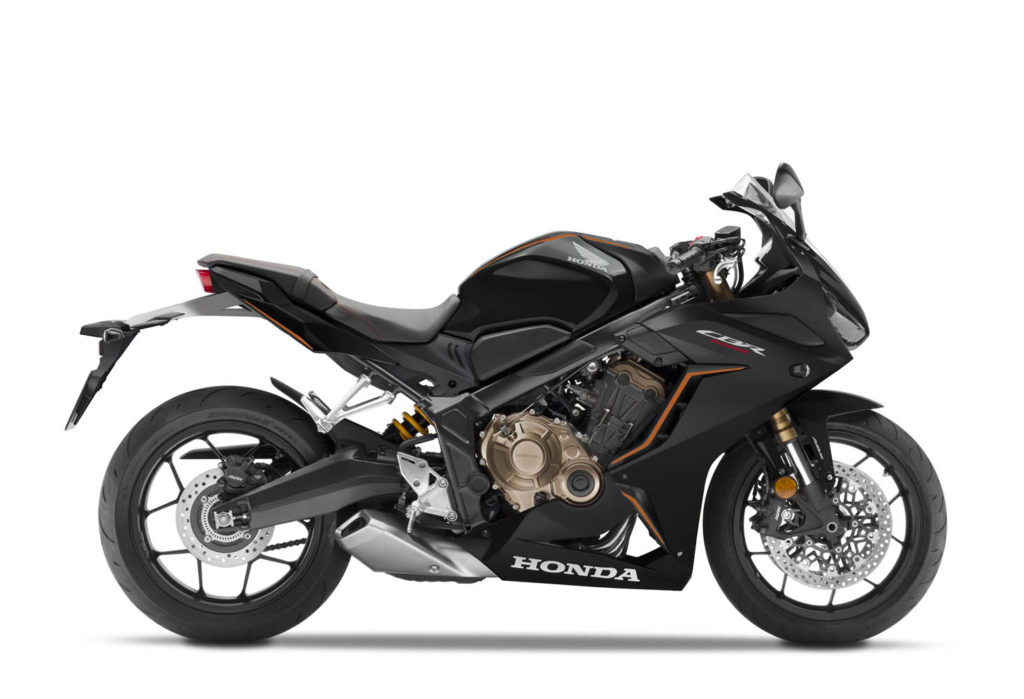
Designed to be appreciated on the street, but drawing inspiration from the supersport realm, the CBR650R excites riders with its sharp lines, complete bodywork, and corner-carving abilities, but it also delivers comfort, practicality, and value. A full-fairing sport variant of the standard CB650R, this model has a high-quality Showa Separate Function Big Piston fork, stylish aesthetics and excellent emissions performance. With a finely tuned chassis delivering light, responsive handling, and a high-revving inline 4-cylinder engine that offers enjoyable power, the CBR650R is exciting to ride and a pleasure to own, a gratifying intersection of values for the modern sportbike rider.
The 2022 Honda CBR650R will be available in Matte Black Metallic with an MSRP of $9,799, and it will be in dealerships in August 2022.
2022 Honda CB650R
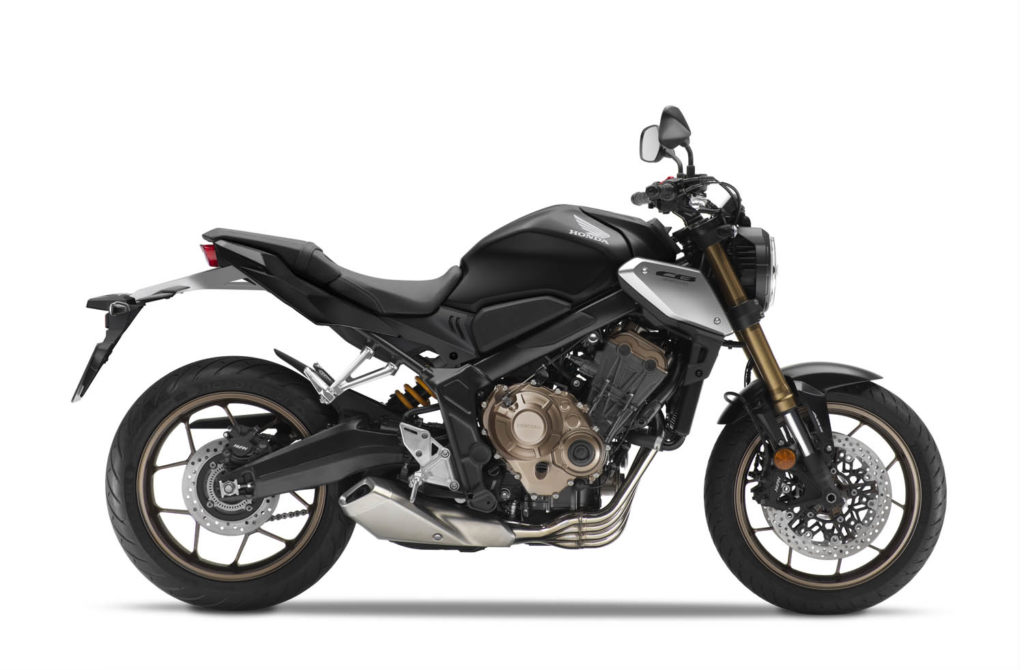
Honda’s iconic CB moniker evokes a proud legacy of middleweight machines that boast user-friendly four-cylinder engines mated to nimble, confidence-inspiring chassis. That’s also an accurate description of the CB650R, which features a Showa Separate Function Big Piston fork, excellent emissions performance, striking aesthetics, and comfortable ergonomics. Showcasing Honda’s Neo Sports Café design theme through its smooth lines and compact packaging, the CB650R is a popular and enjoyable naked bike that builds on the CB history of catering to diverse riding experiences, from daily commutes to exhilarating outings on tight, twisting backroads.
The 2022 Honda CB650R will be available in Matte Black Metallic with an MSRP of $9,299, and it will be in dealerships in September 2022.
2023 Honda Grom
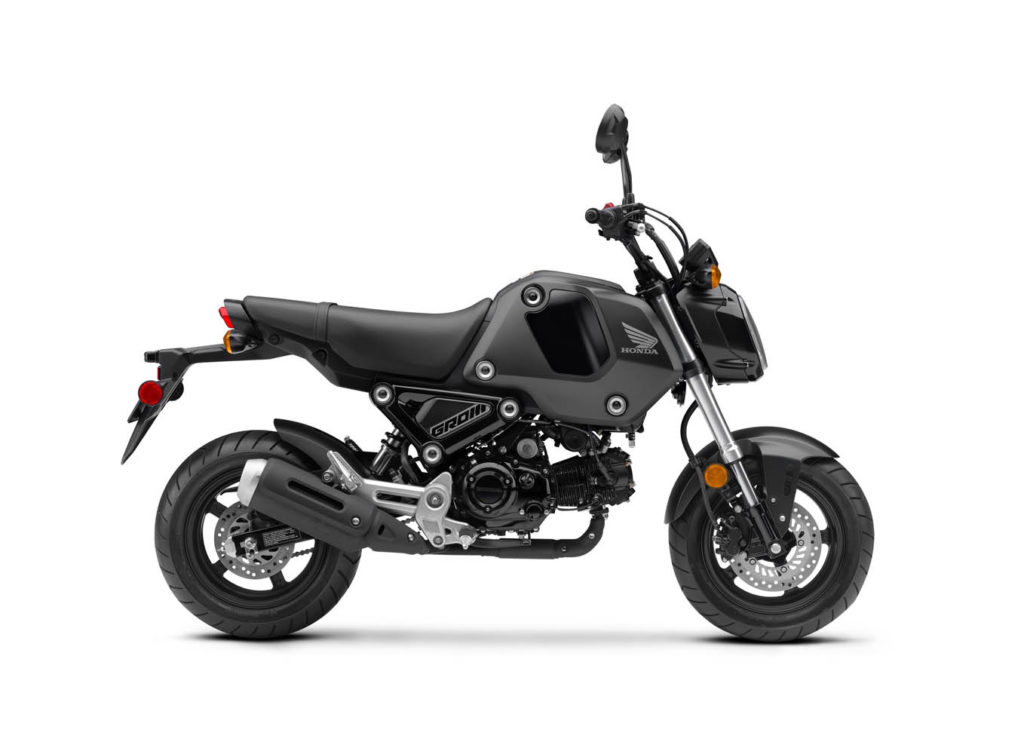
Read our 2022 Honda Grom review
The undisputed emperor of the miniMOTO world and the spawner of a vibrant subculture of fun-seekers, Honda’s Grom inspires a cross-demographic army of enthusiasts who embrace the diminutive model with remarkable passion. Its low seat height and approachability make it an unintimidating option for new riders to learn with, while its modular styling and peppy performance make it an entertaining plaything for experienced riders and a customization platform for those looking for an amusing project. It’s no wonder that the Grom continues to be one of the powersports industry’s most popular motorcycle models.
The 2023 Honda Grom will be available in Matte Black Metallic, Cherry Red, and Force Silver Metallic for the non-ABS model (MSRP is $3,499) and Pearl White for the ABS model (MSRP is $3,799). It will be in dealerships in April 2022.
2022 Honda Trail 125
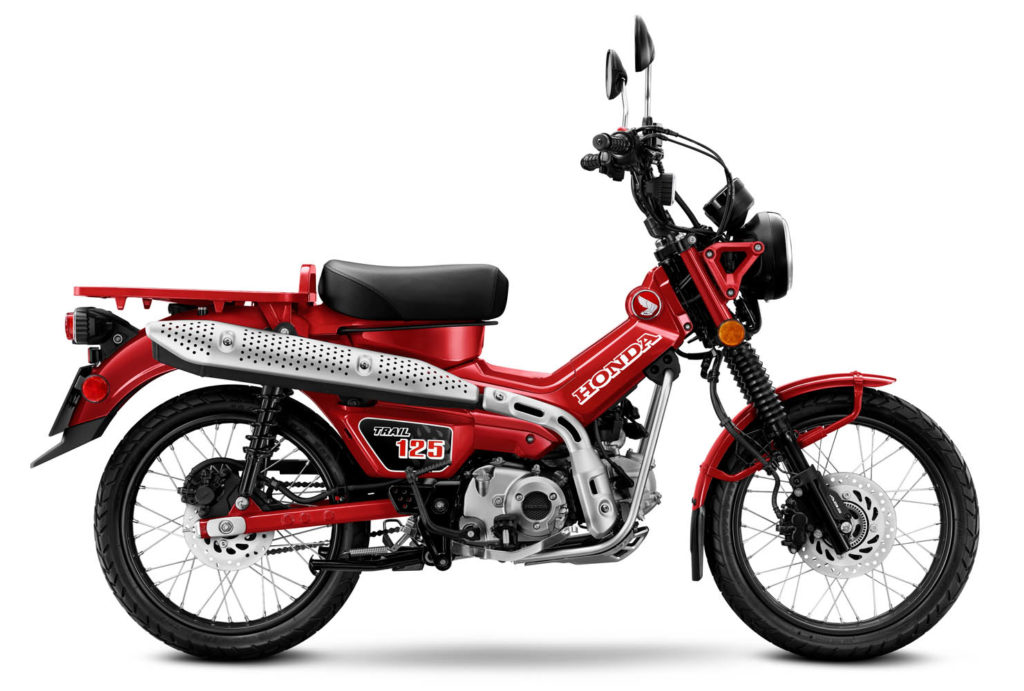
Read our 2021 Honda Trail 125 review
When it comes to fun, approachable, popular miniMOTO models, no manufacturer even comes close to Honda, and the Trail 125 is a prime example of one such machine that also pays tribute to the past. The model harkens back to a golden era of motorcycling when there was seemingly a CT model on the bumper rack of every motor home but, like Honda’s nostalgic Monkey and Super Cub, it also incorporates the modern joys of practical design and hassle-free technology. Compared to the urban-focused Super Cub on which it is based, the Trail 125 has a number of rugged upgrades, making it ideal for casual trekking on- and off-road.
The 2022 Honda Trail 125 will be available in Glowing Red with an MSRP of $3,999, and it will be in dealerships in April 2022.
2022 Honda CRF300L
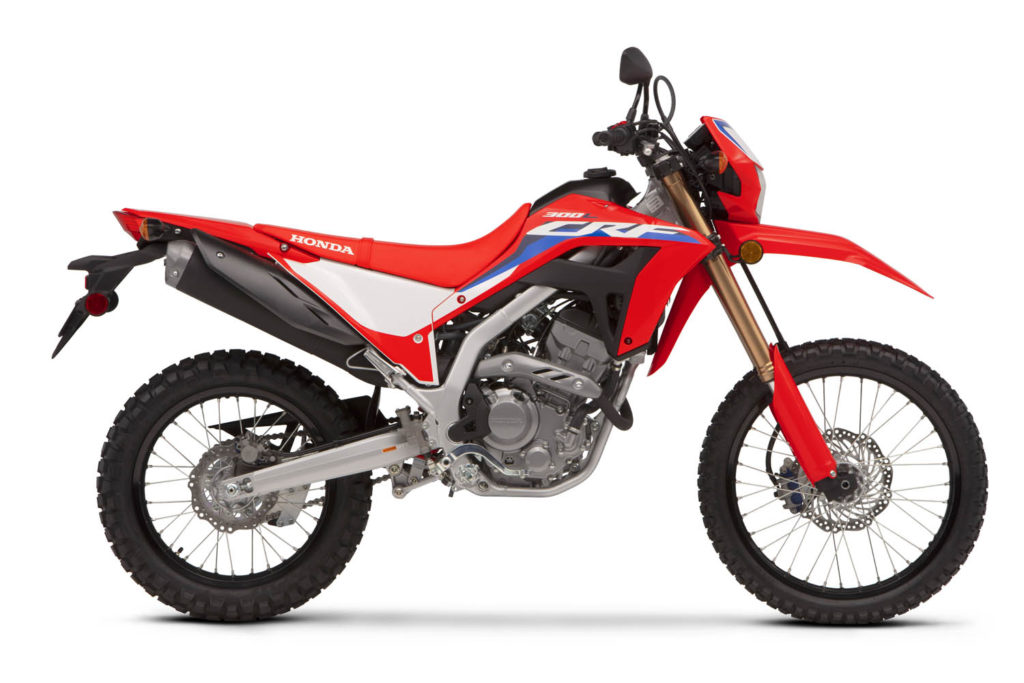
Read our 2021 Honda CRF300L / CRF300L Rally review
The motorcycle industry’s top-selling dual-sport model, the CRF300L boasts strong power, low weight and excellent on- and off-road performance, while also delivering unparalleled value, reliability, and styling. The model has a broad powerband, predictable handling, and aesthetic cues that are carried over from Honda’s CRF Performance line, and it’s available in standard and ABS versions, both of which are ready to provide low-cost transportation and true dual-sport adventure.
The 2022 Honda CRF300L will be available in Red with an MSRP of $5,349 without ABS and $5,649 with ABS. It will be in dealerships in April 2022.
2022 Honda CRF300L Rally
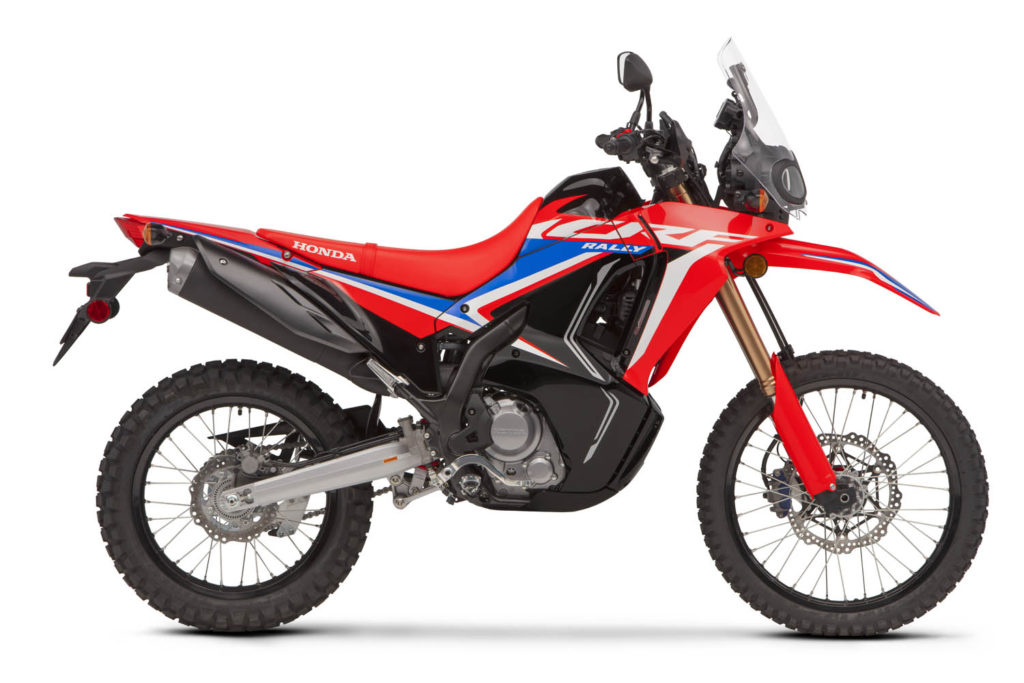
Read our 2021 Honda CRF300L / CRF300L Rally review
Based on the standard CRF300L, but with comfort-focused upgrades including handguards, more fuel capacity, and a frame-mounted windscreen, the CRF300L Rally evokes images of the Dakar Rally while delivering practicality and value. More suitable for long-distance adventuring than its standard sibling, the Rally version is also a stellar commuter.
The 2022 Honda CRF300L Rally will be available in Red with an MSRP of $6,099 without ABS and $6,399 with ABS. It will be in dealerships in April 2022.
2022 Honda XR650L
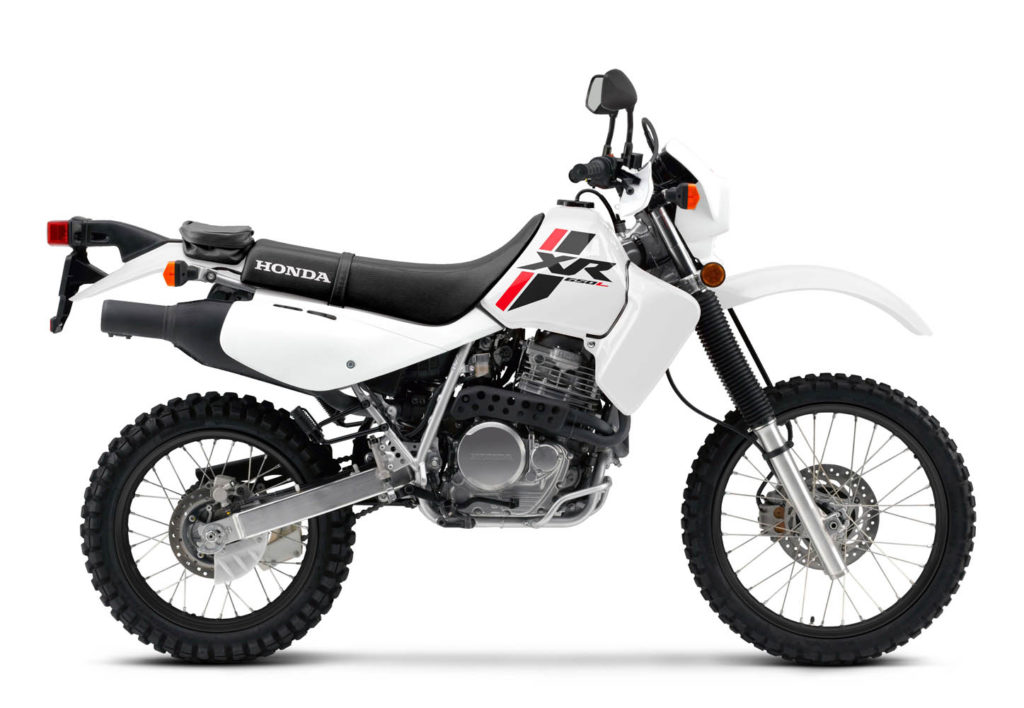
Yes, the XR650L has been a familiar part of Honda’s lineup for many years, but there’s a reason the tried-and-true dual-sport model continues to be popular with customers. It’s highly adaptable, opening the door to adventure on single-track trails, dirt roads, and backroads, while also delivering capable transportation in the city. The natural result of those characteristics – plus a proud Baja heritage – is a diehard following of riders, who will be pleased to know that the model has received a styling facelift for 2022.
The 2022 Honda XR650L will be available in White with an MSRP of $6,999, and it will be in dealerships in April 2022.
2022 Honda PCX
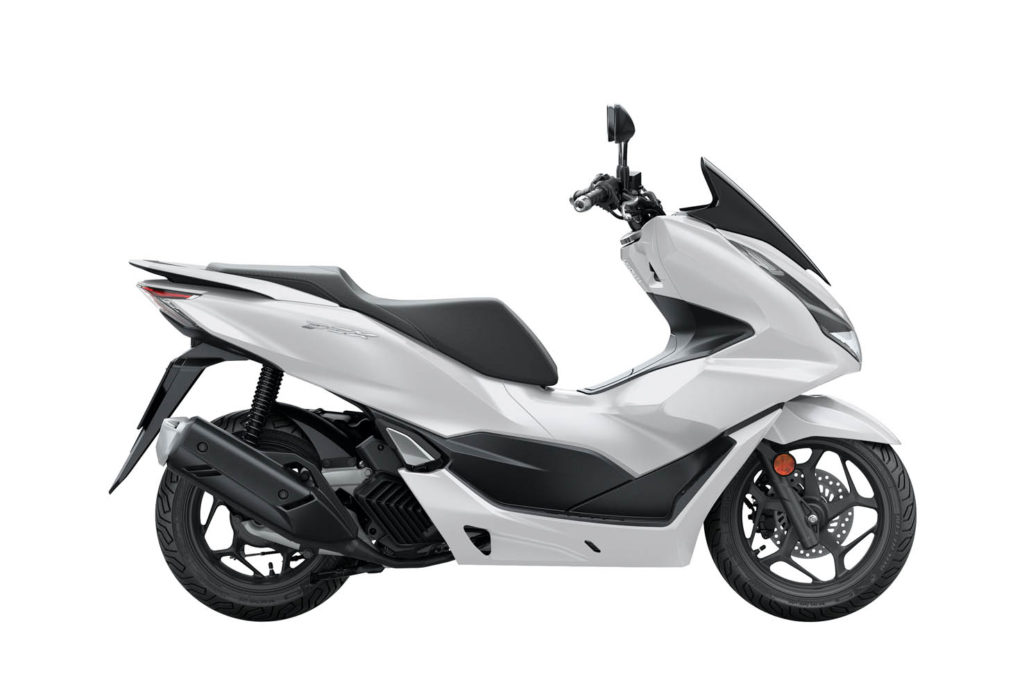
Honda’s PCX is the ultimate tool for tackling urban environments in style, continuing to set the standard for scooter design and technology. Equipped with a freeway-capable engine, the PCX is equally suitable for new riders and more experienced customers, delivering performance, fuel economy, great handling, a comfortable ride, and simple operation – all attributes that are vital in the scooter category.
The 2022 Honda PCX will be available in Pearl White with an MSRP of $3,899 without ABS and $4,099 with ABS. It will be in dealerships in April 2022.
2023 Honda Ruckus
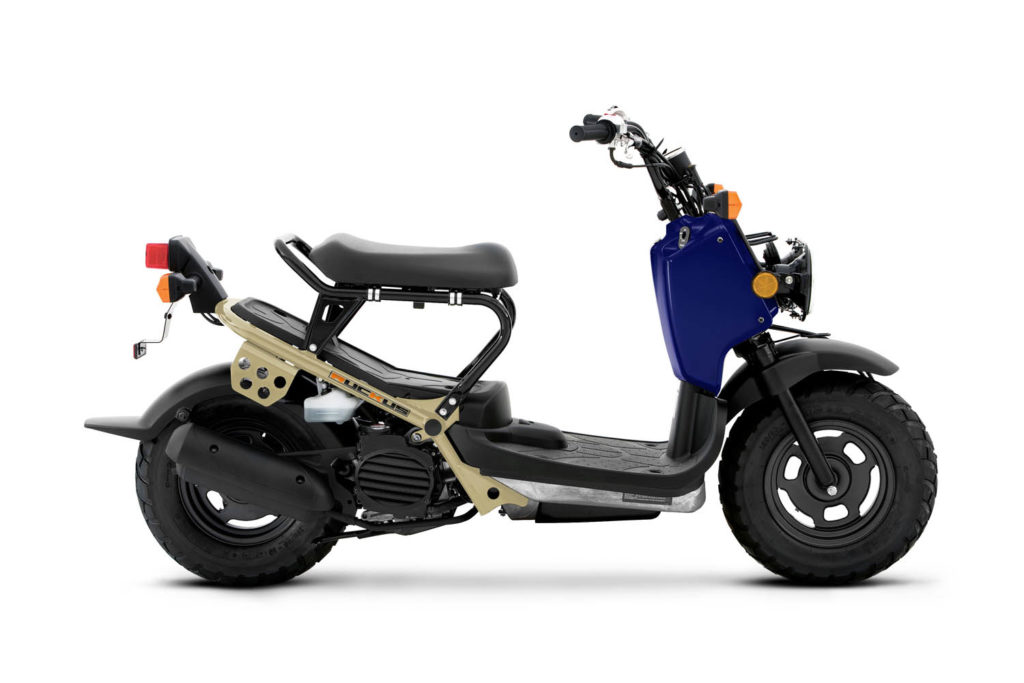
When it comes to little two-wheelers that ooze personality and attitude, it’s tough to top Honda’s unique Ruckus, the model that launched an entire scooter-customization subculture. With an exposed frame and dual round headlights contributing to an industrial-looking design, plus practical features like reliability, fuel efficiency, and nimble handling, the Ruckus a great choice as a platform for personalization or affordable, around-town transportation.
The 2023 Honda Ruckus will be available in Gray, White/Metallic Blue, and Metallic Blue/Tan with an MSRP of $2,899, and it will be in dealerships in April 2022.
For more information or to find a Honda dealer near you, visit powersports.honda.com.
The post Honda Announces 2022-2023 Returning Models first appeared on Rider Magazine.
Source: RiderMagazine.com

